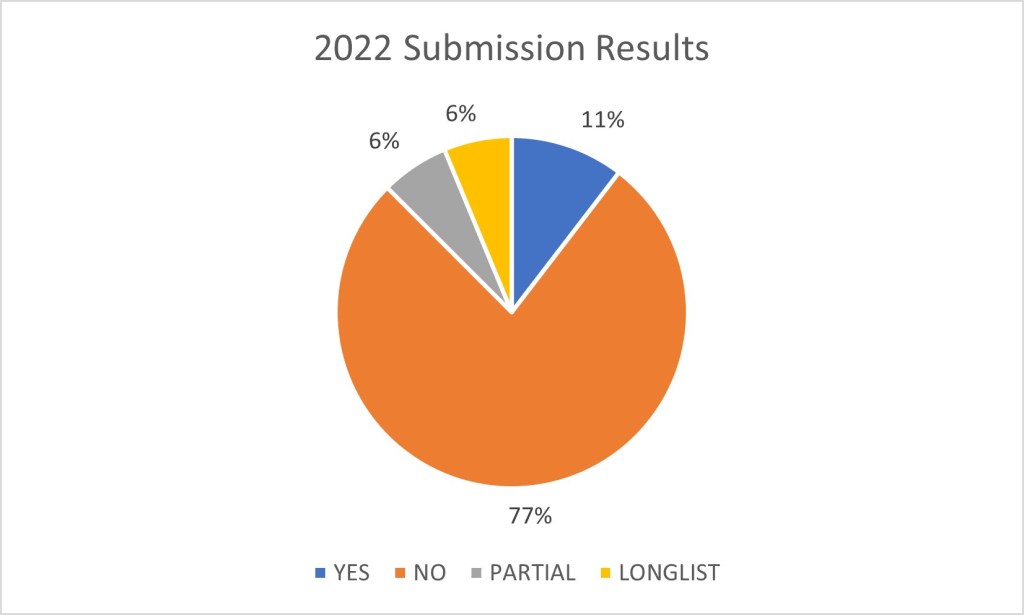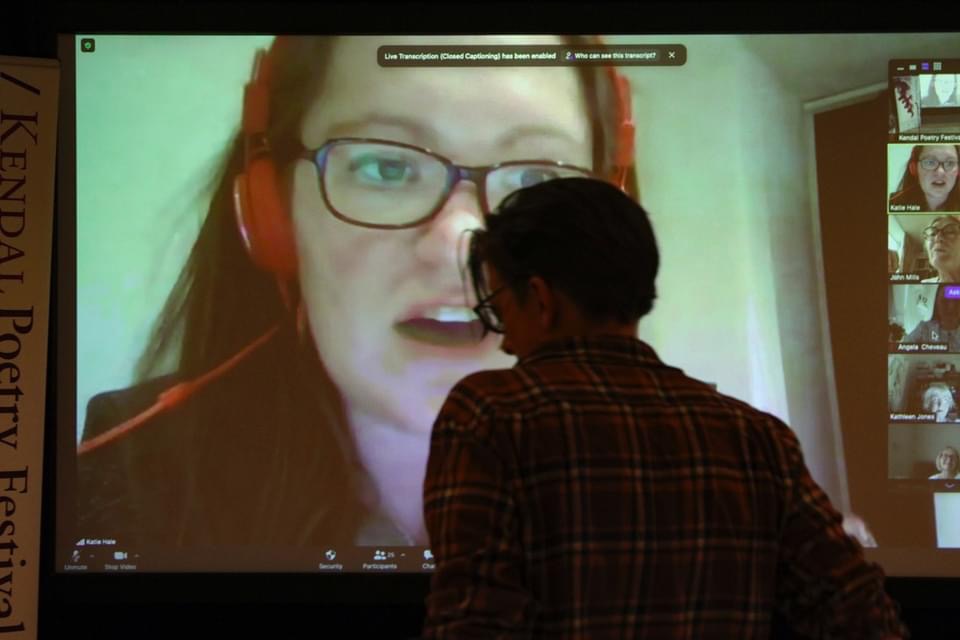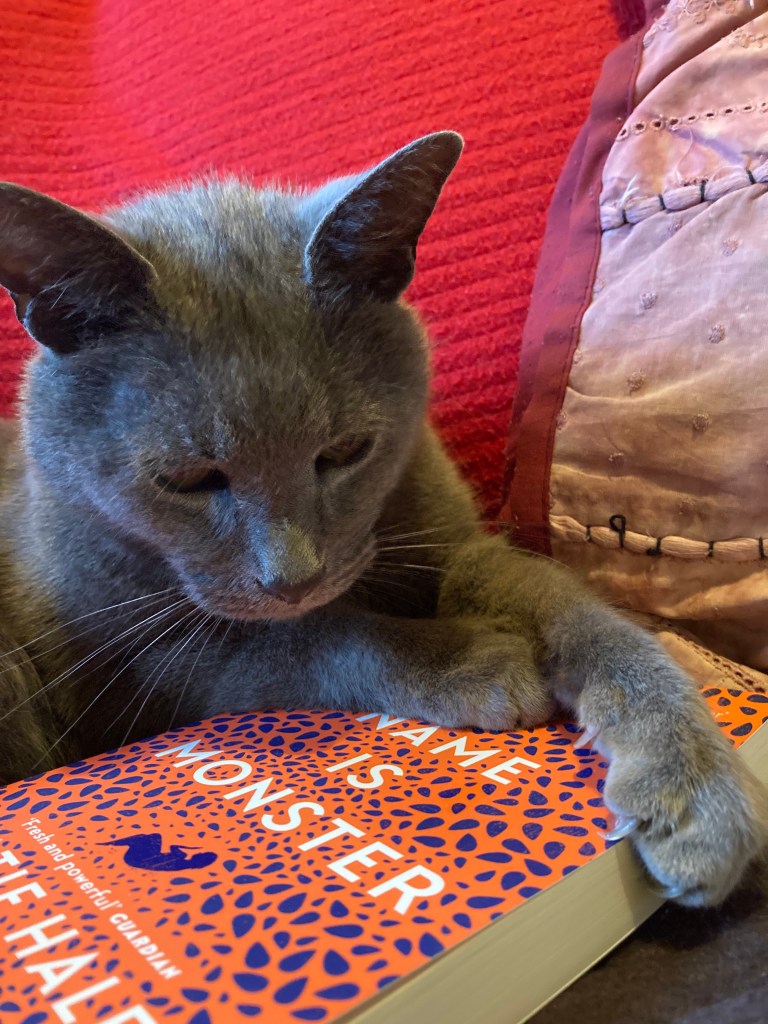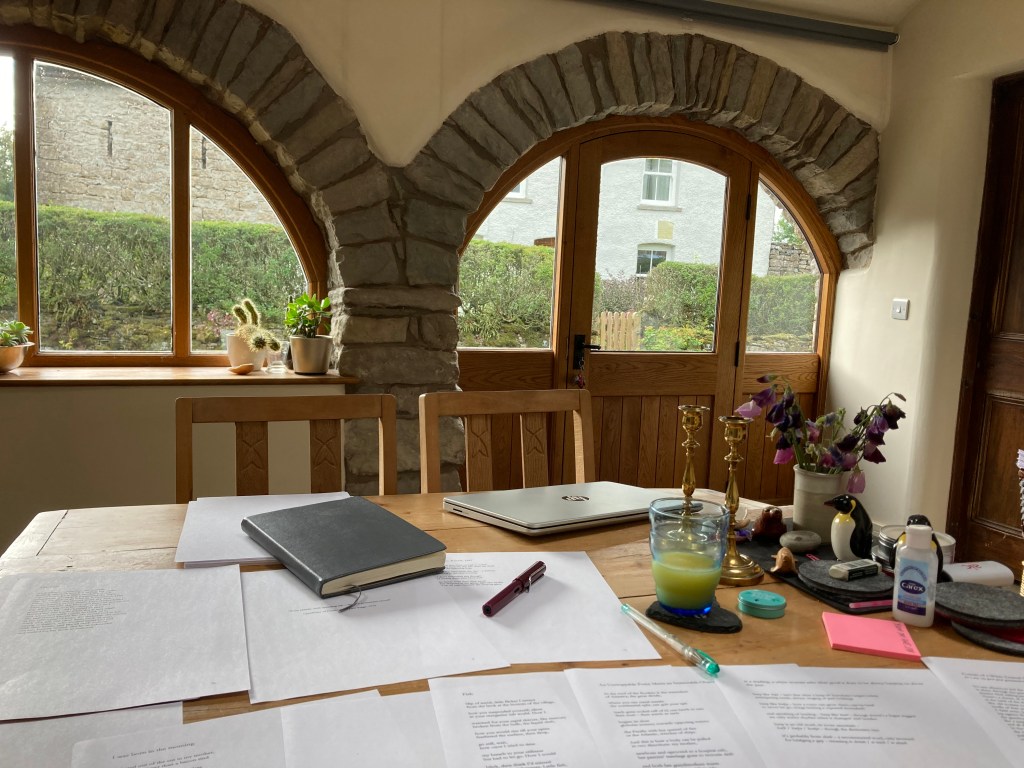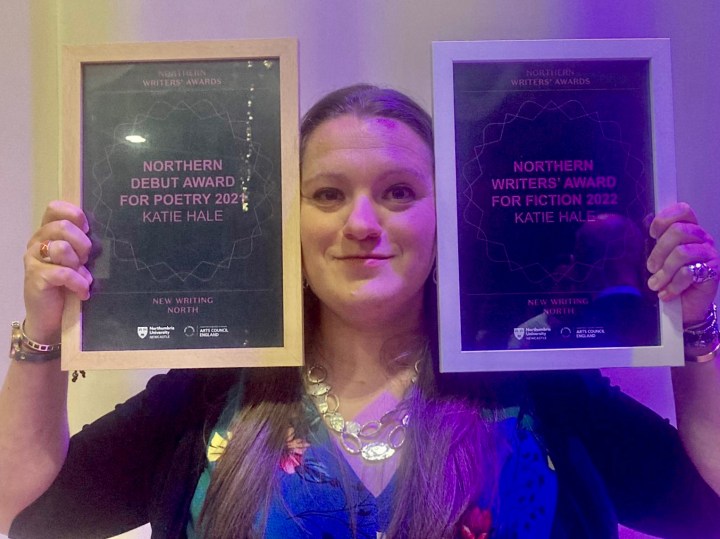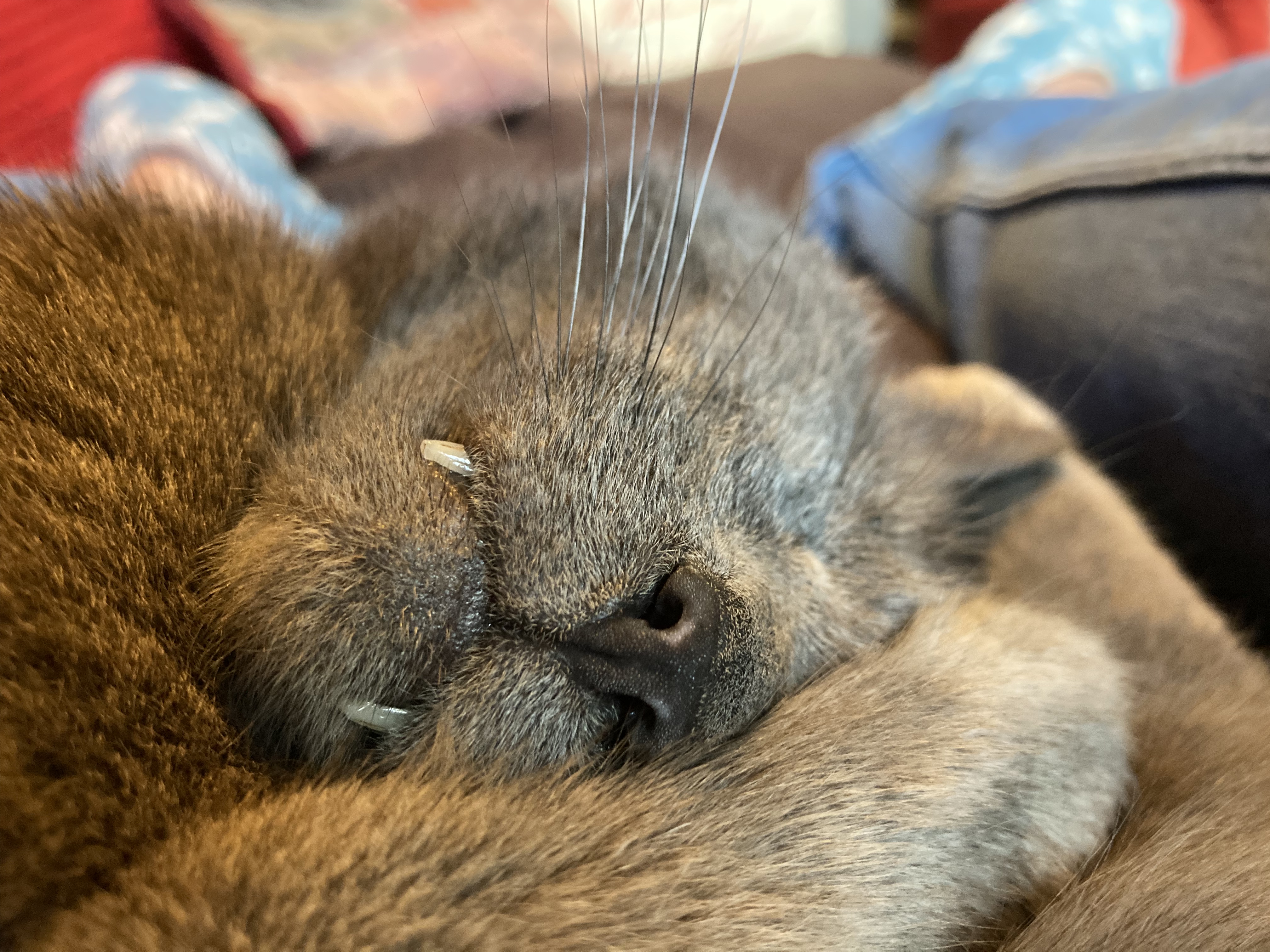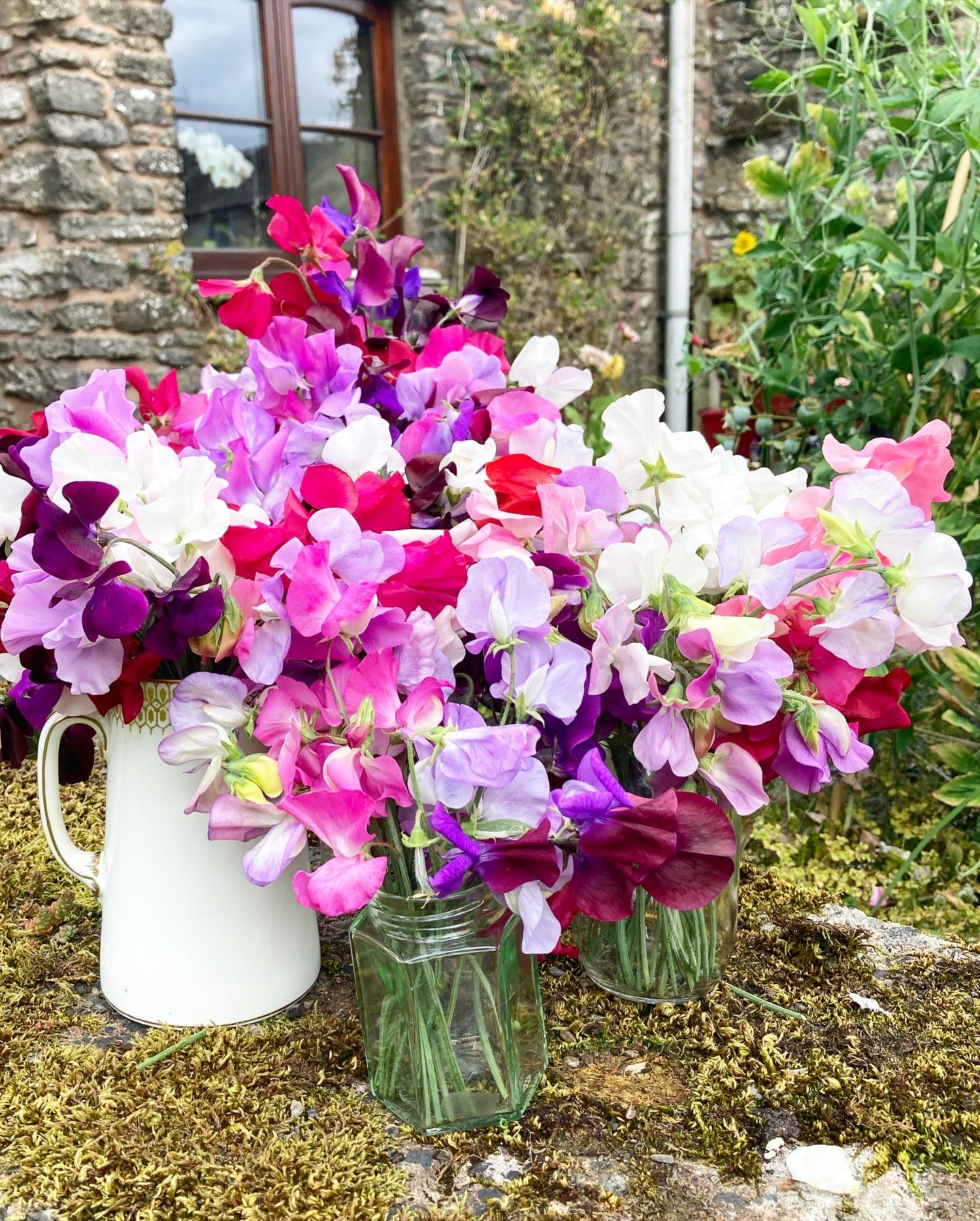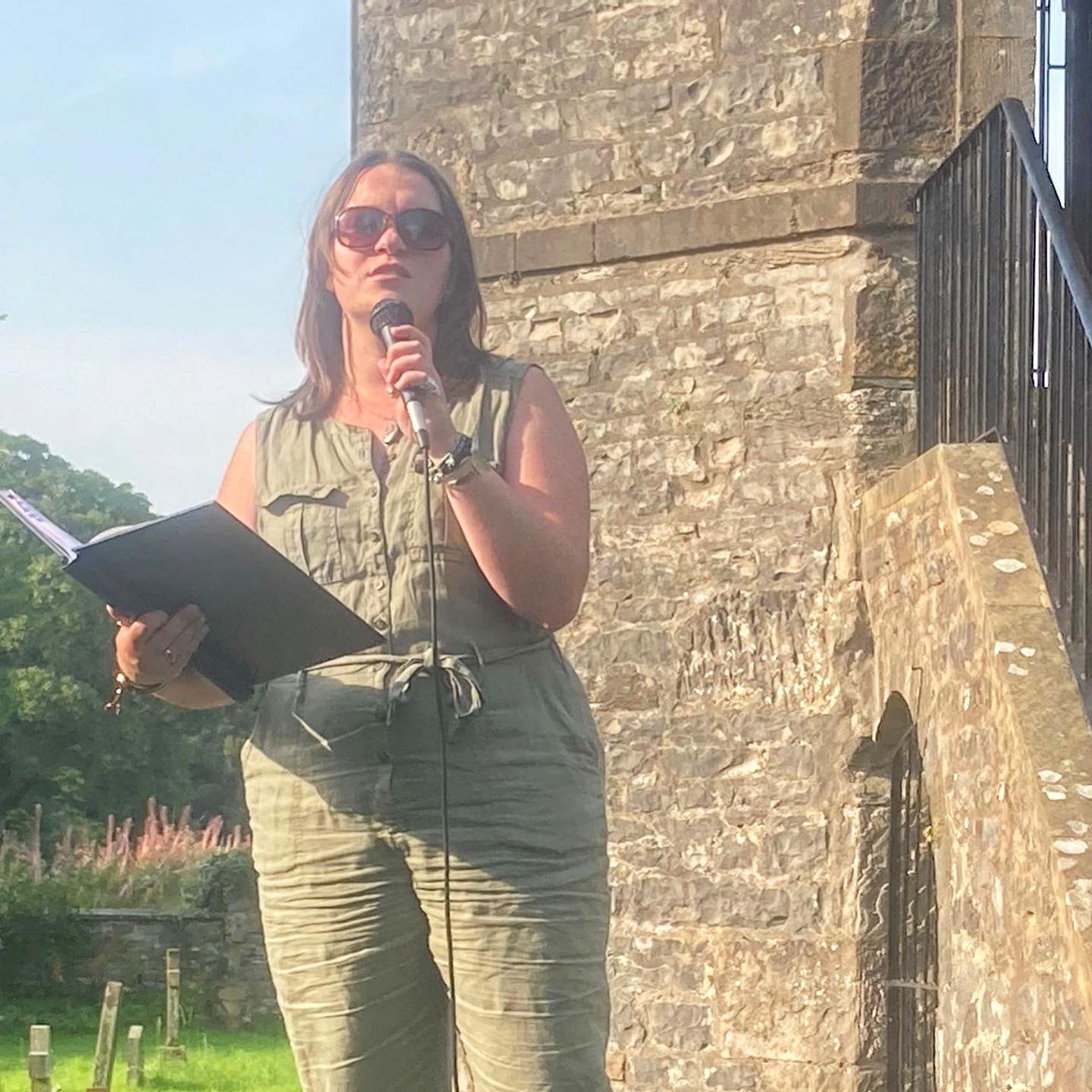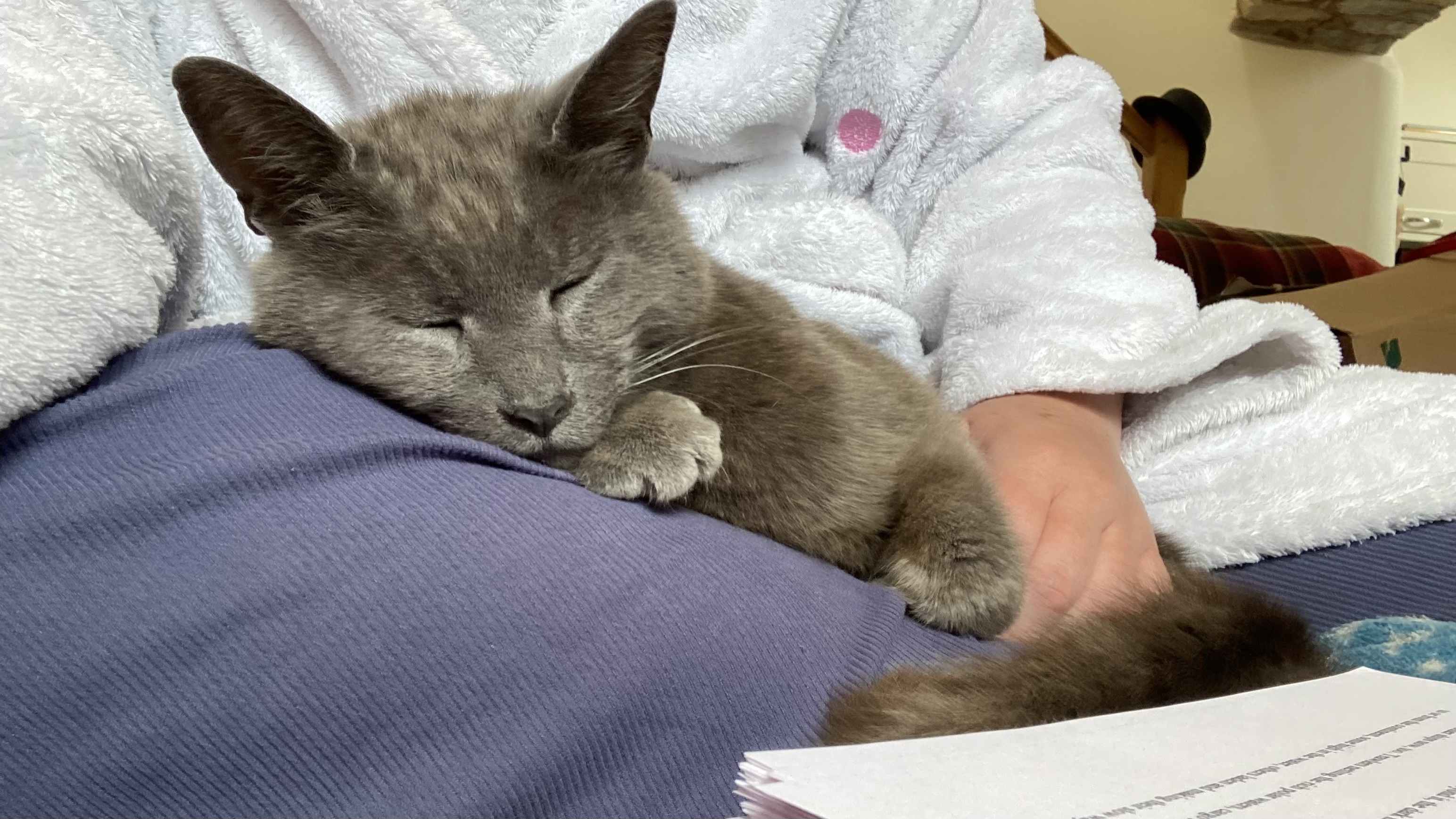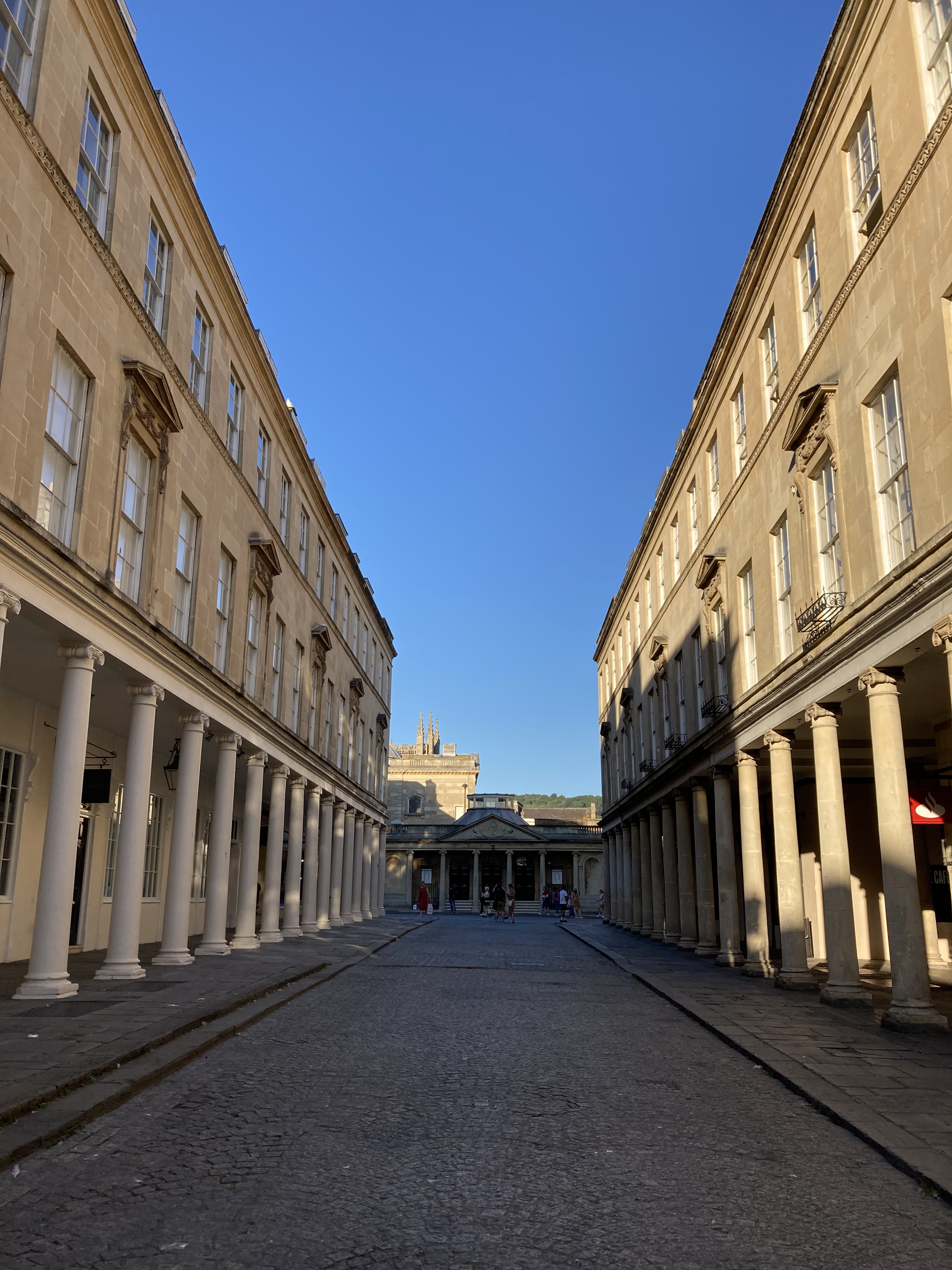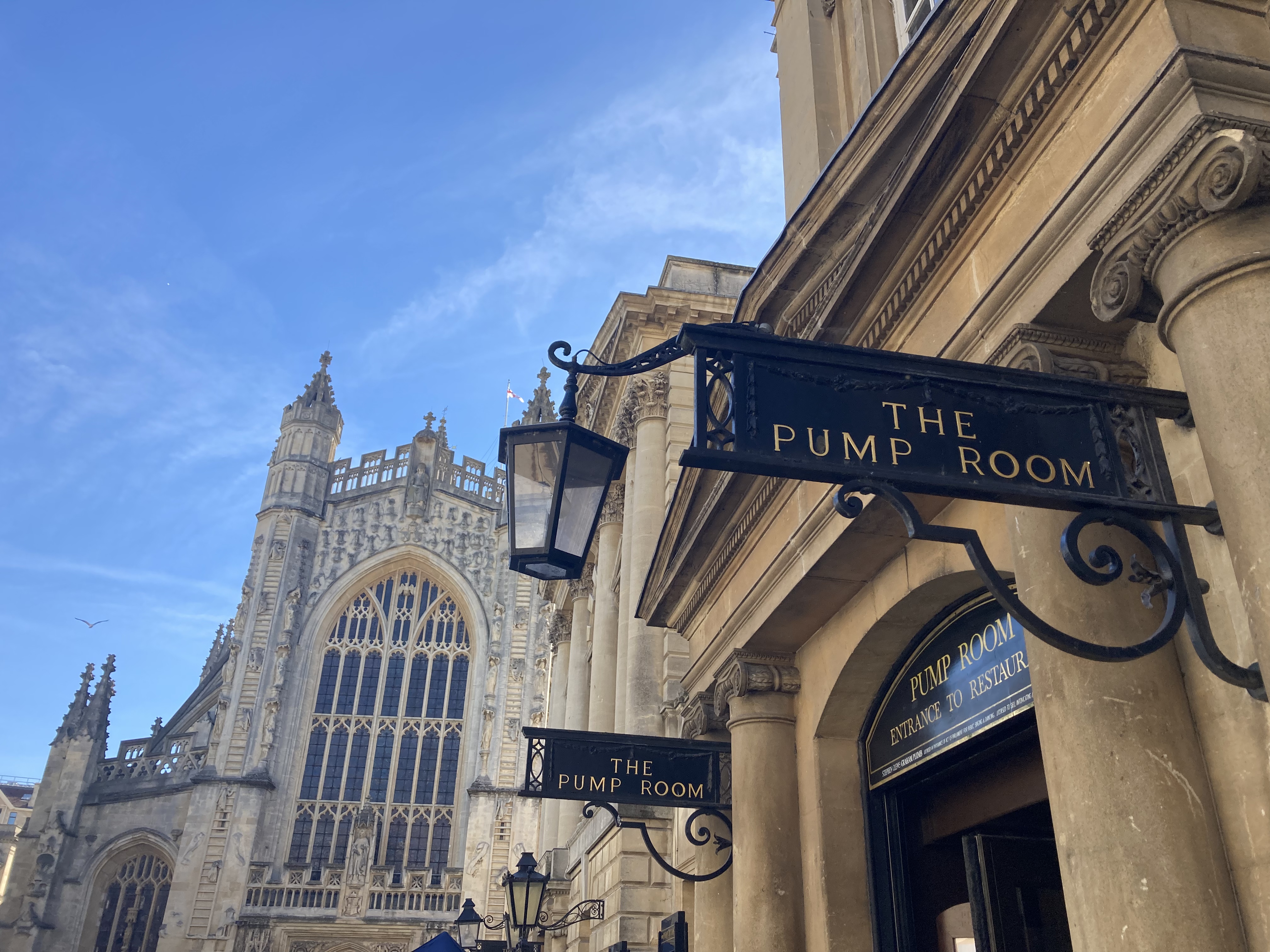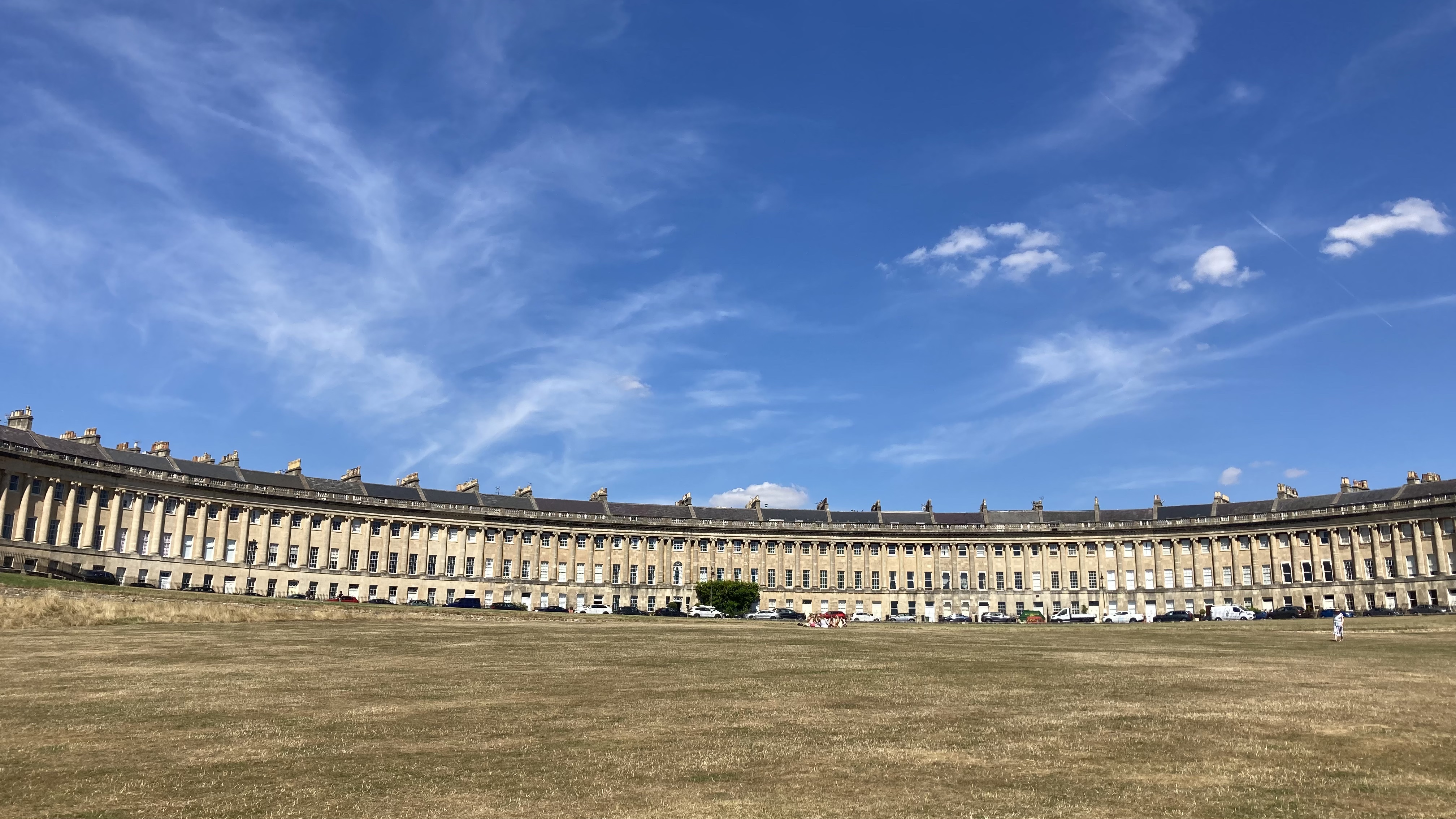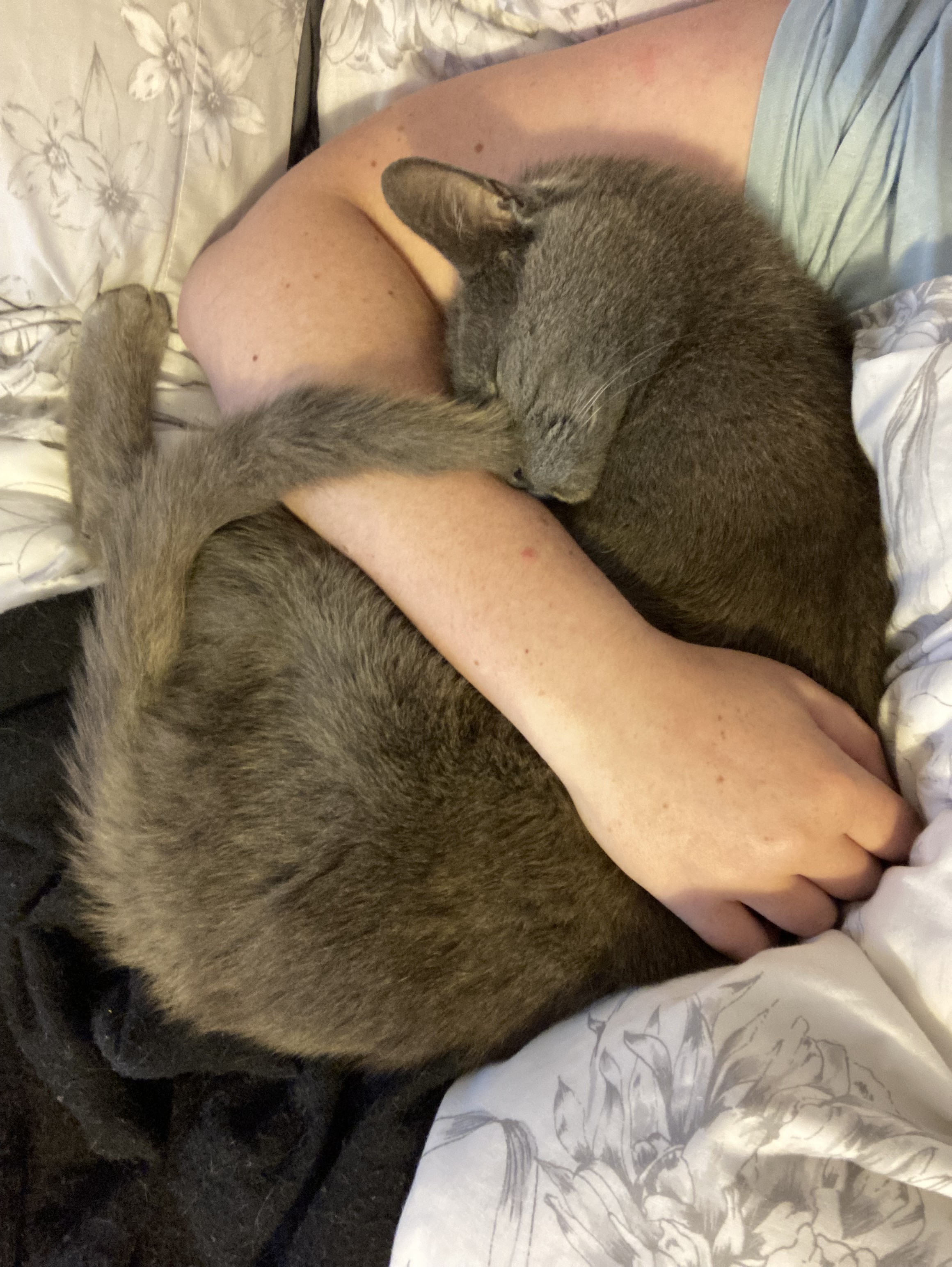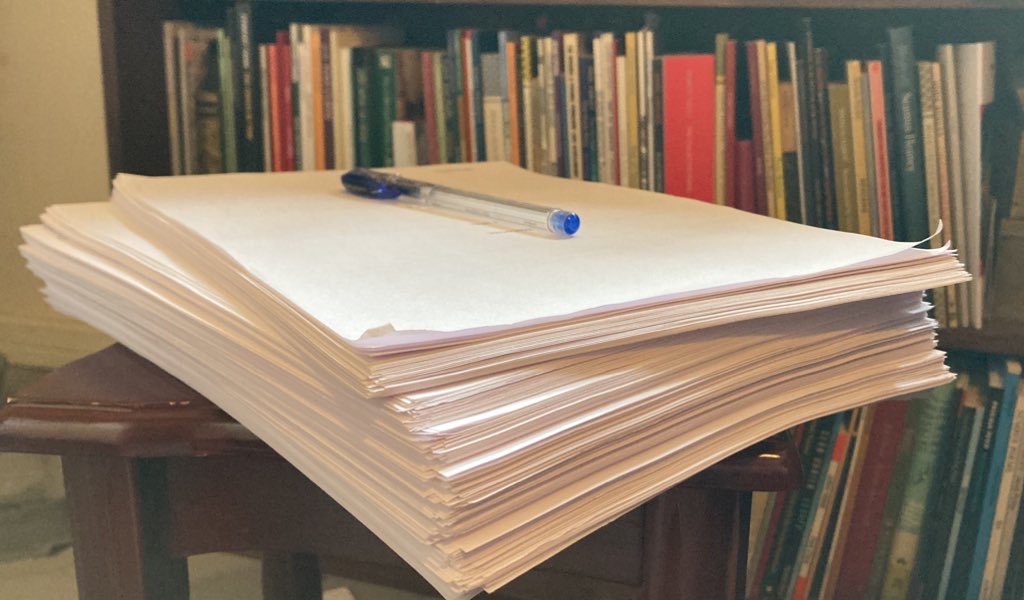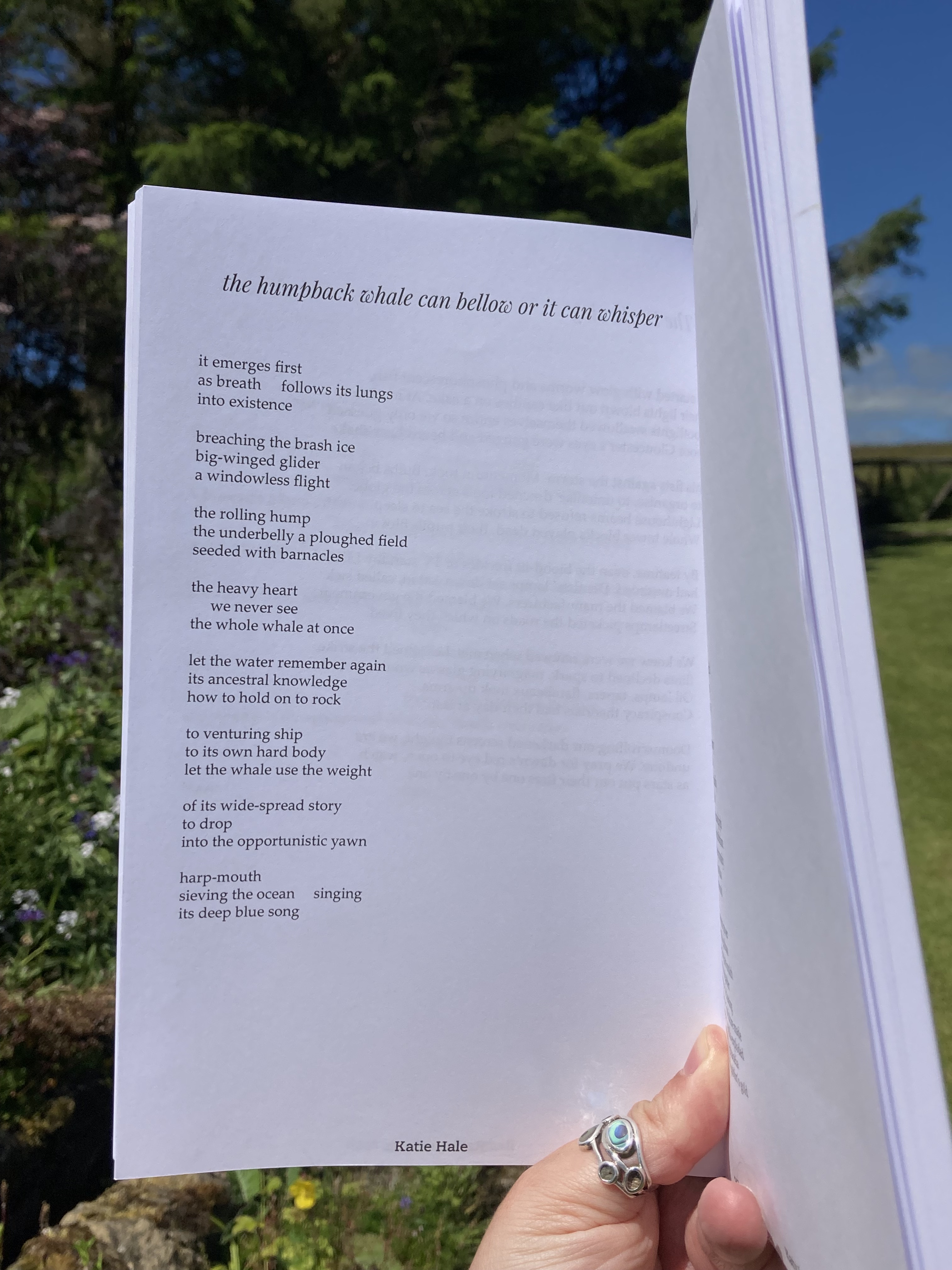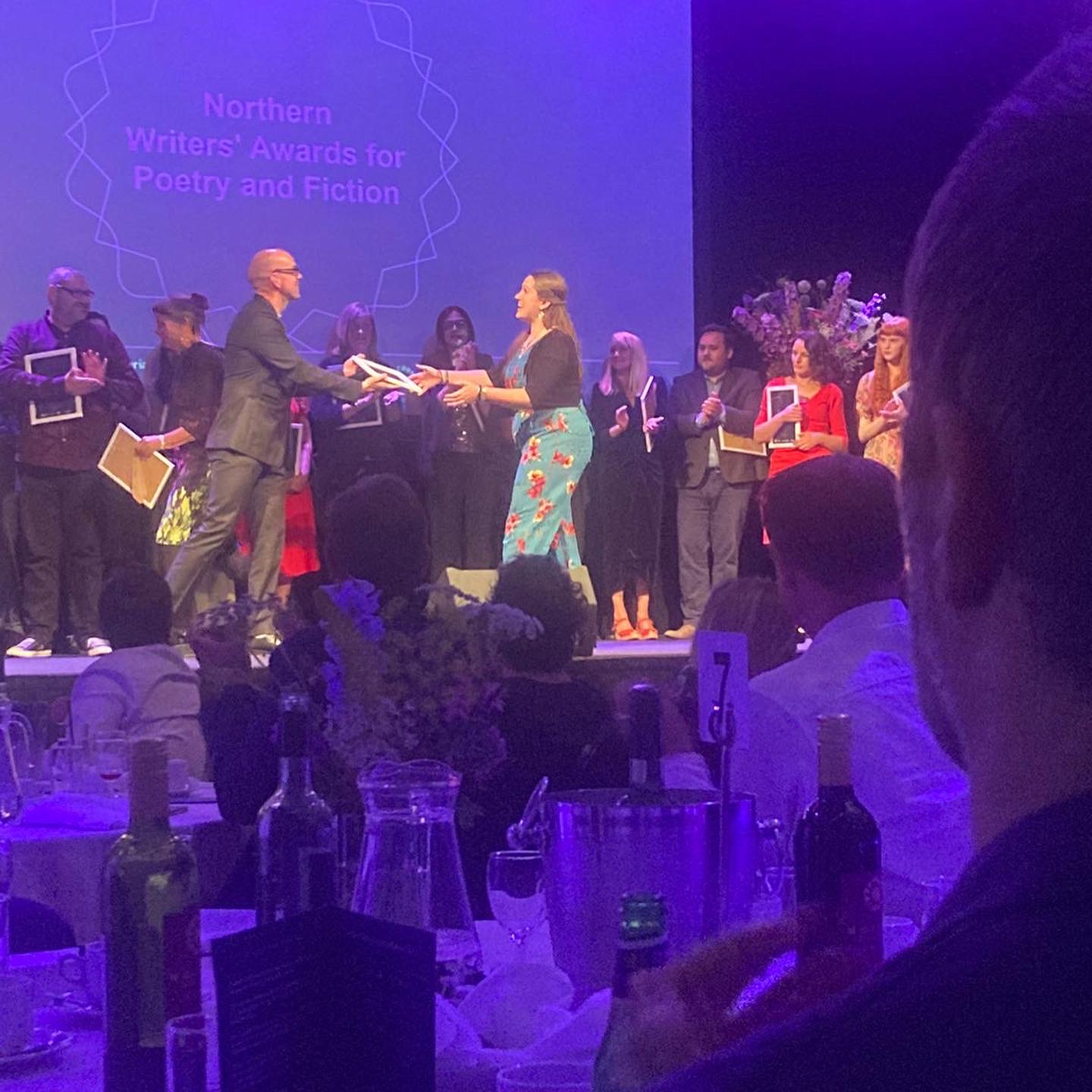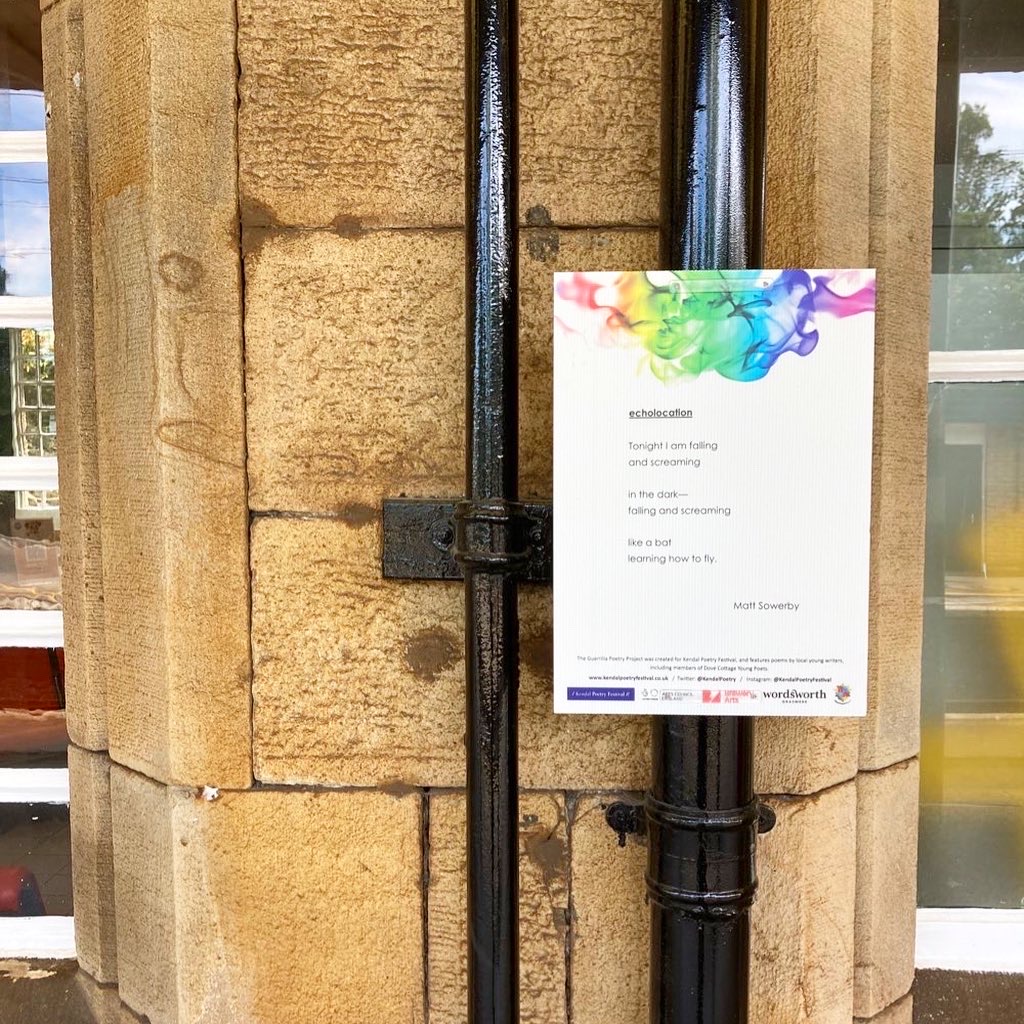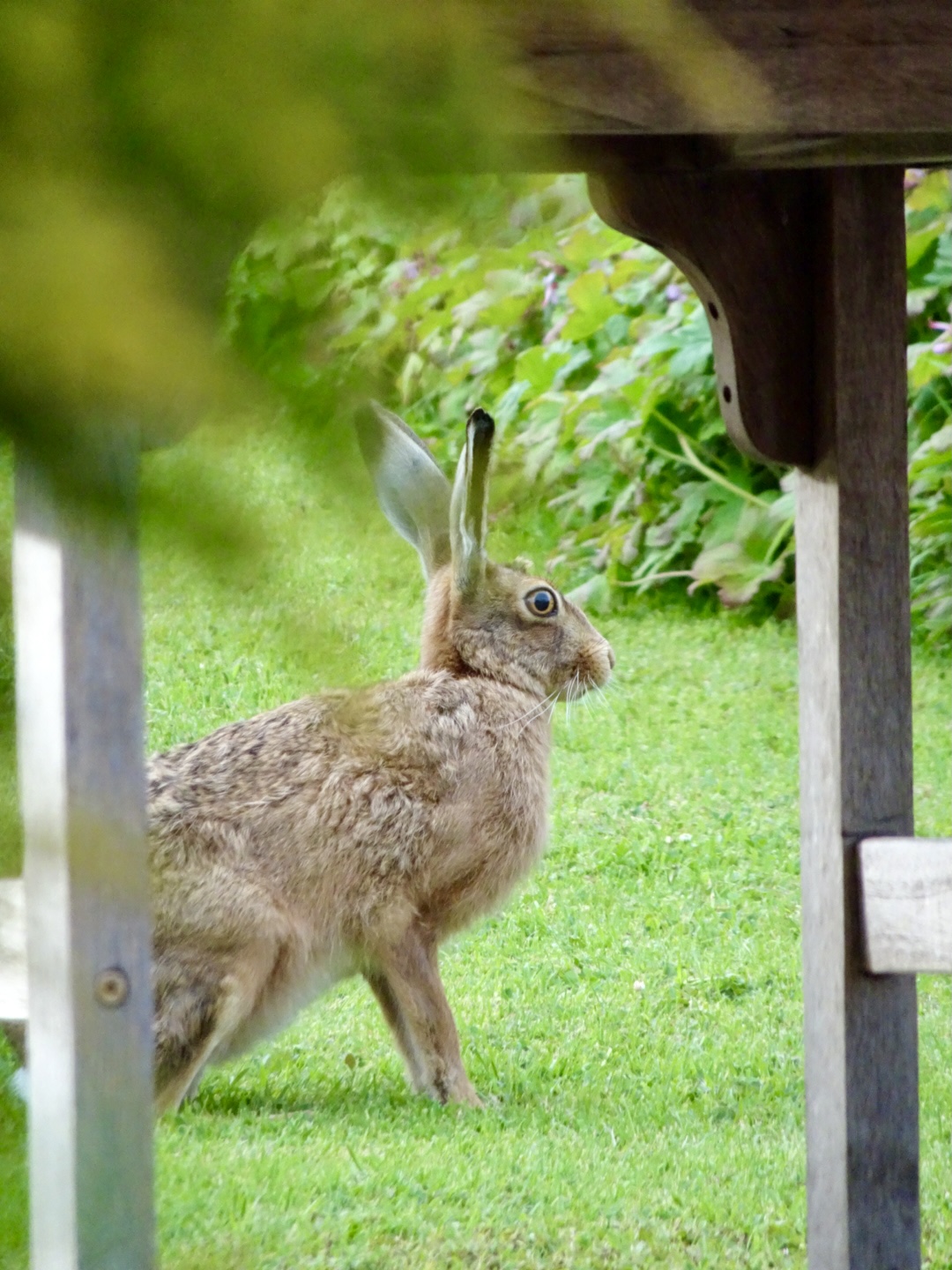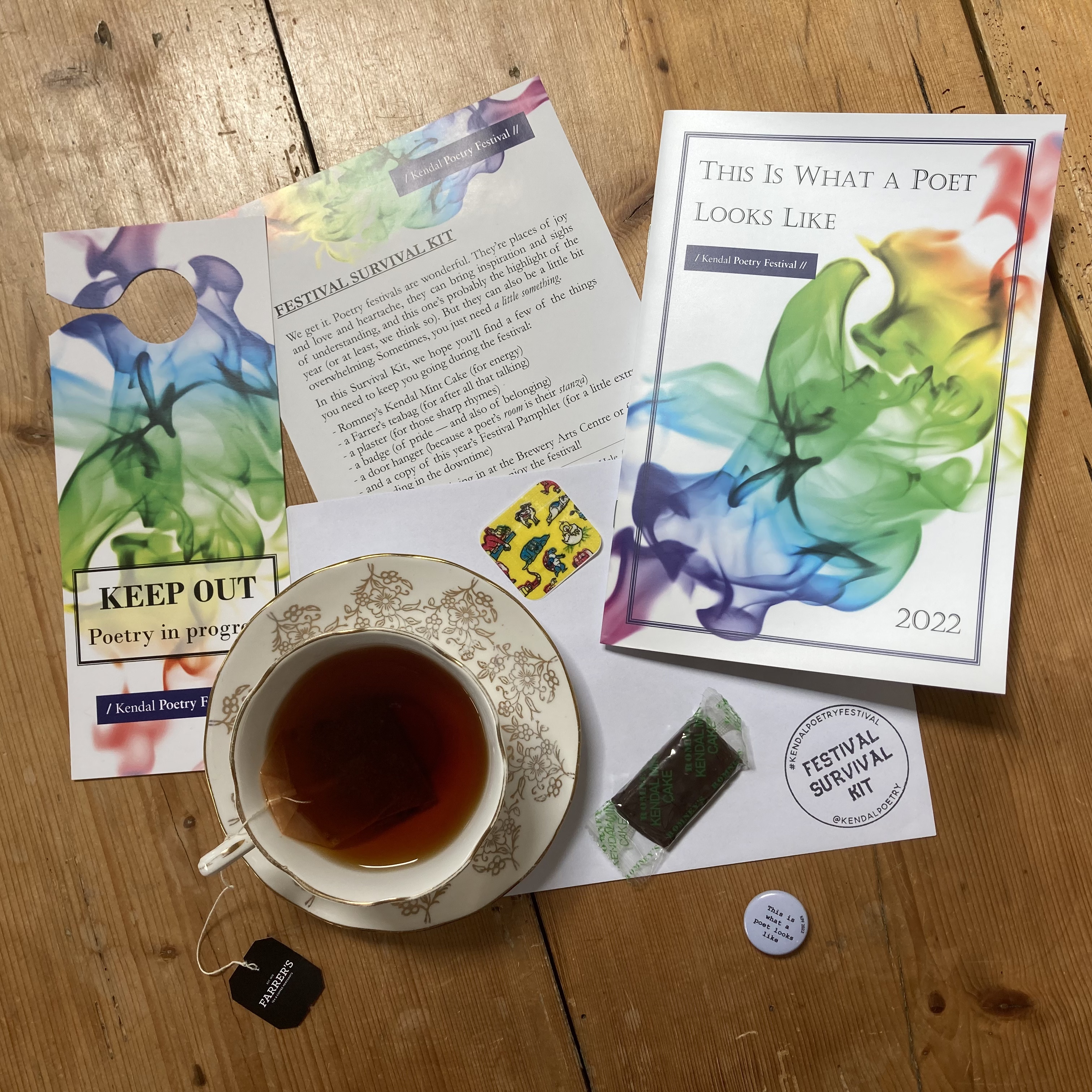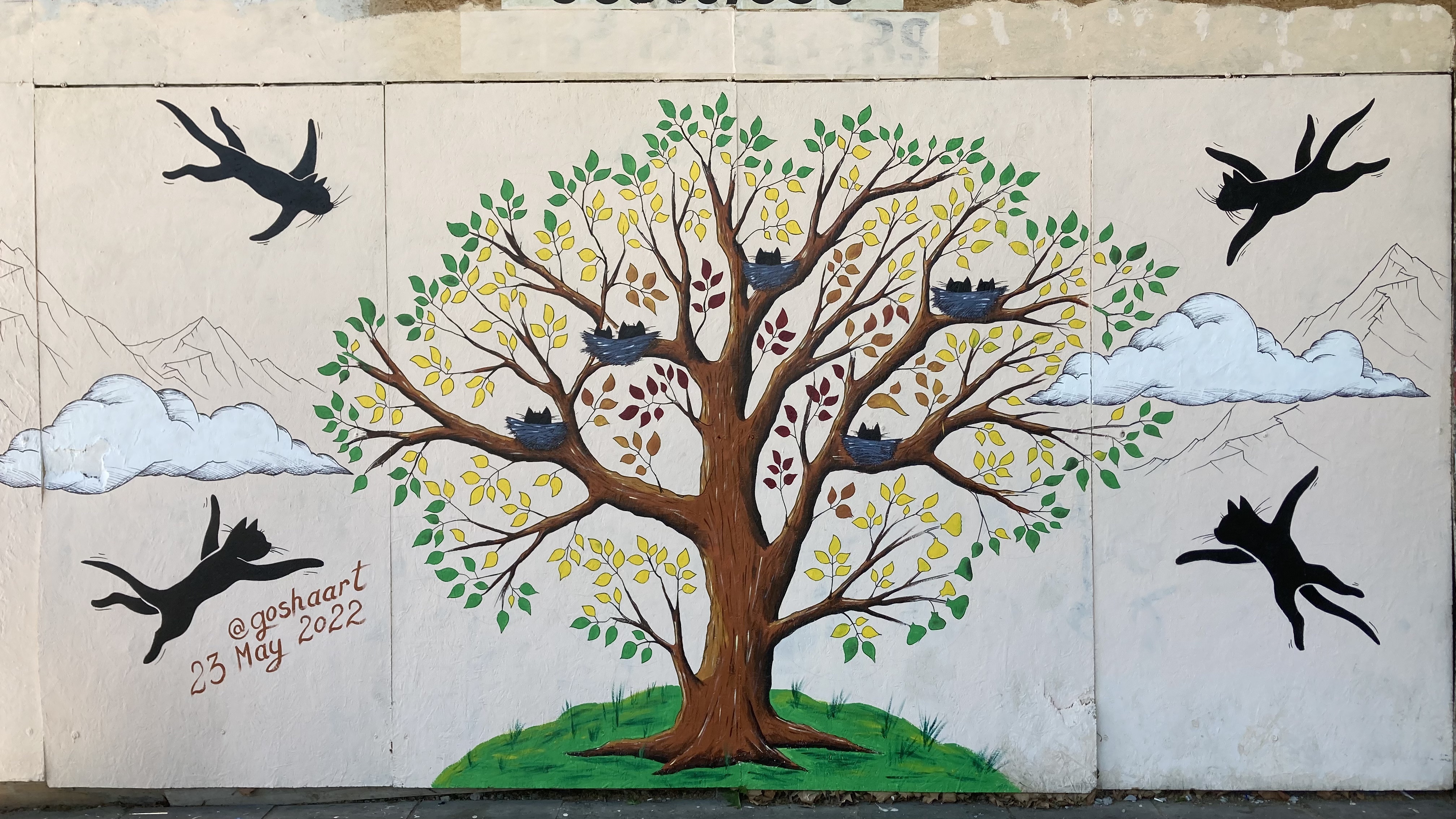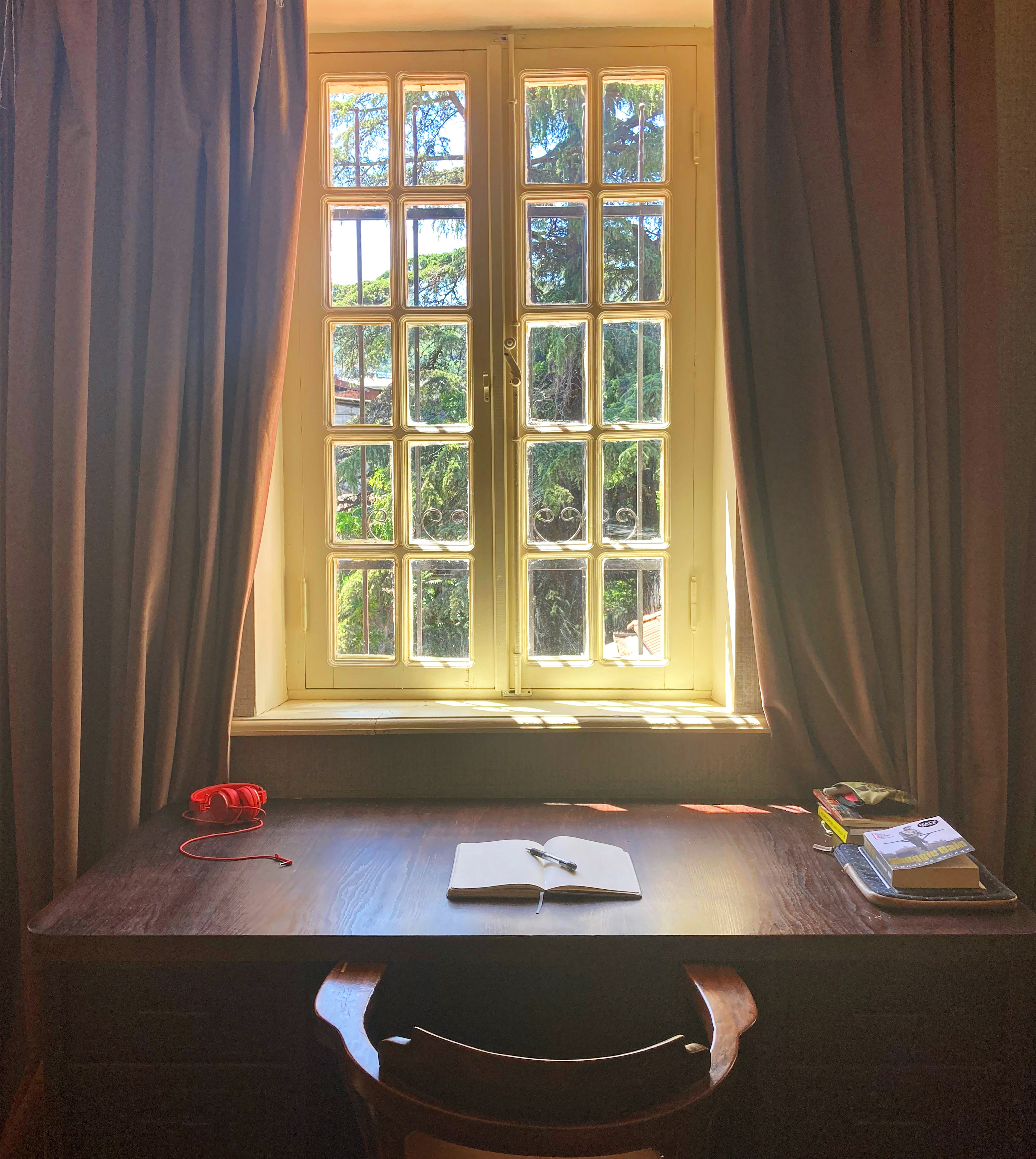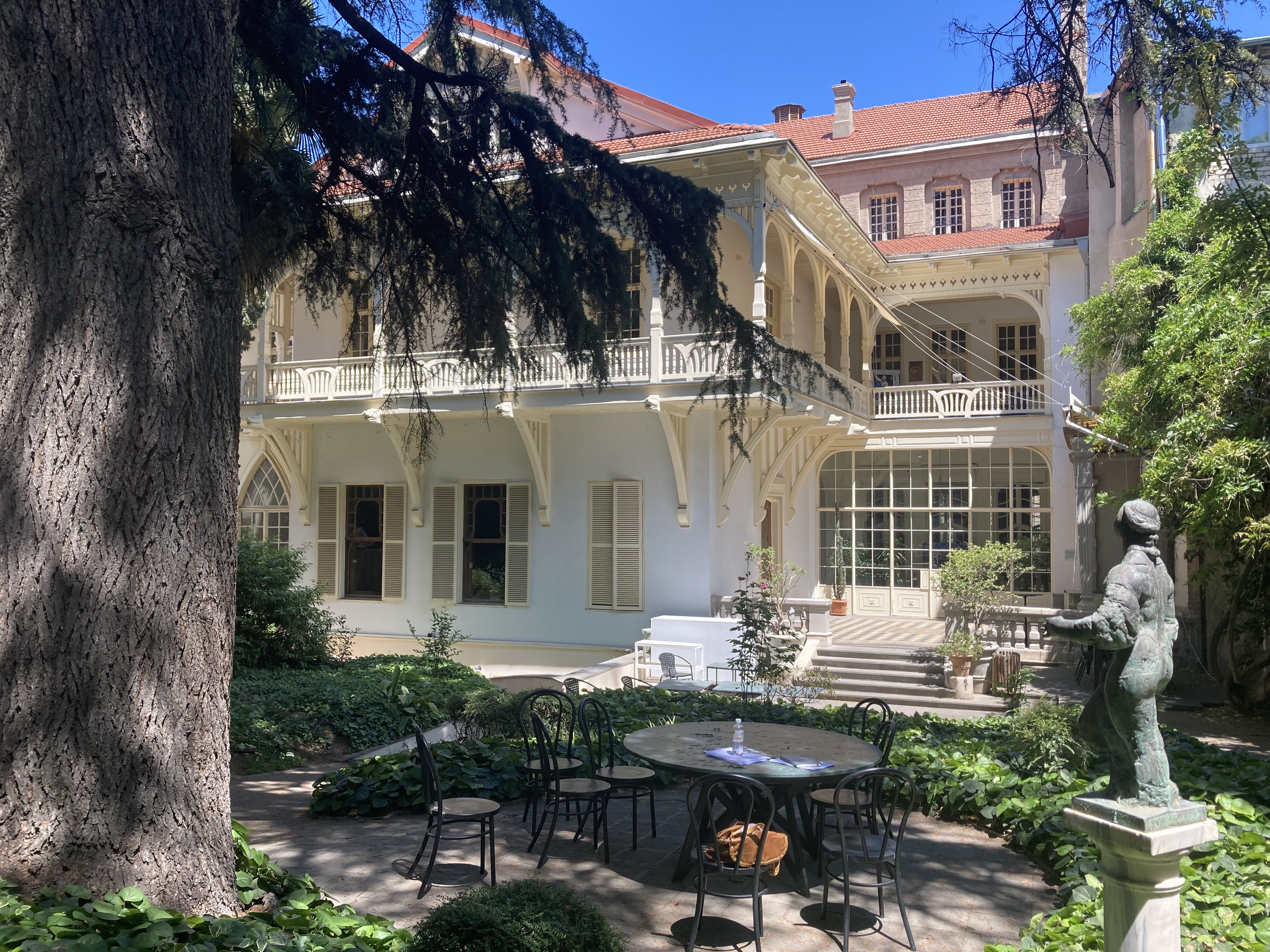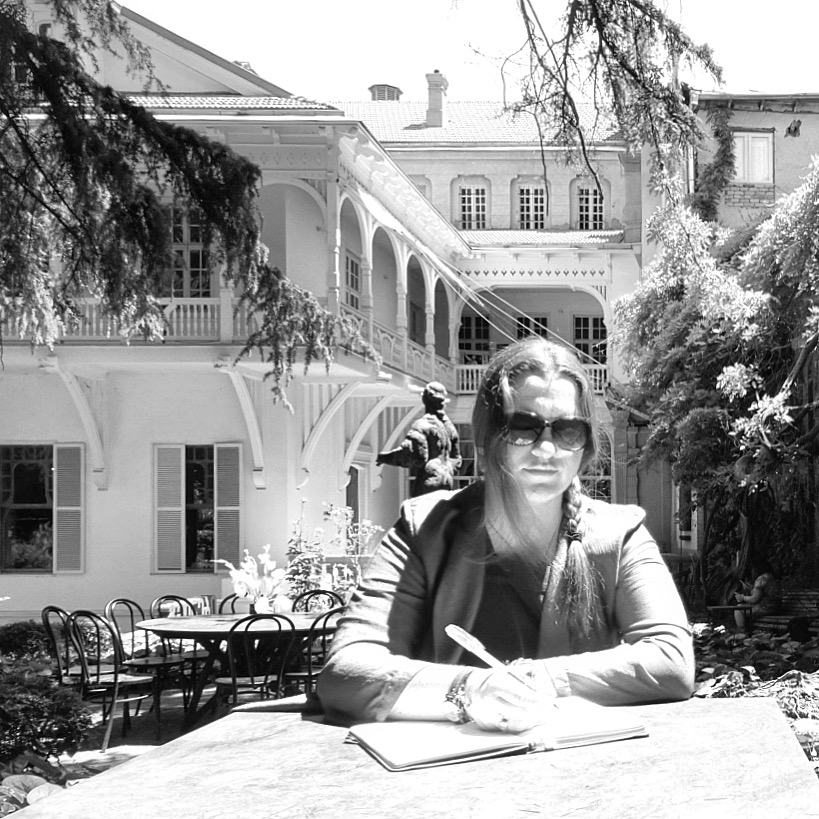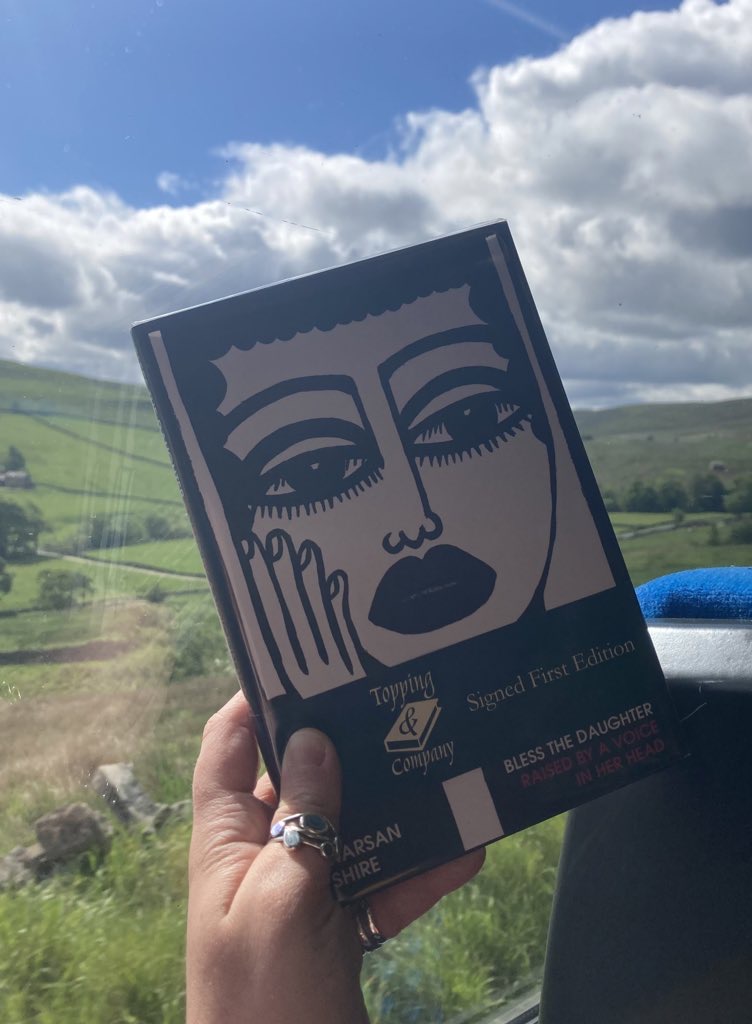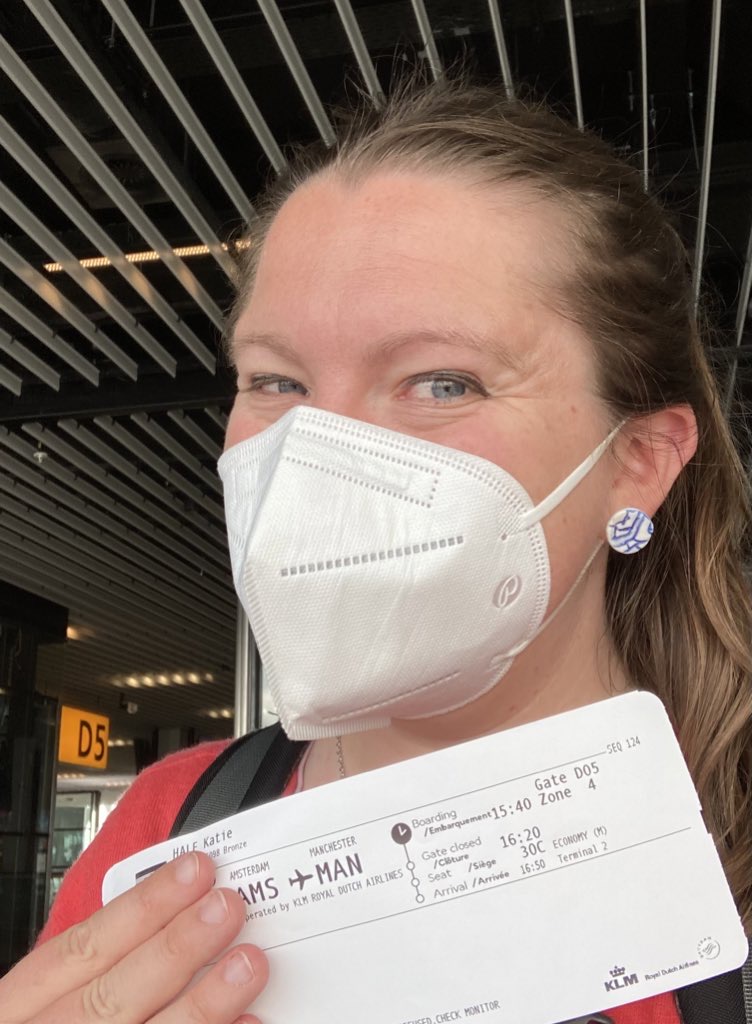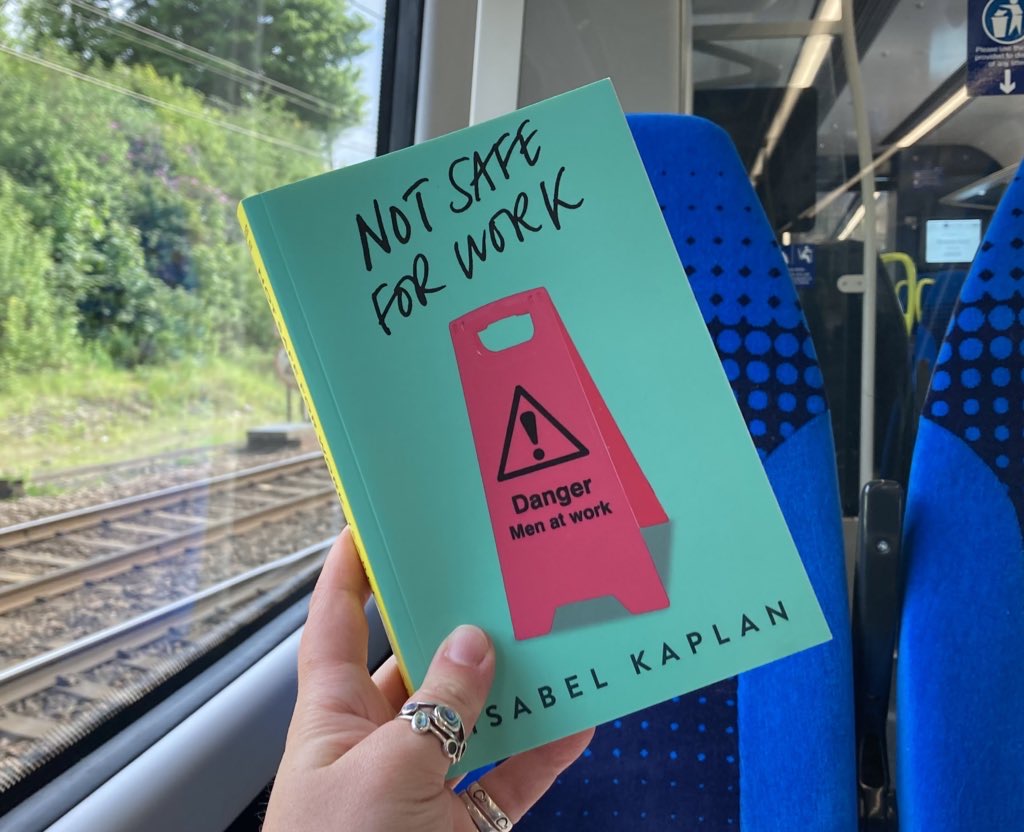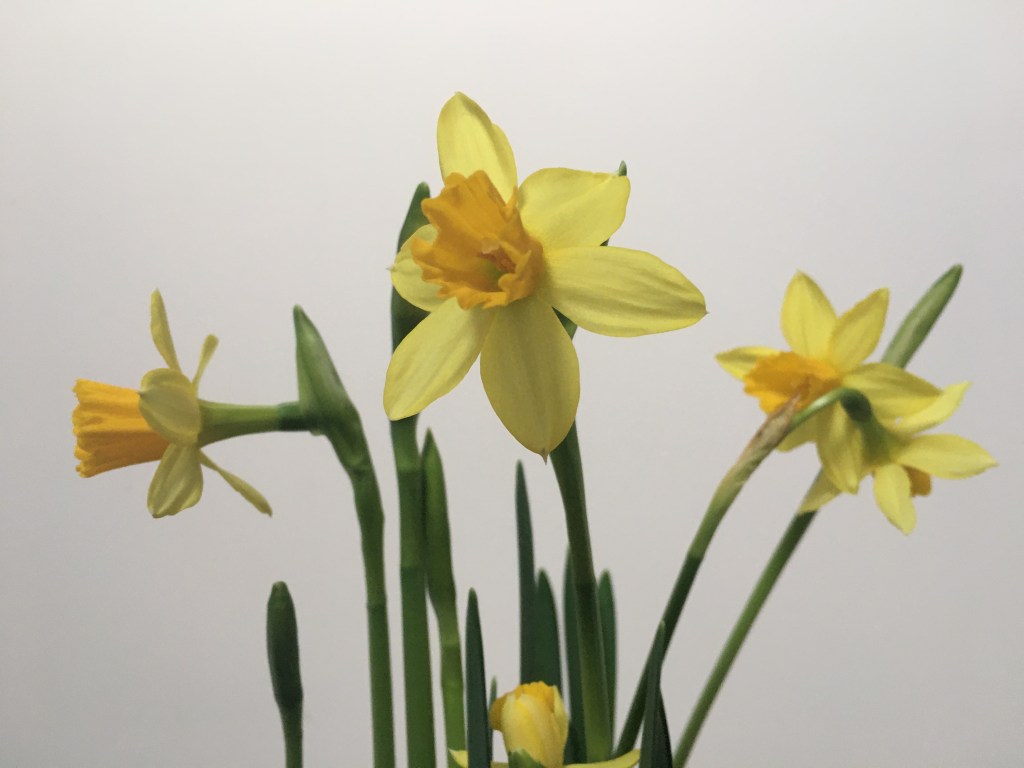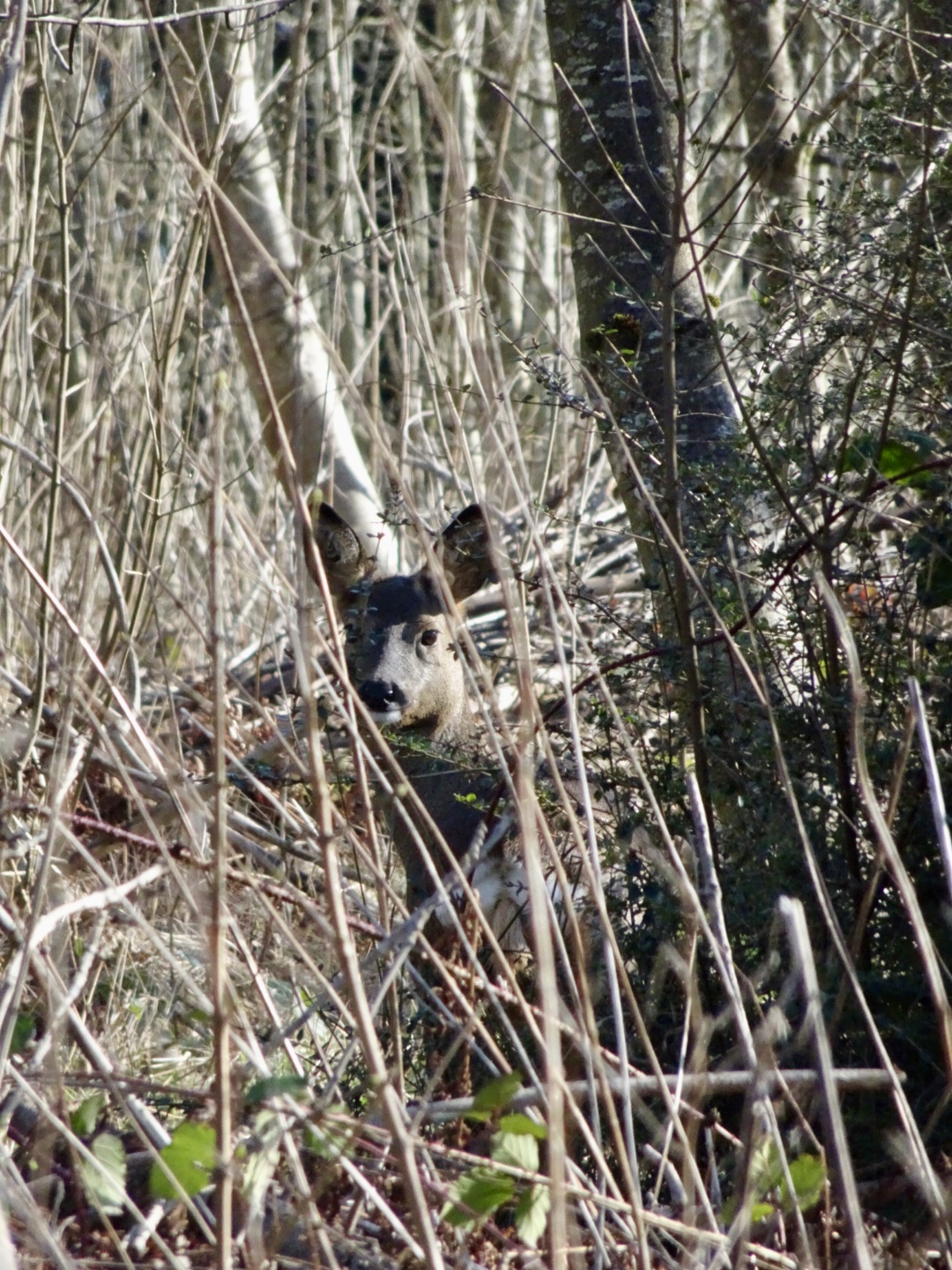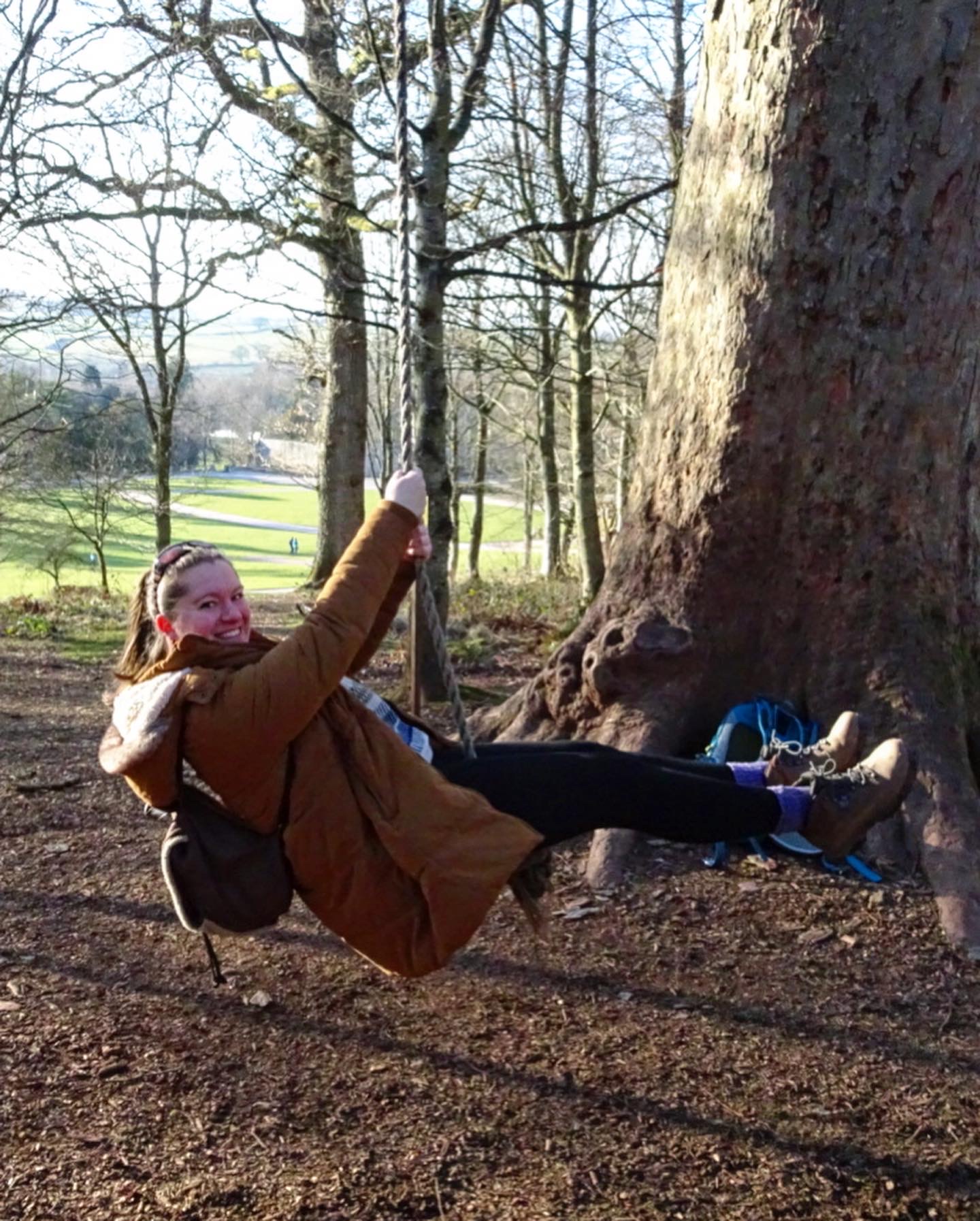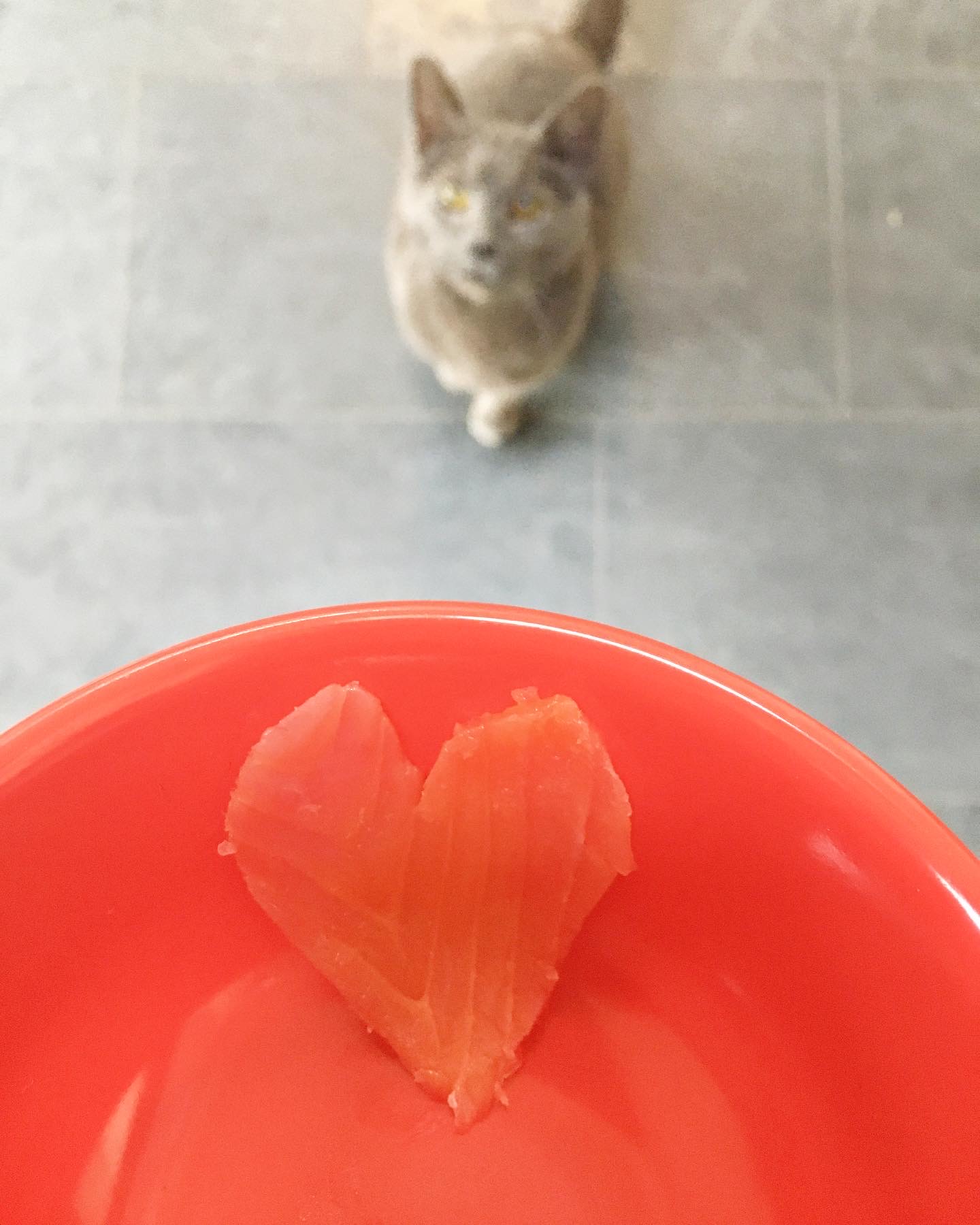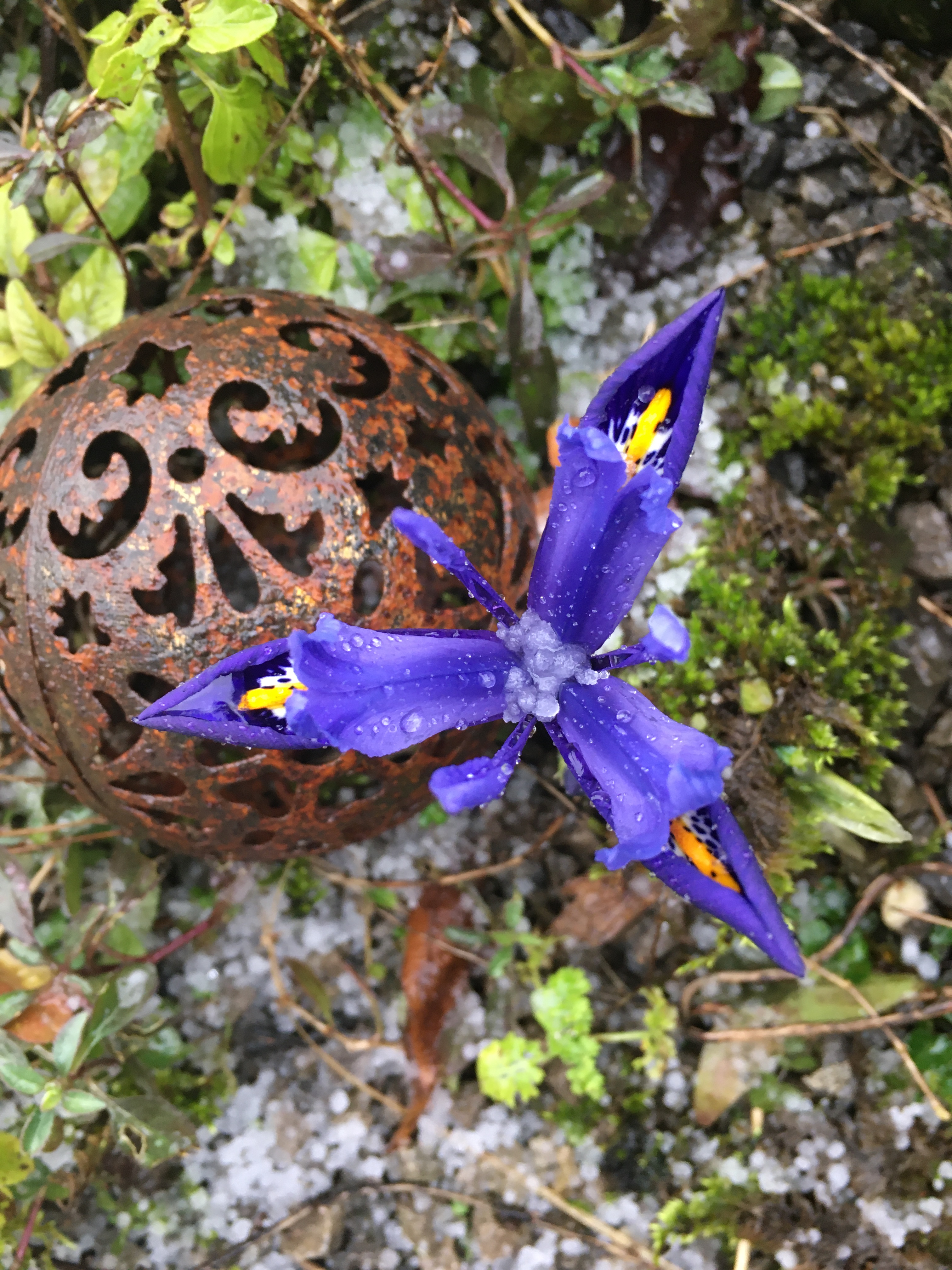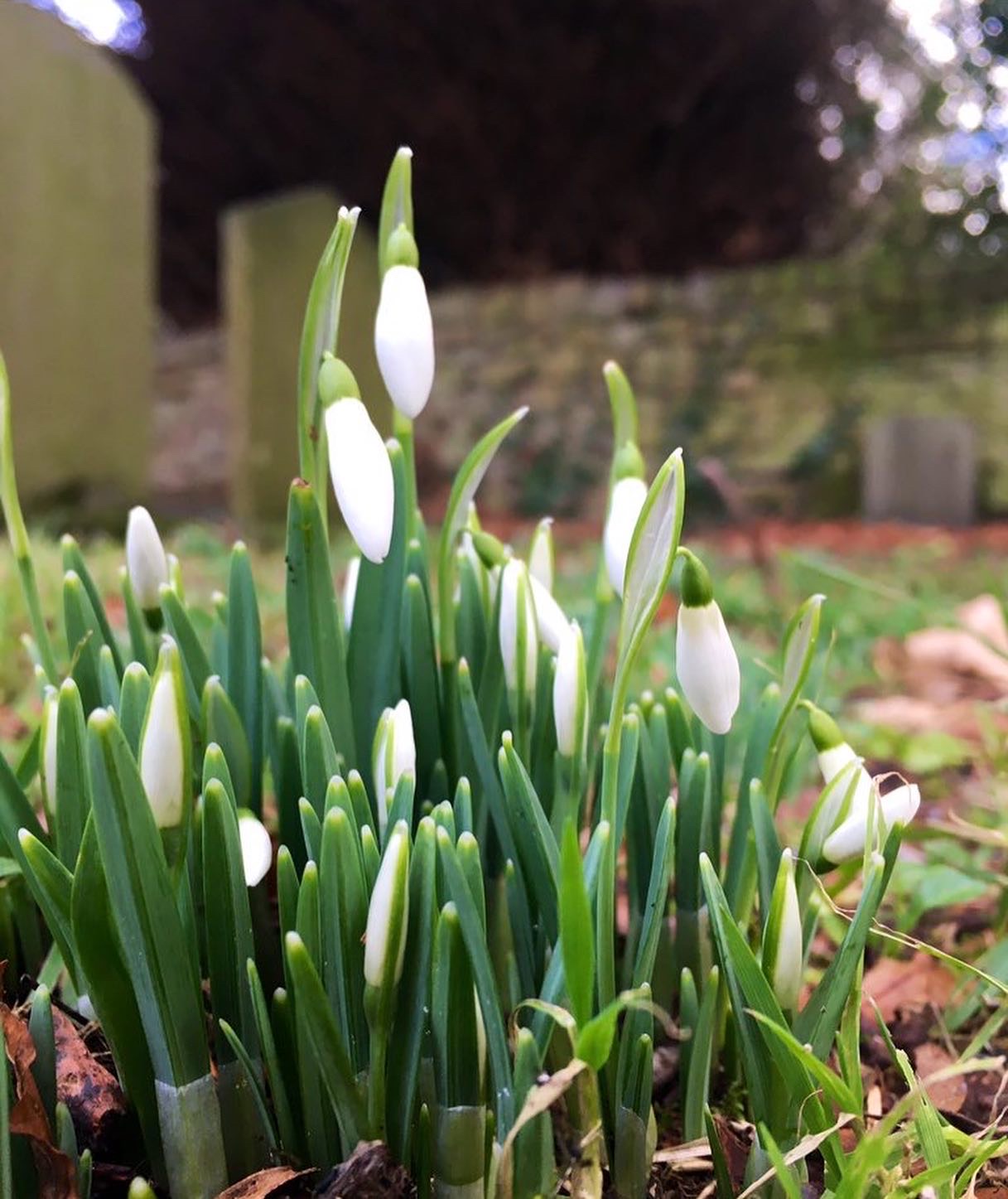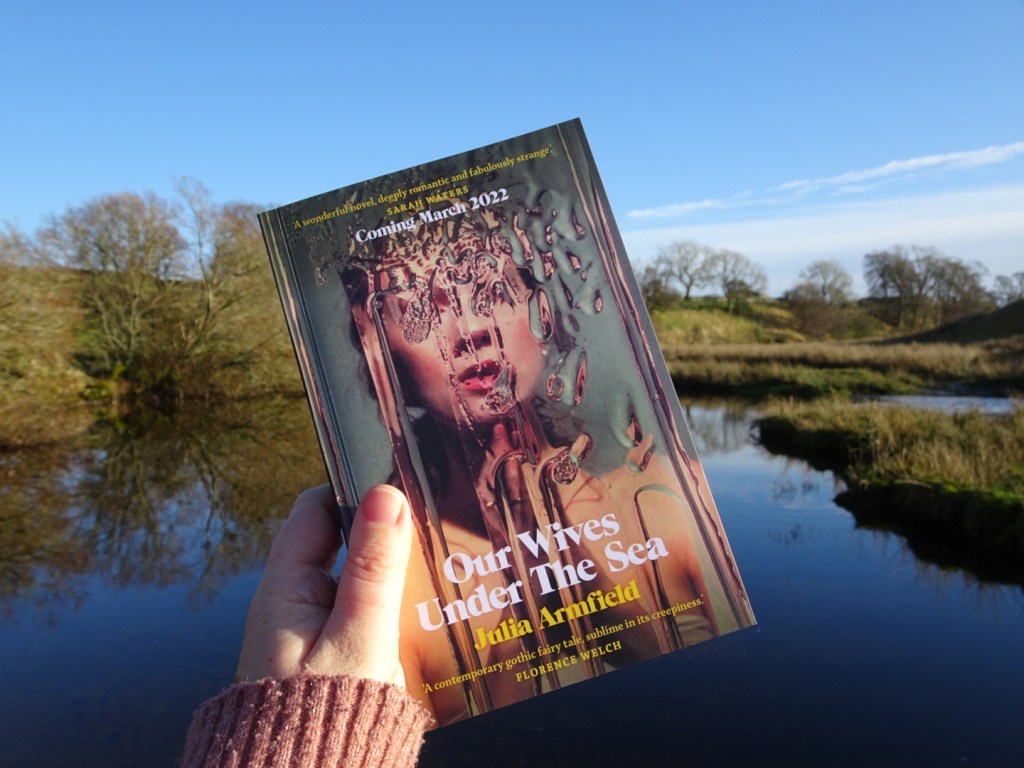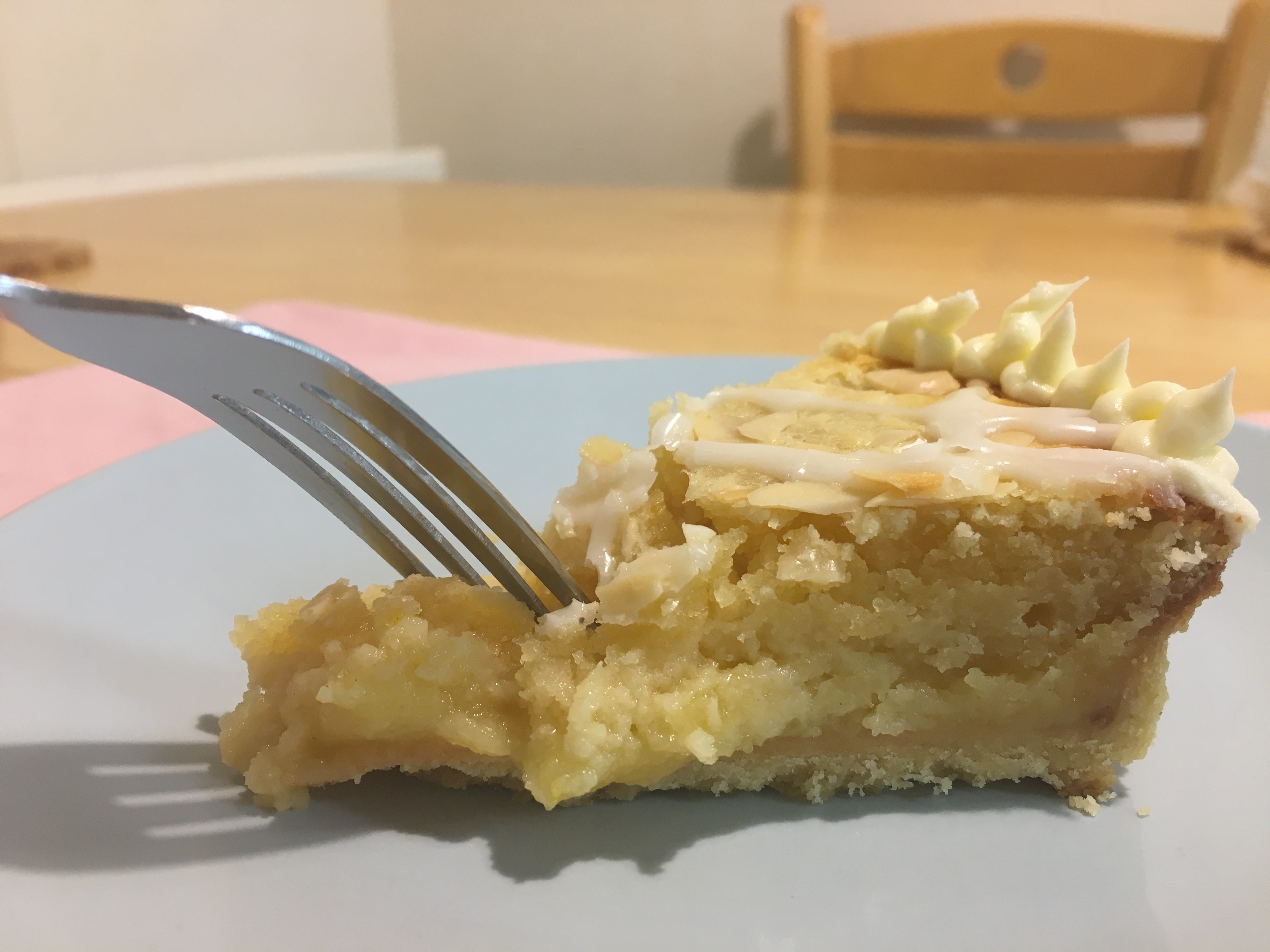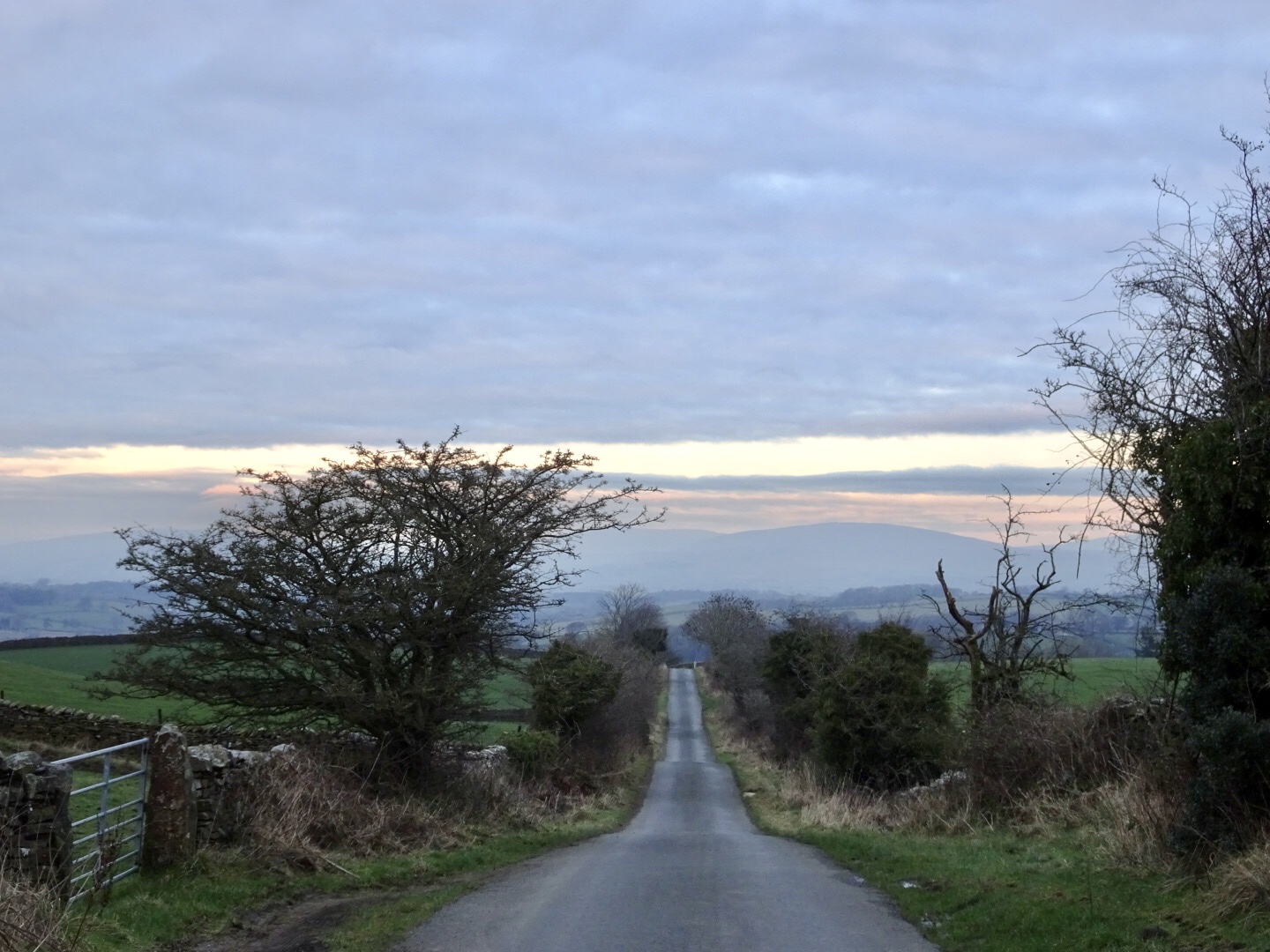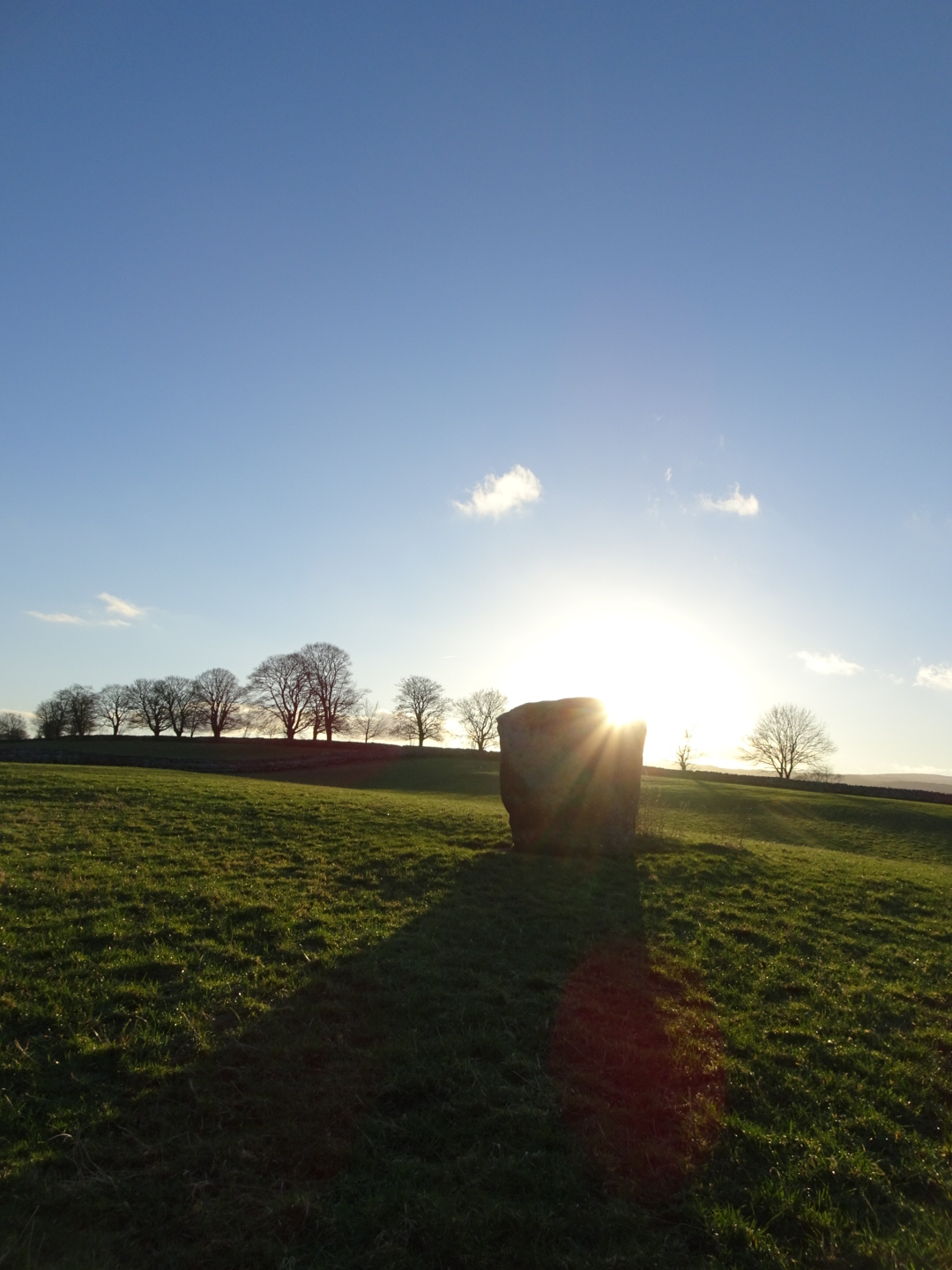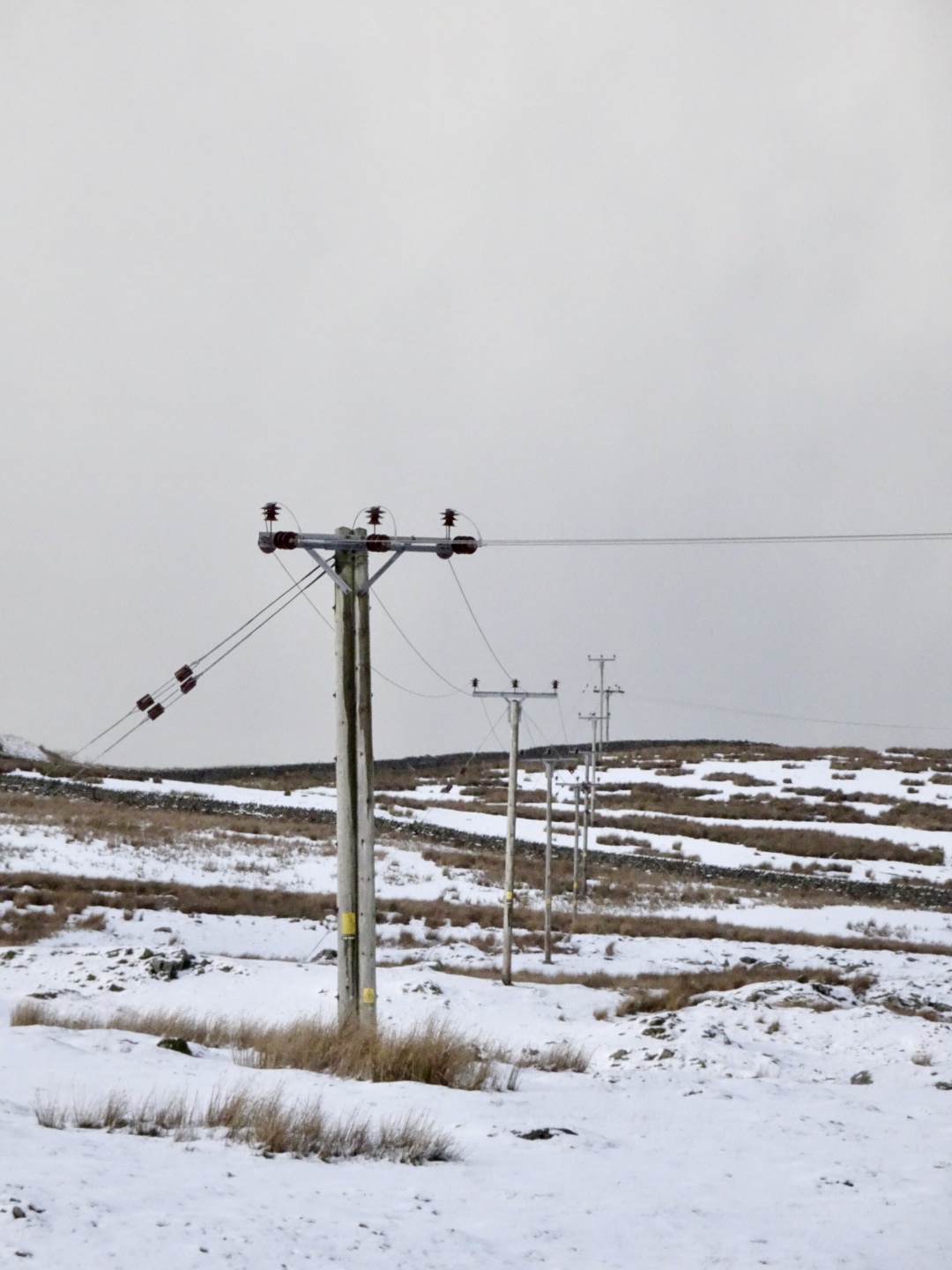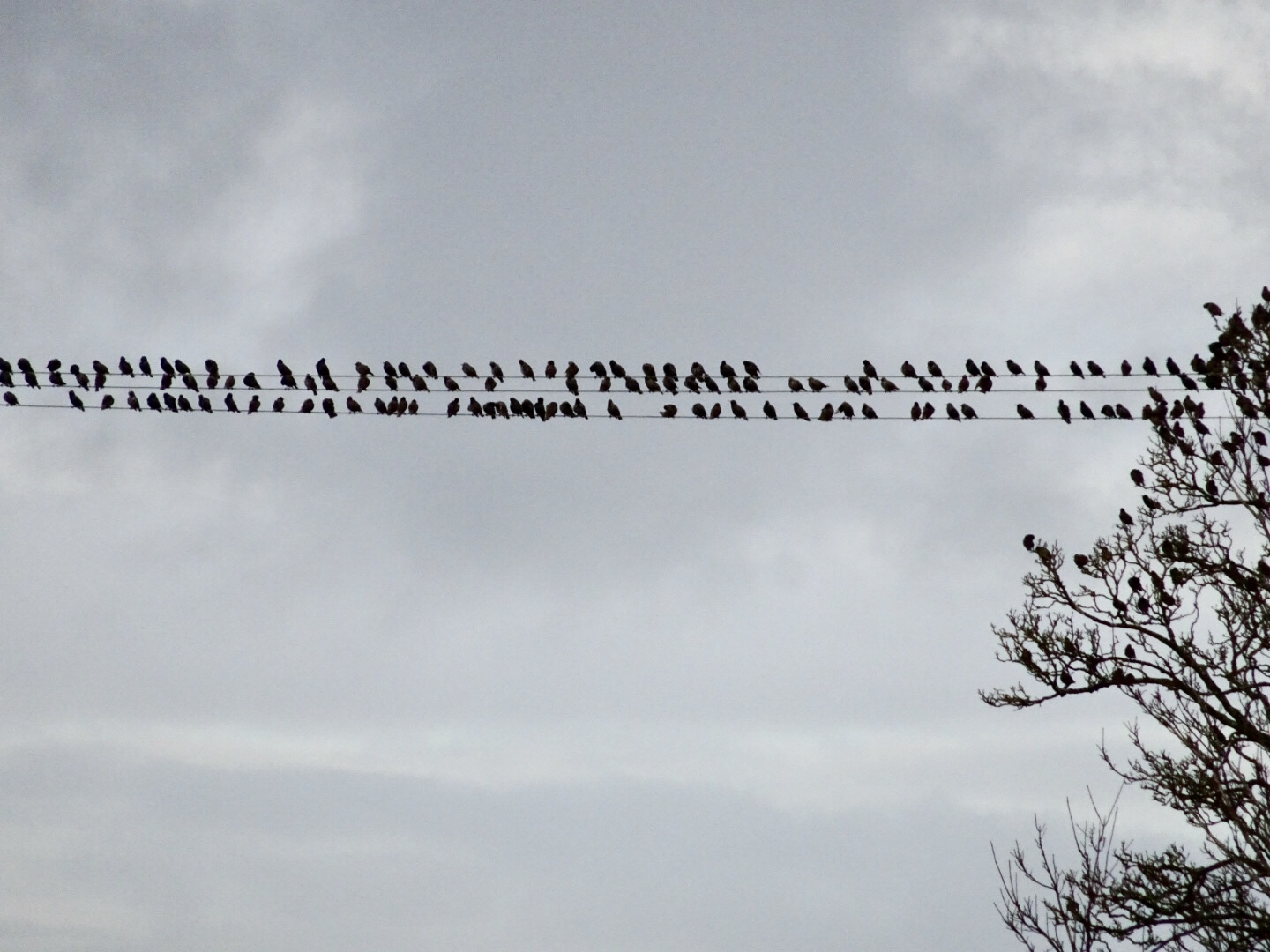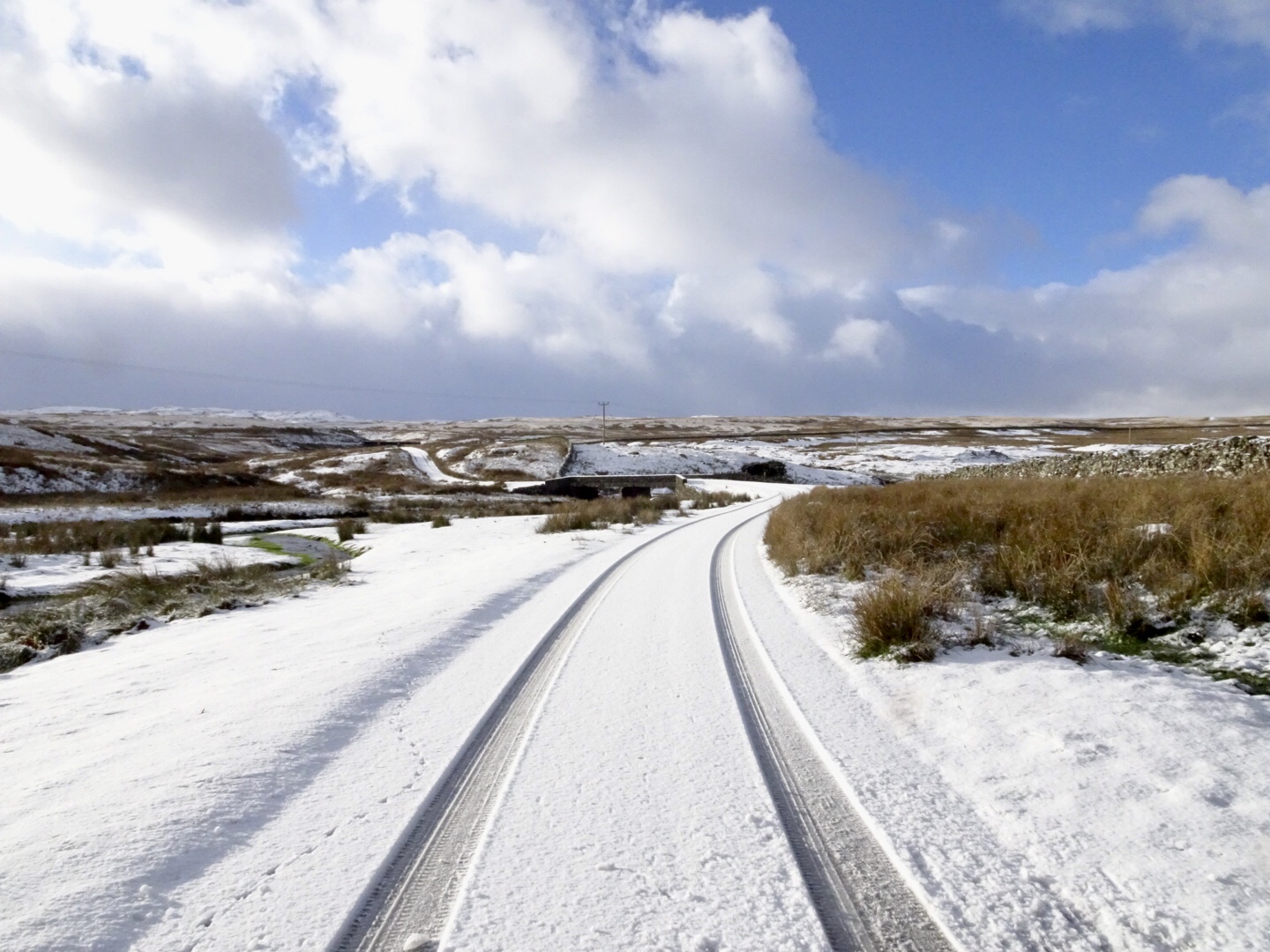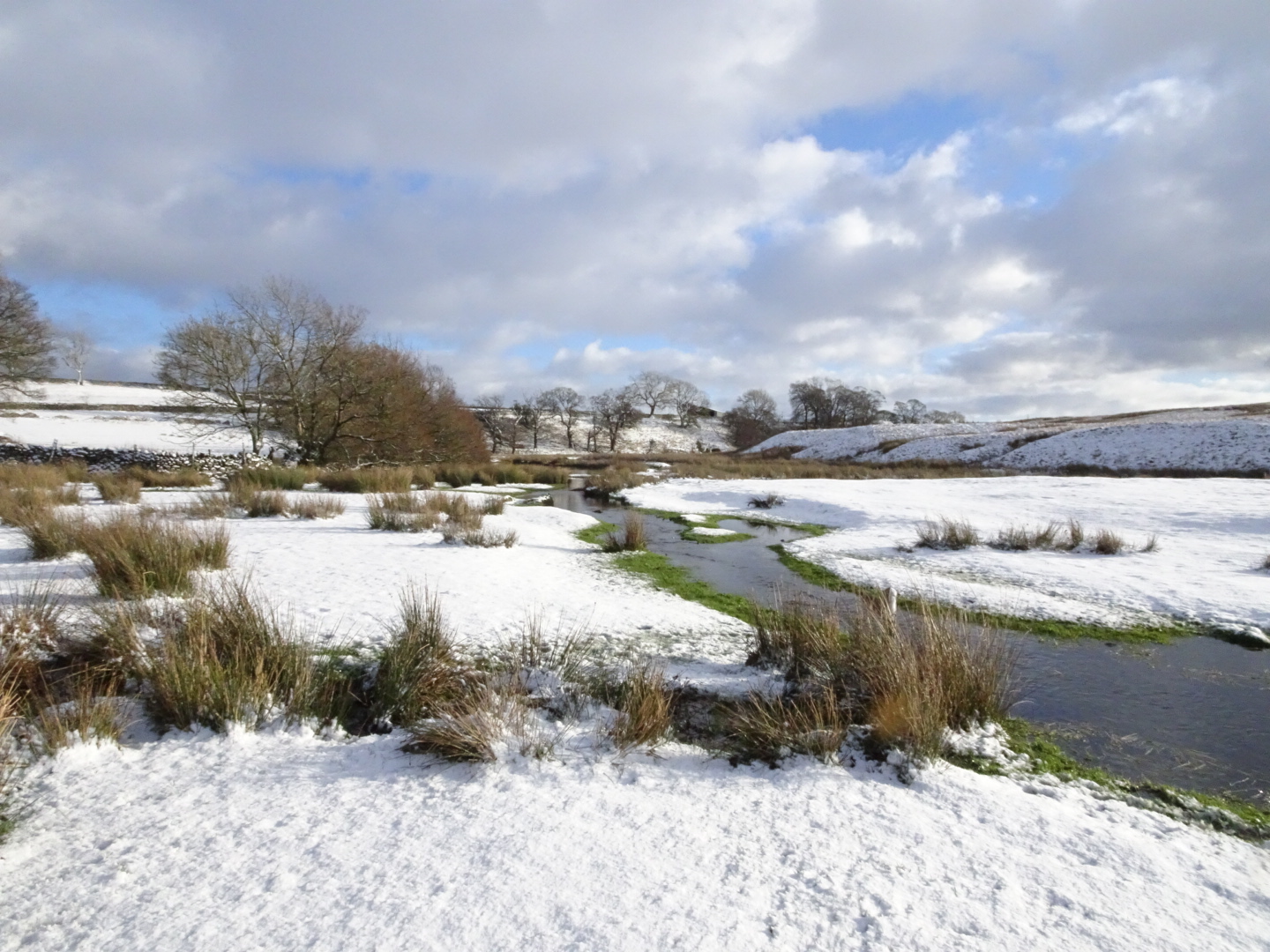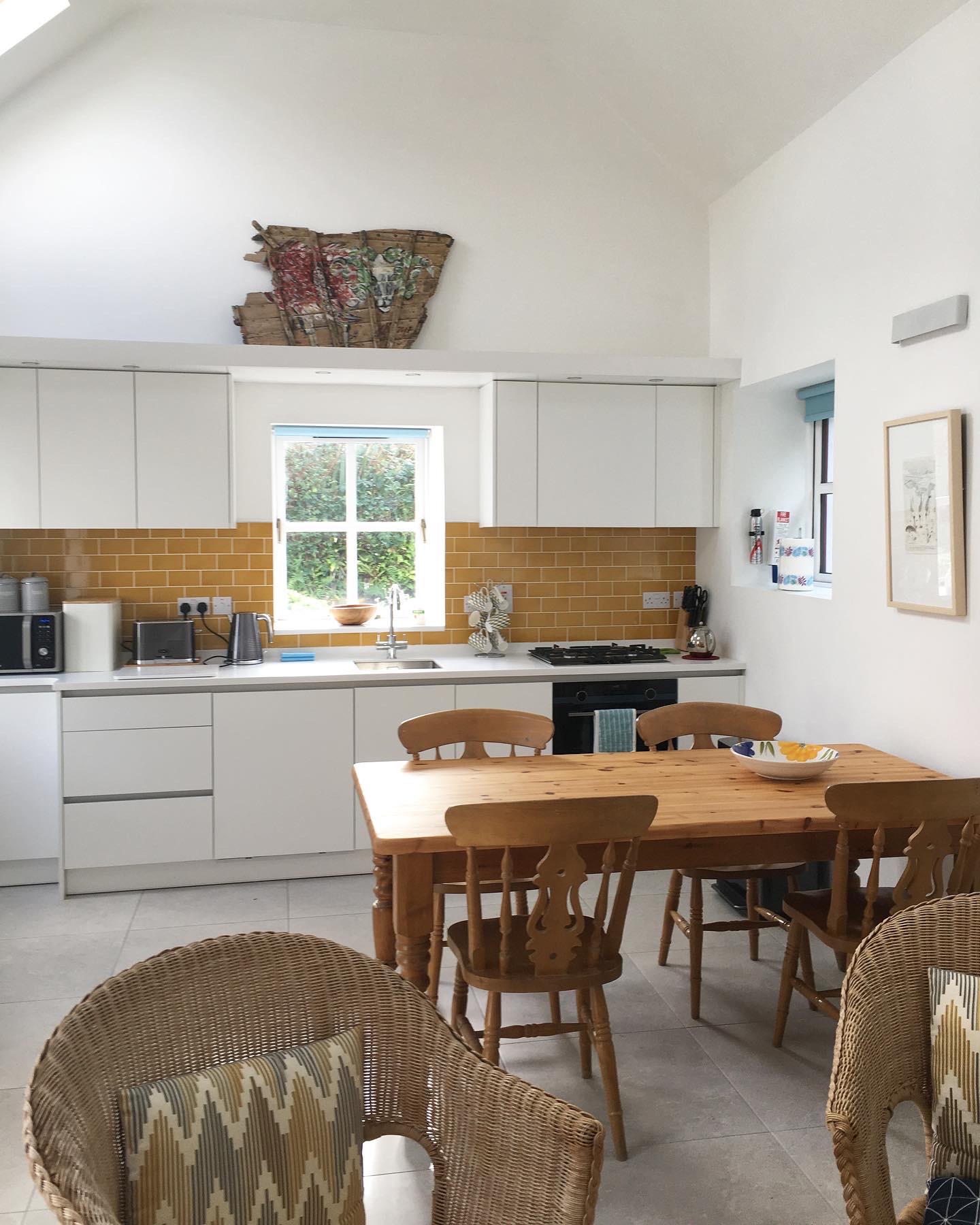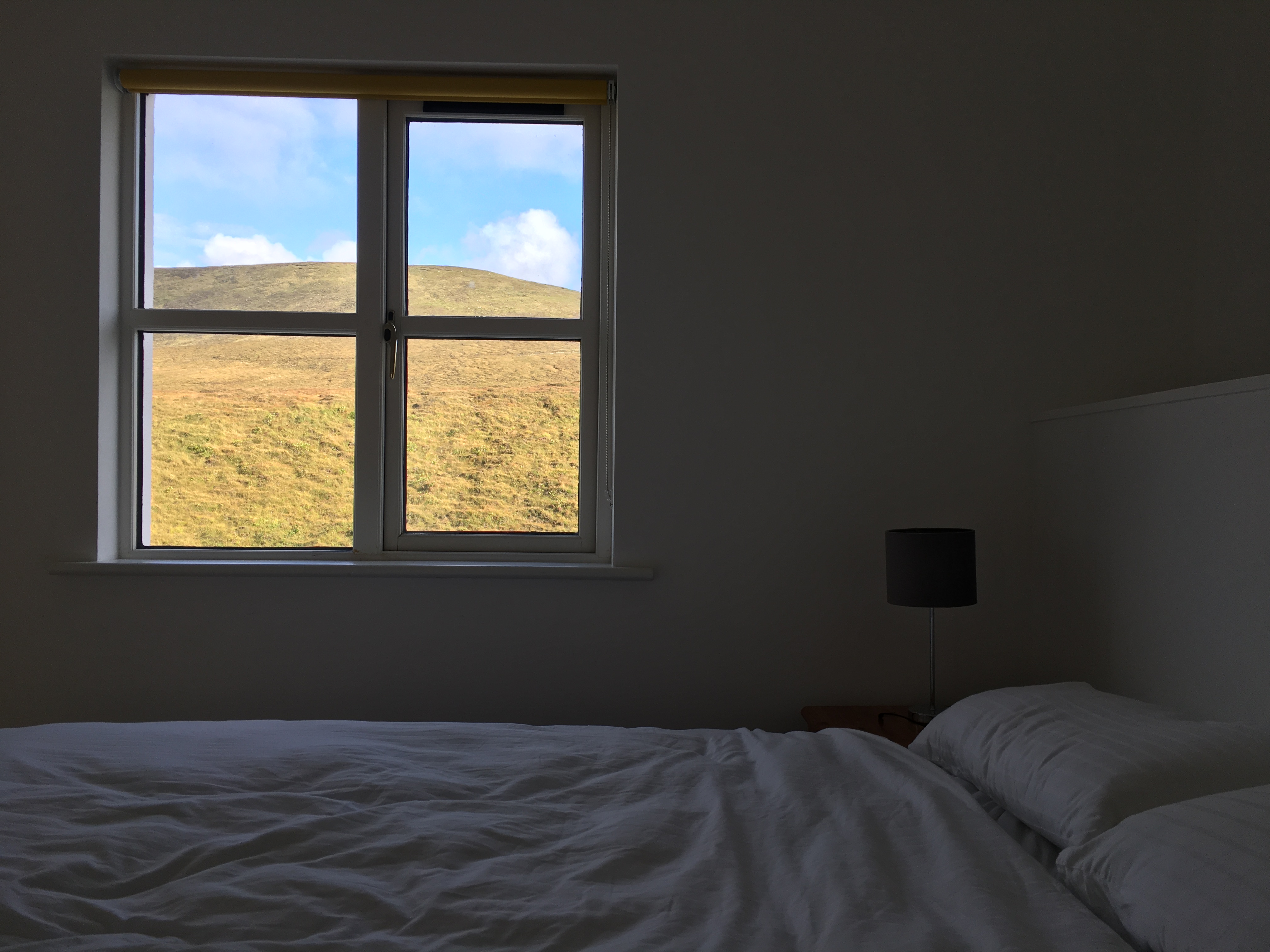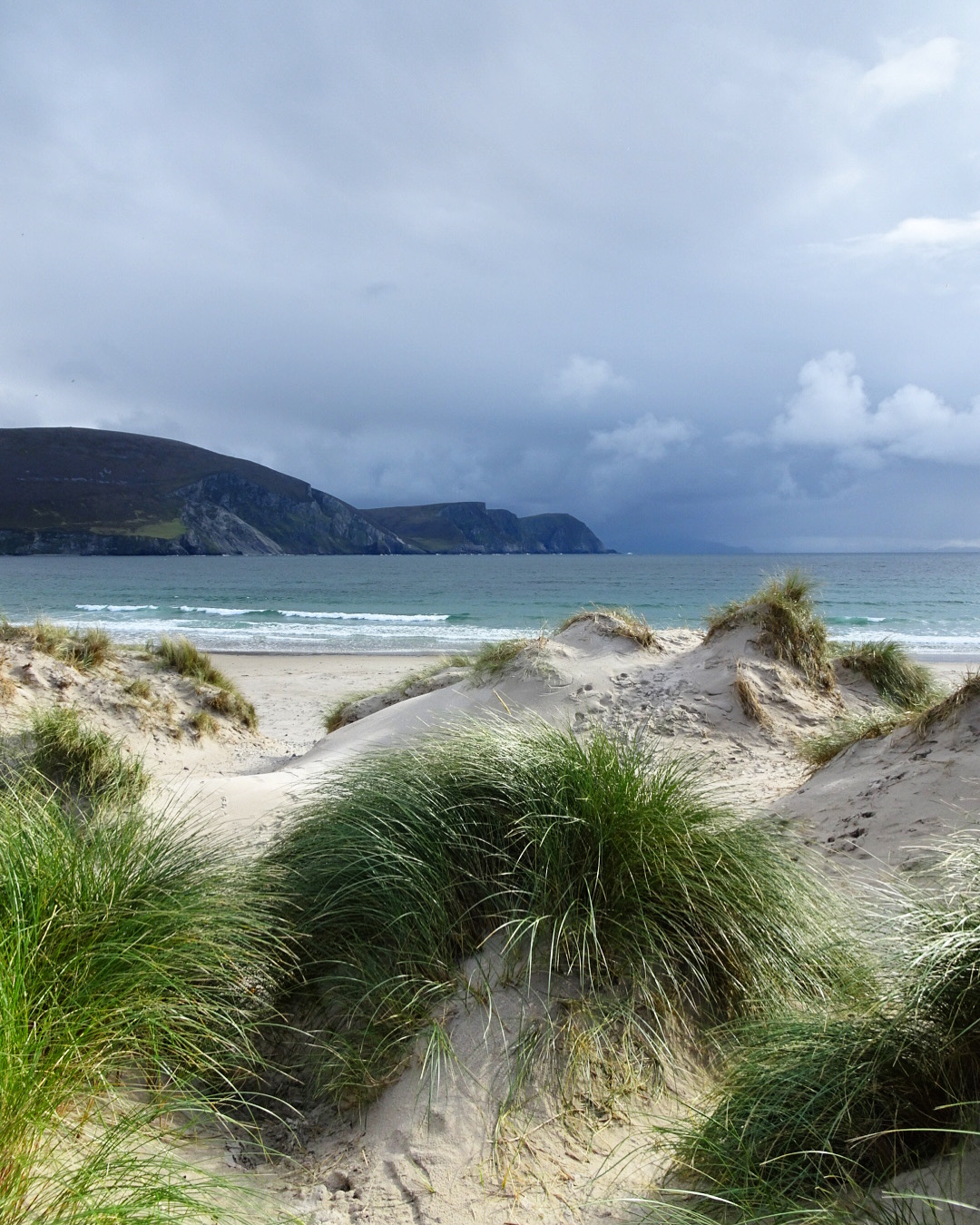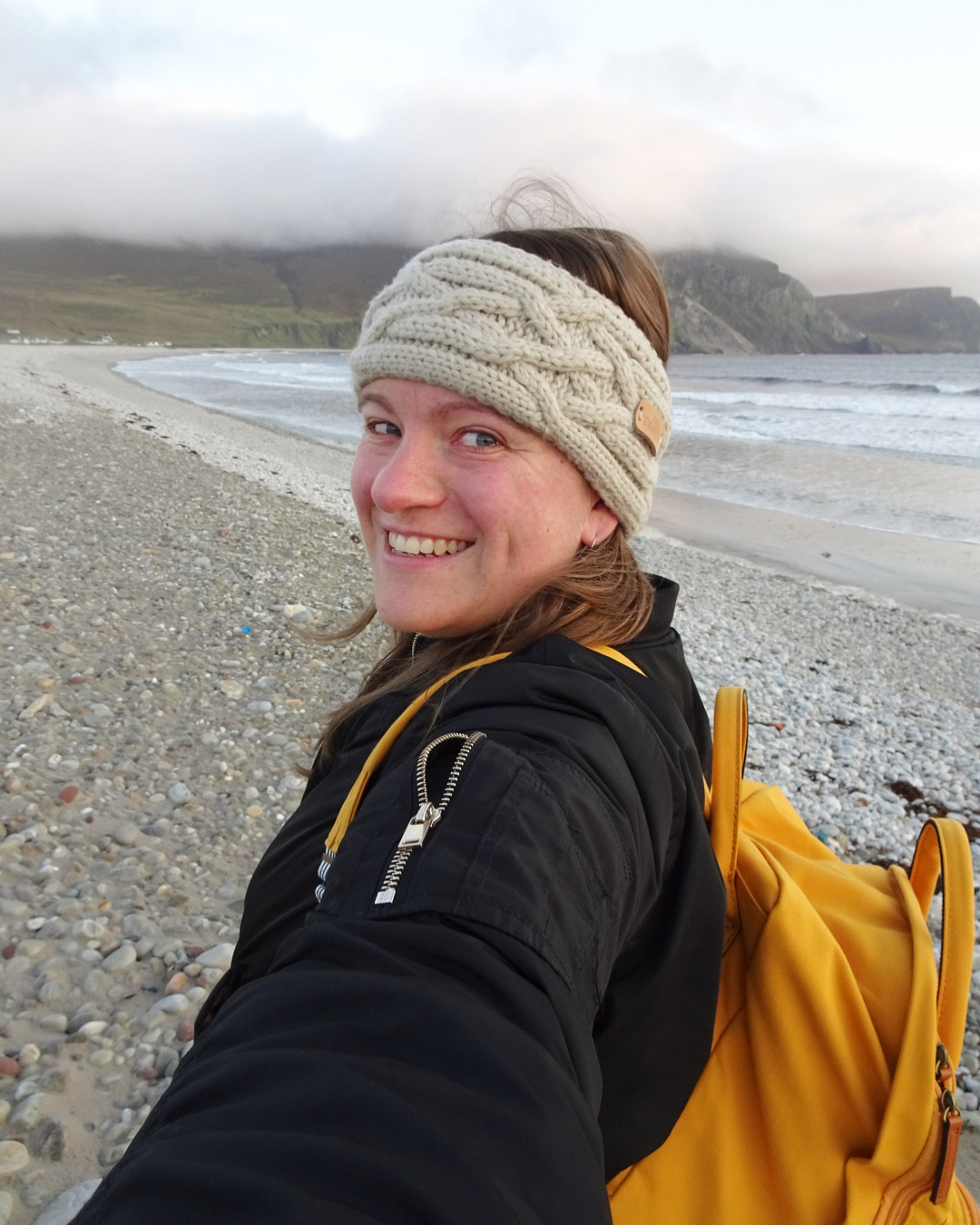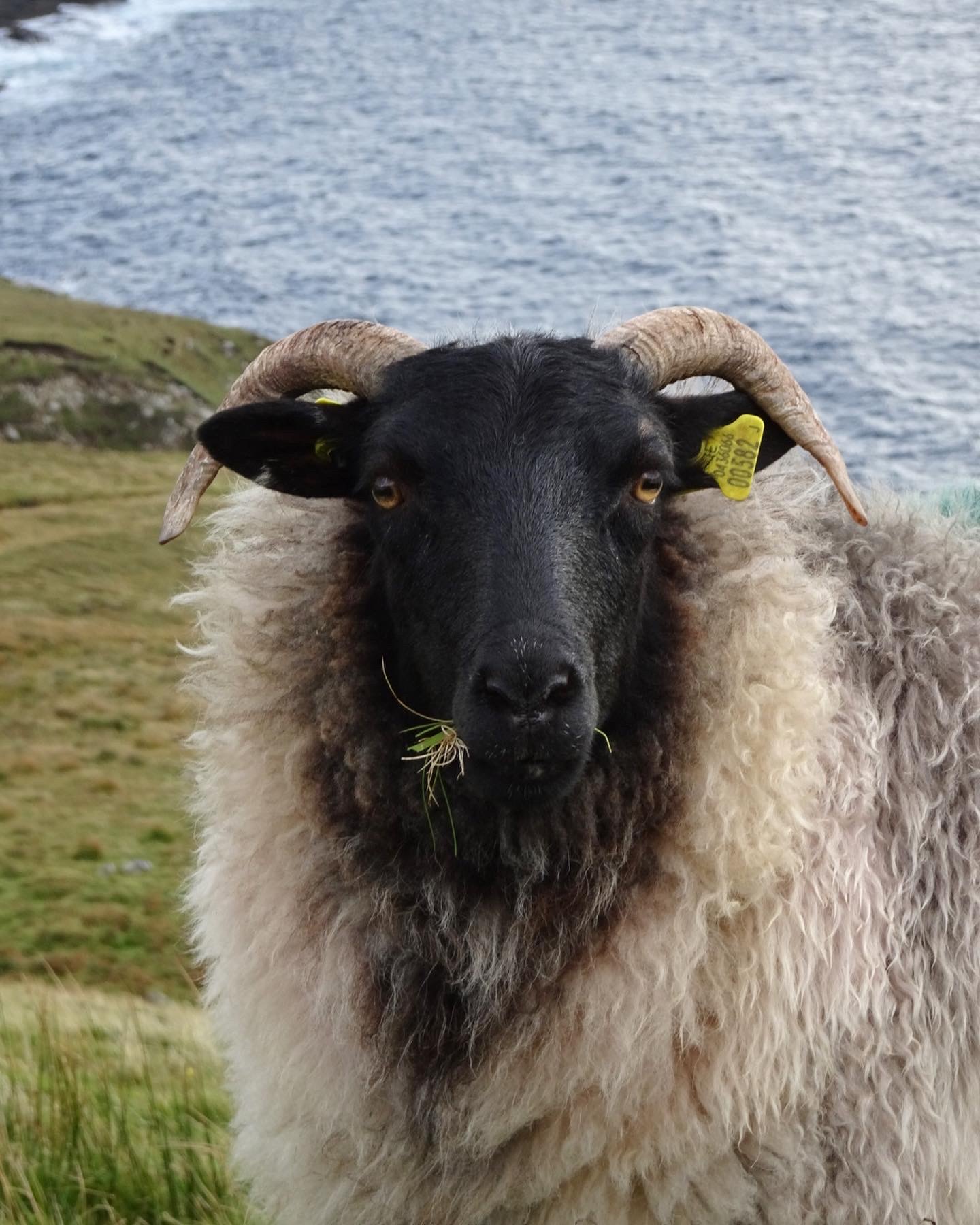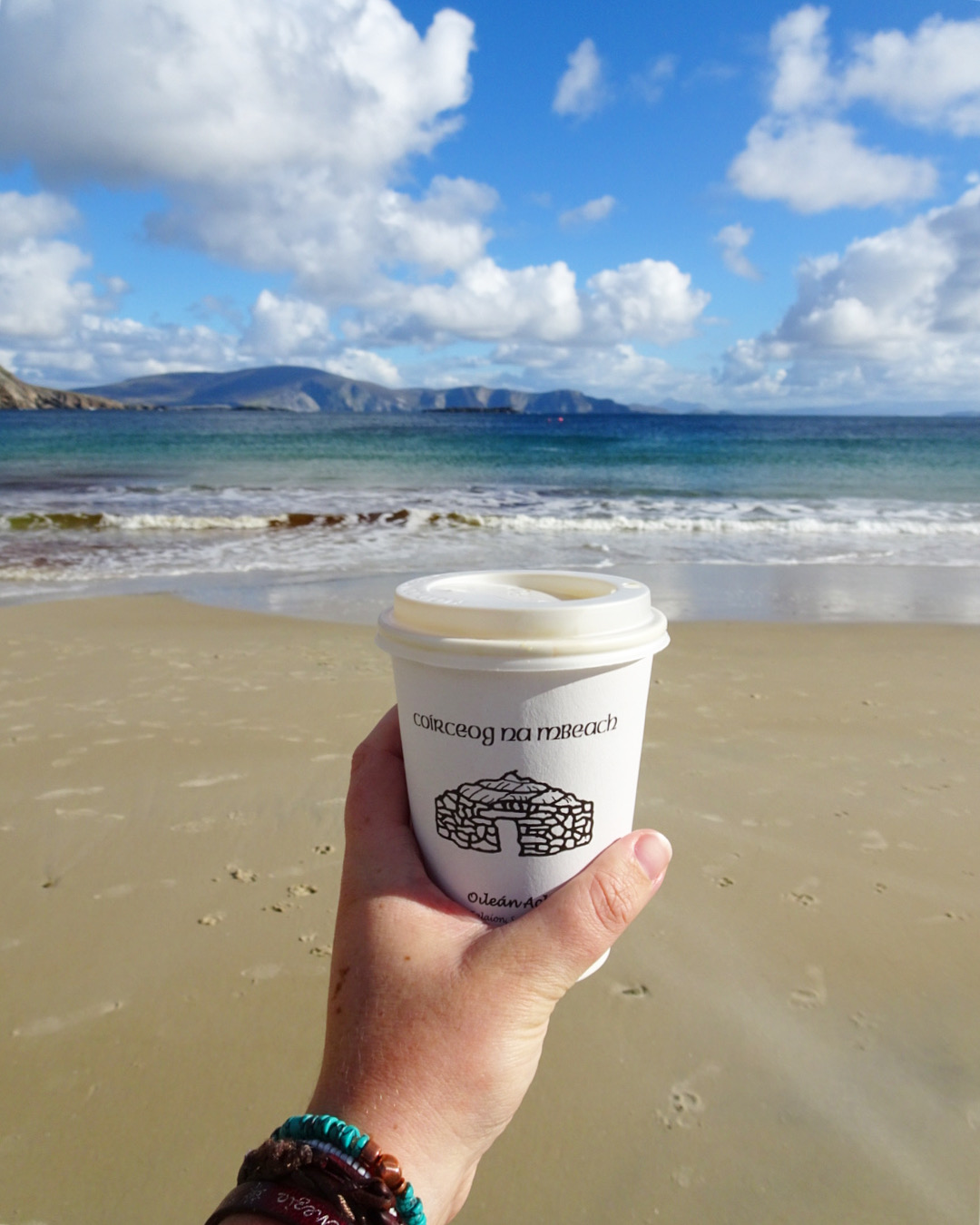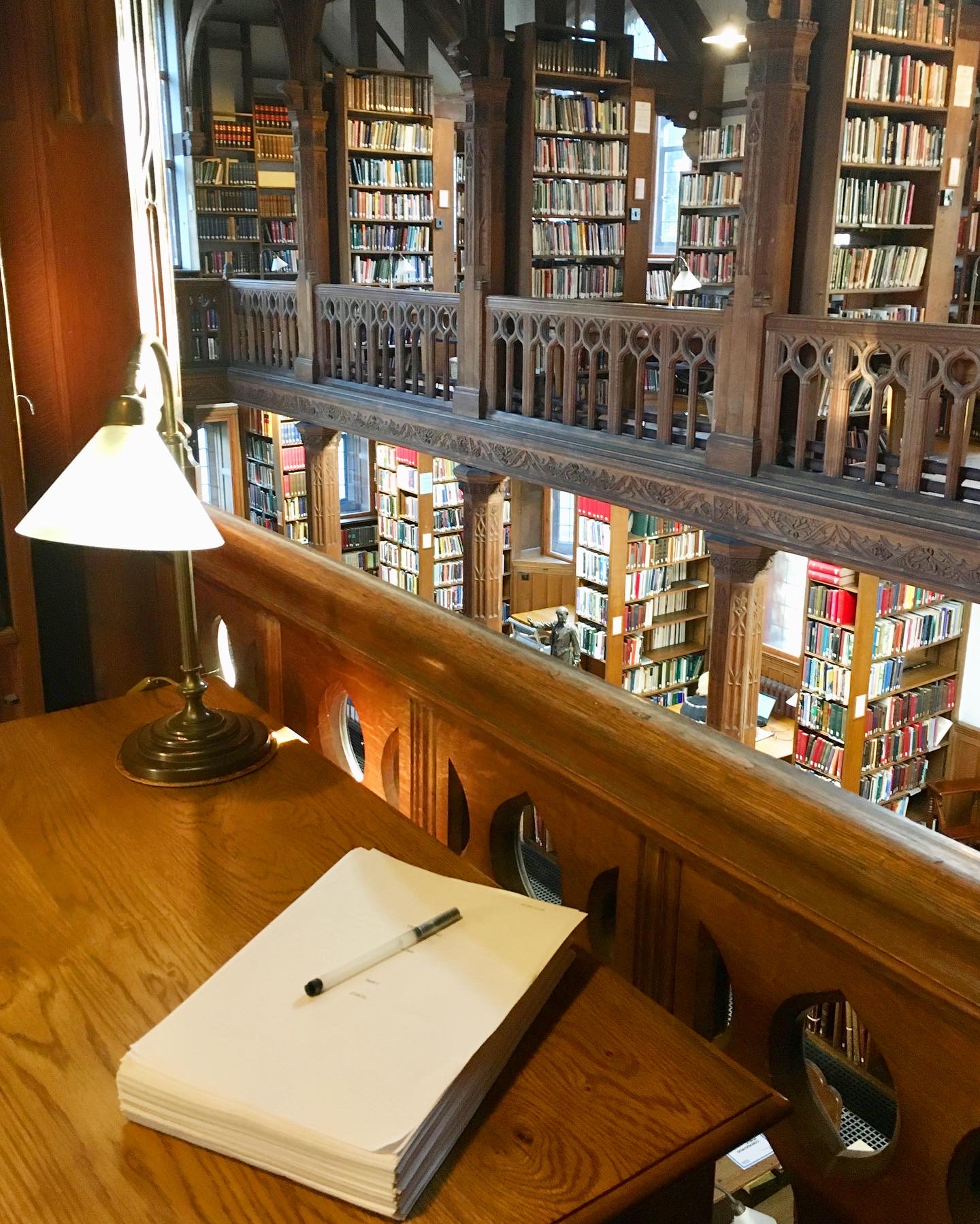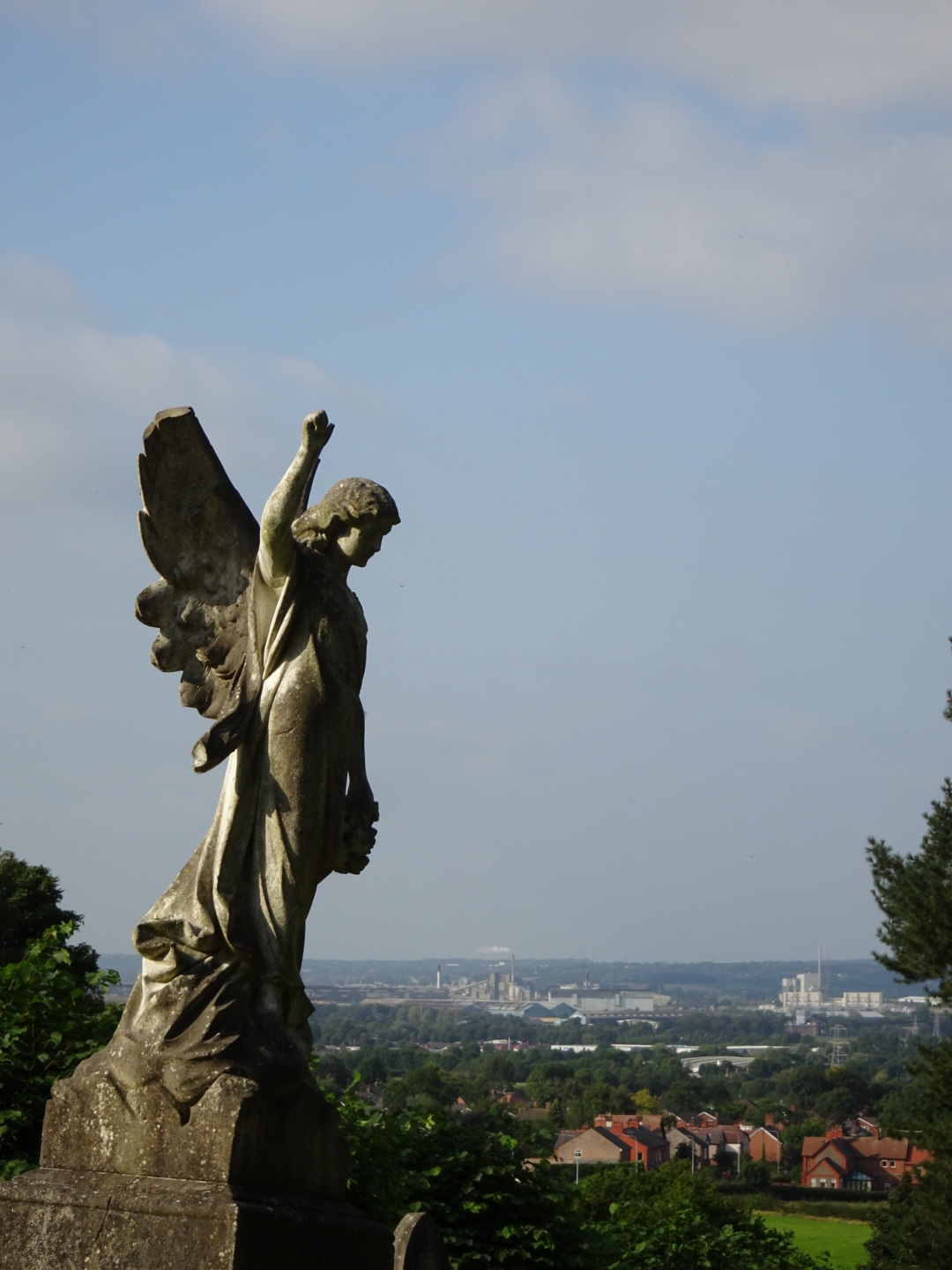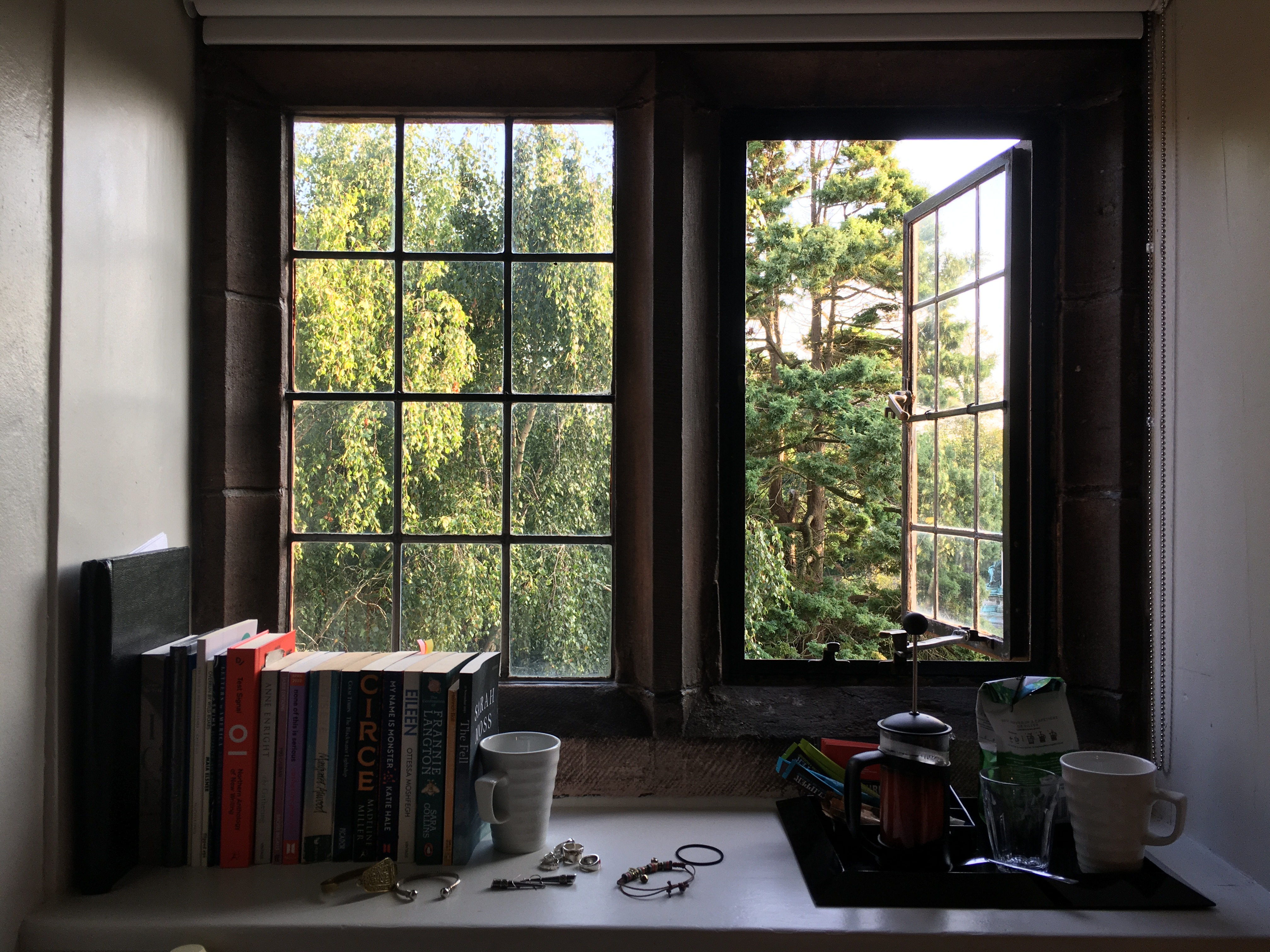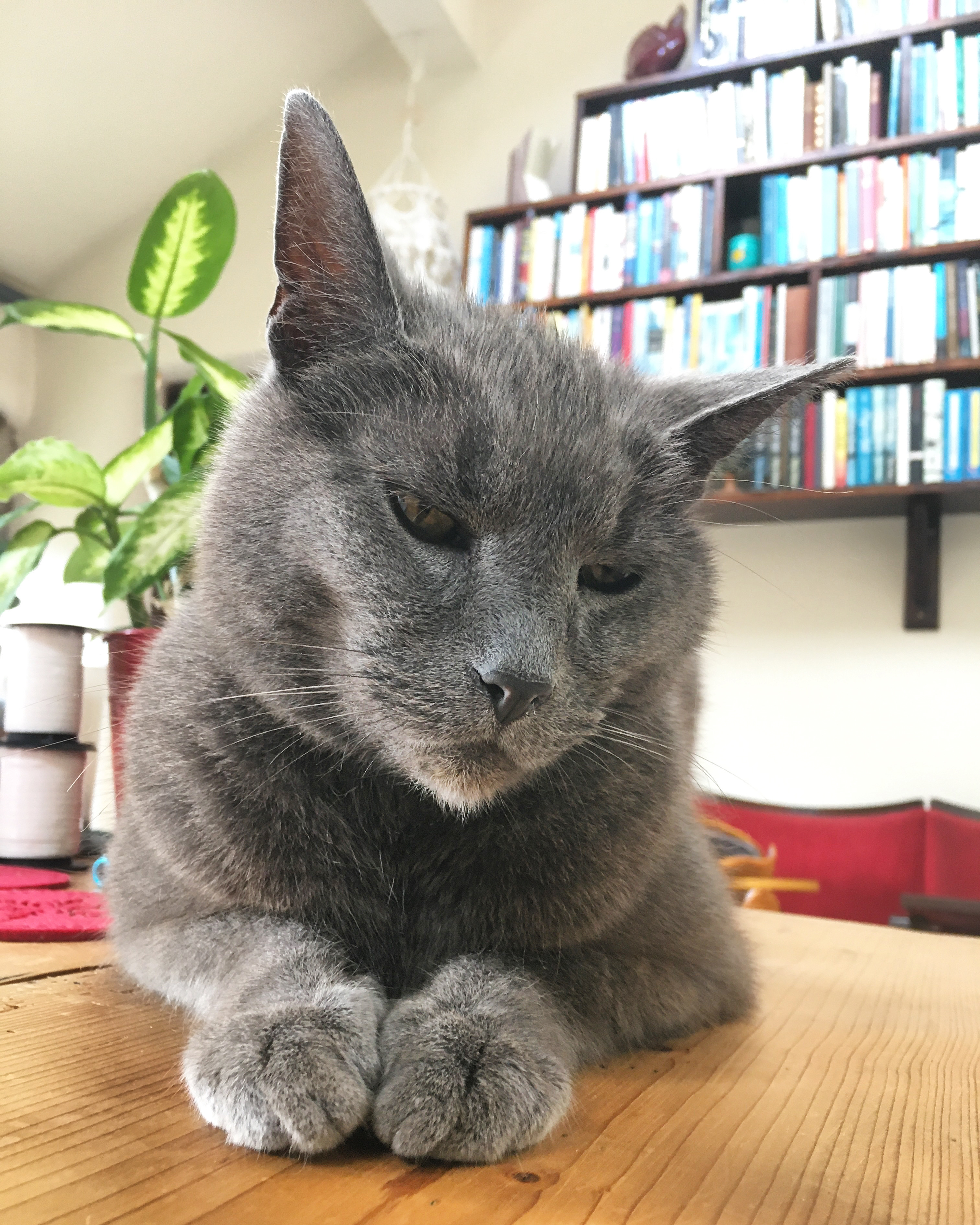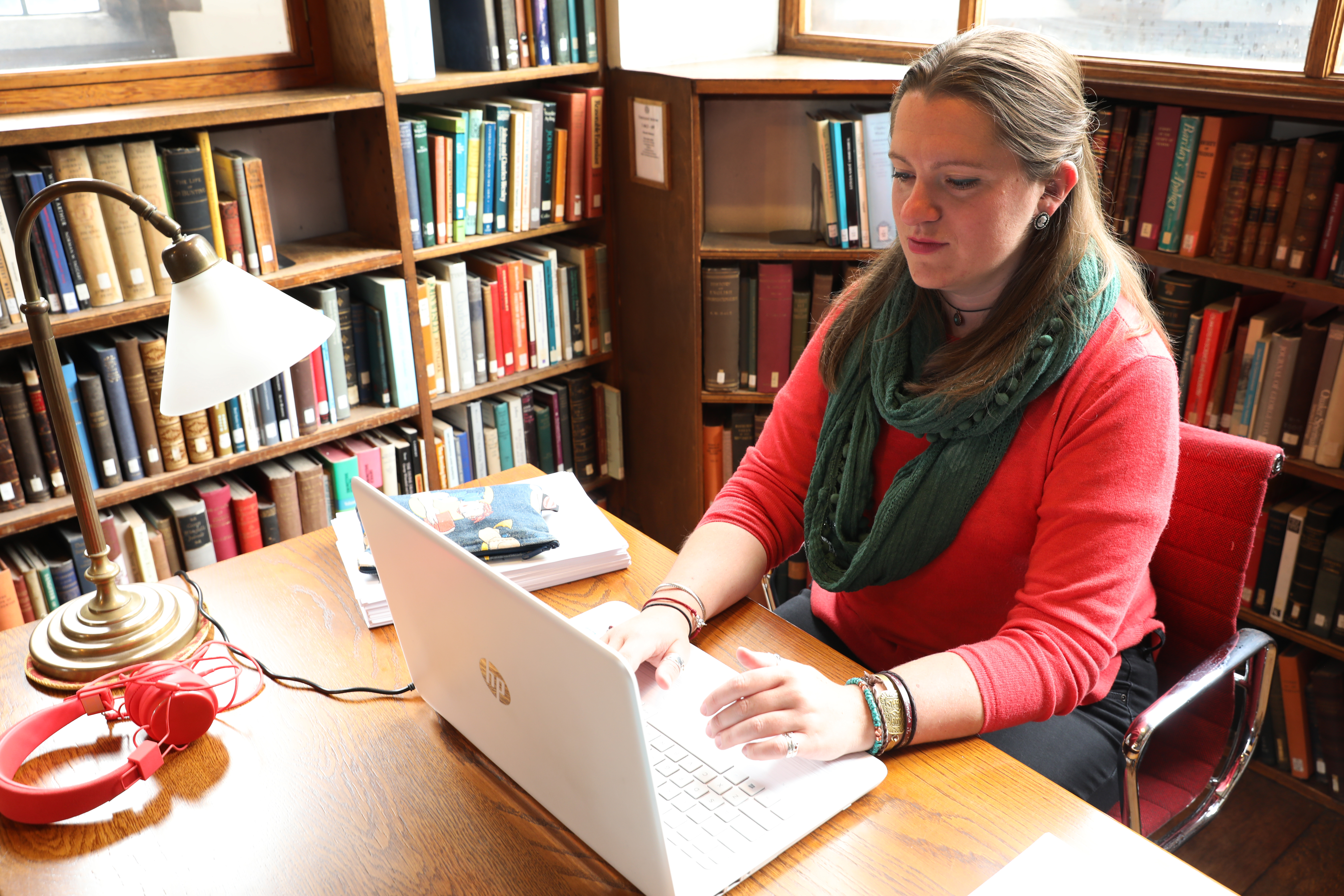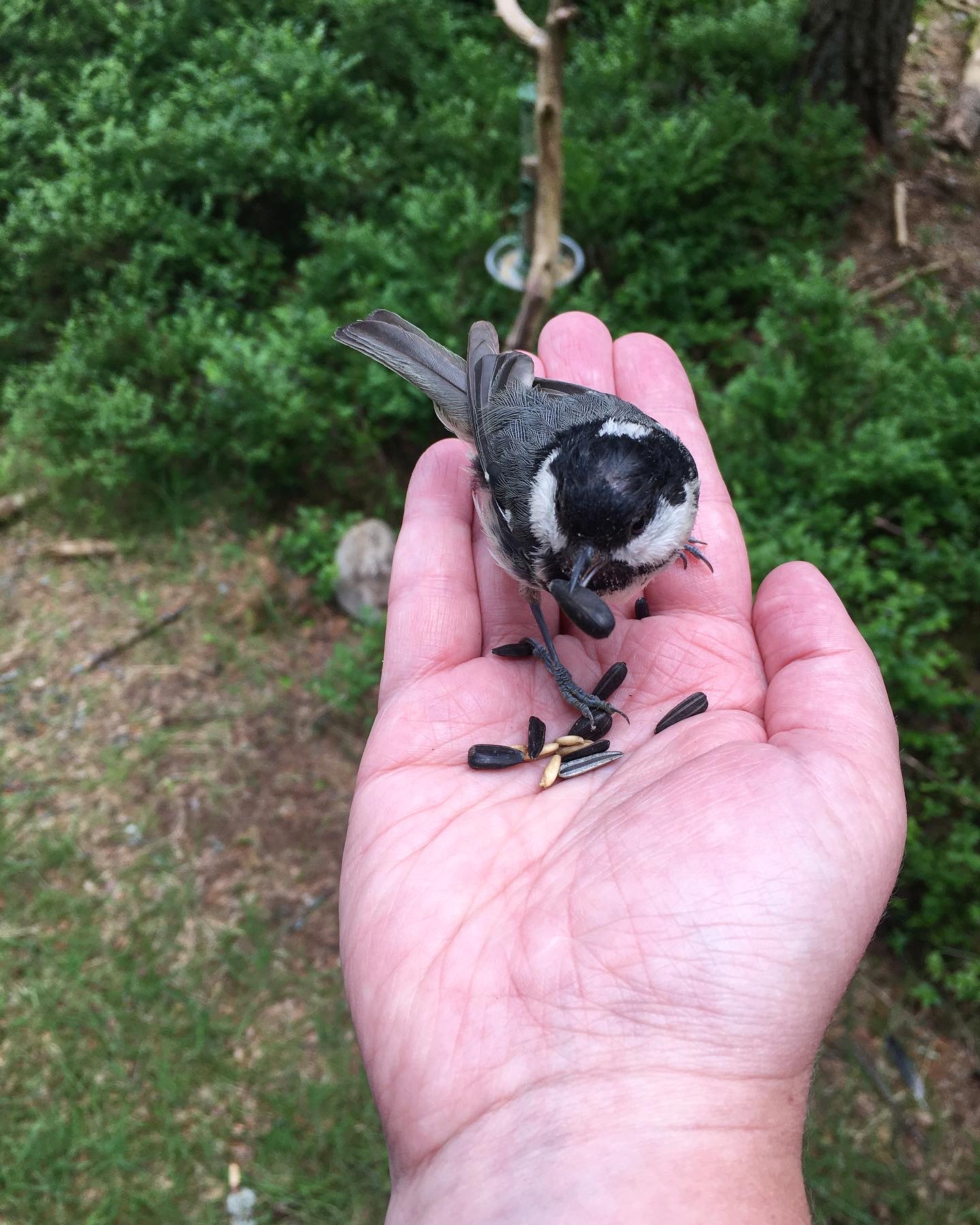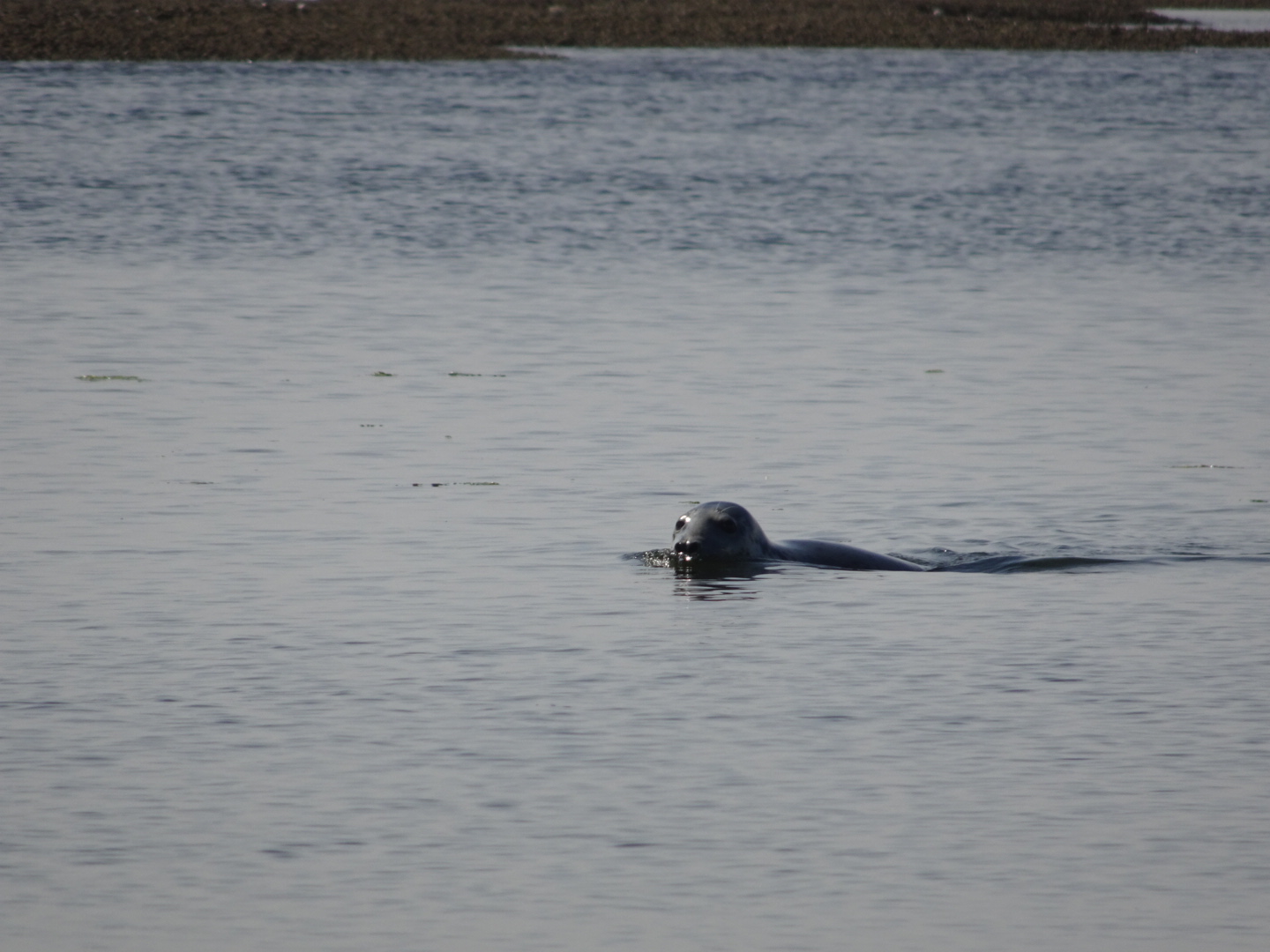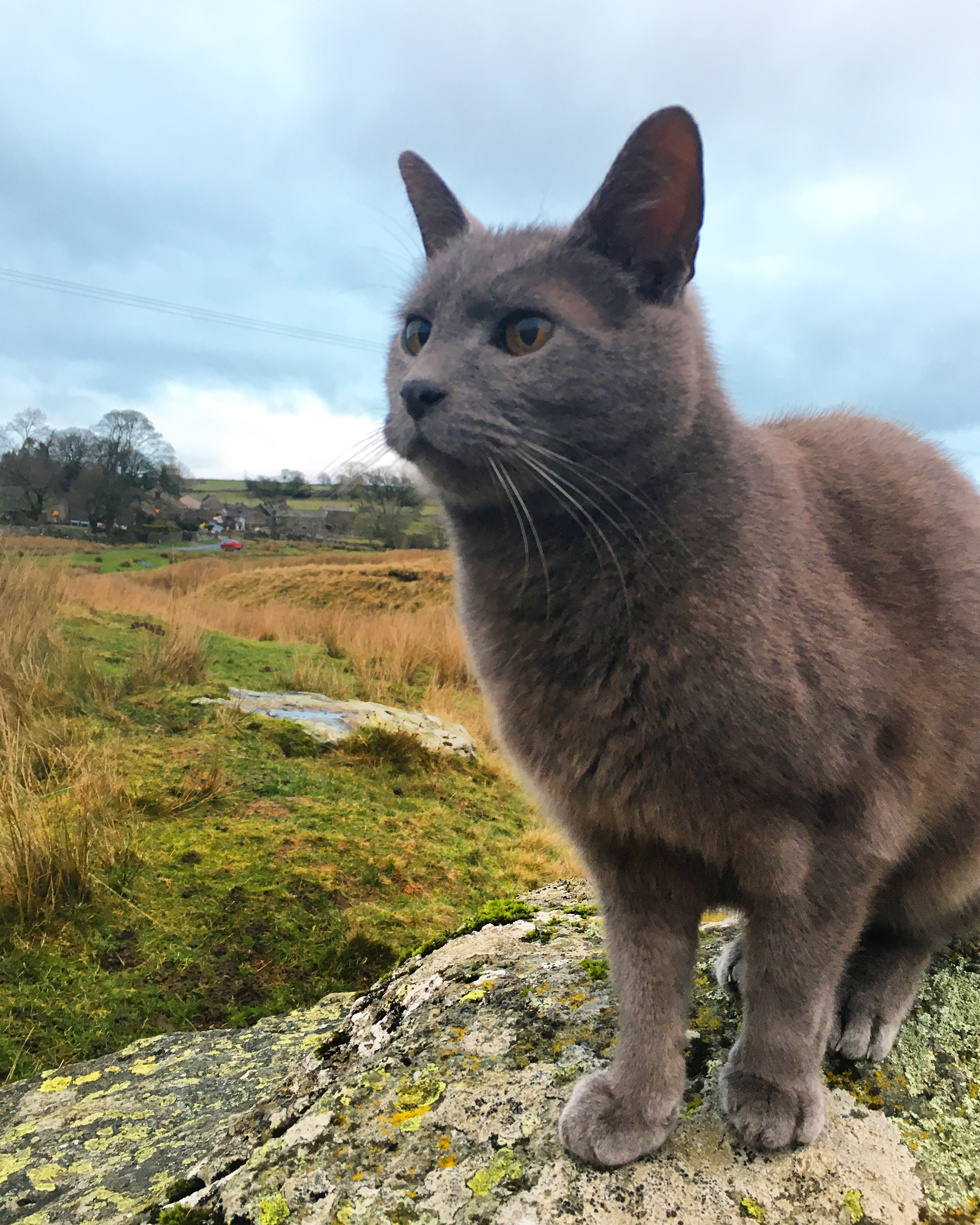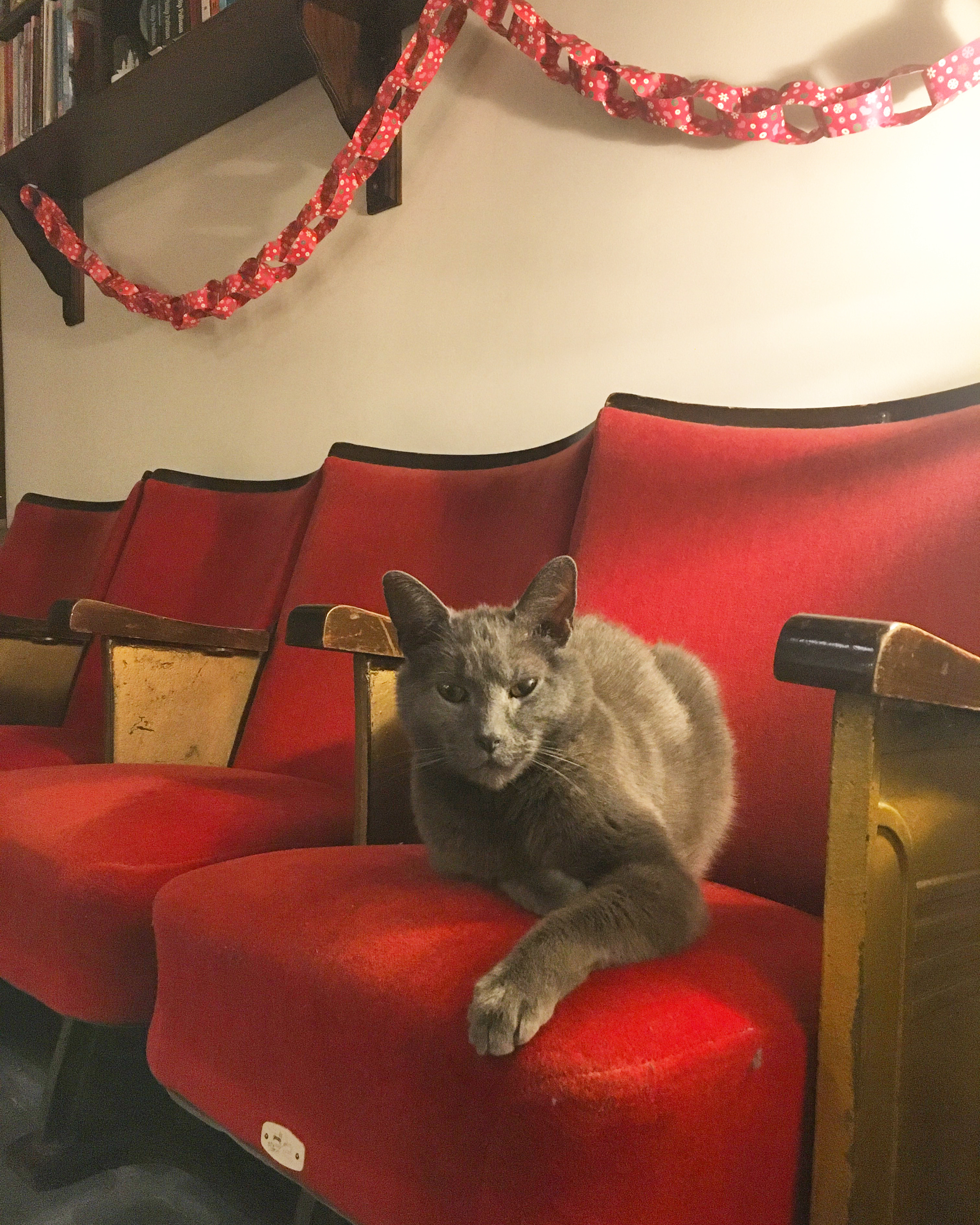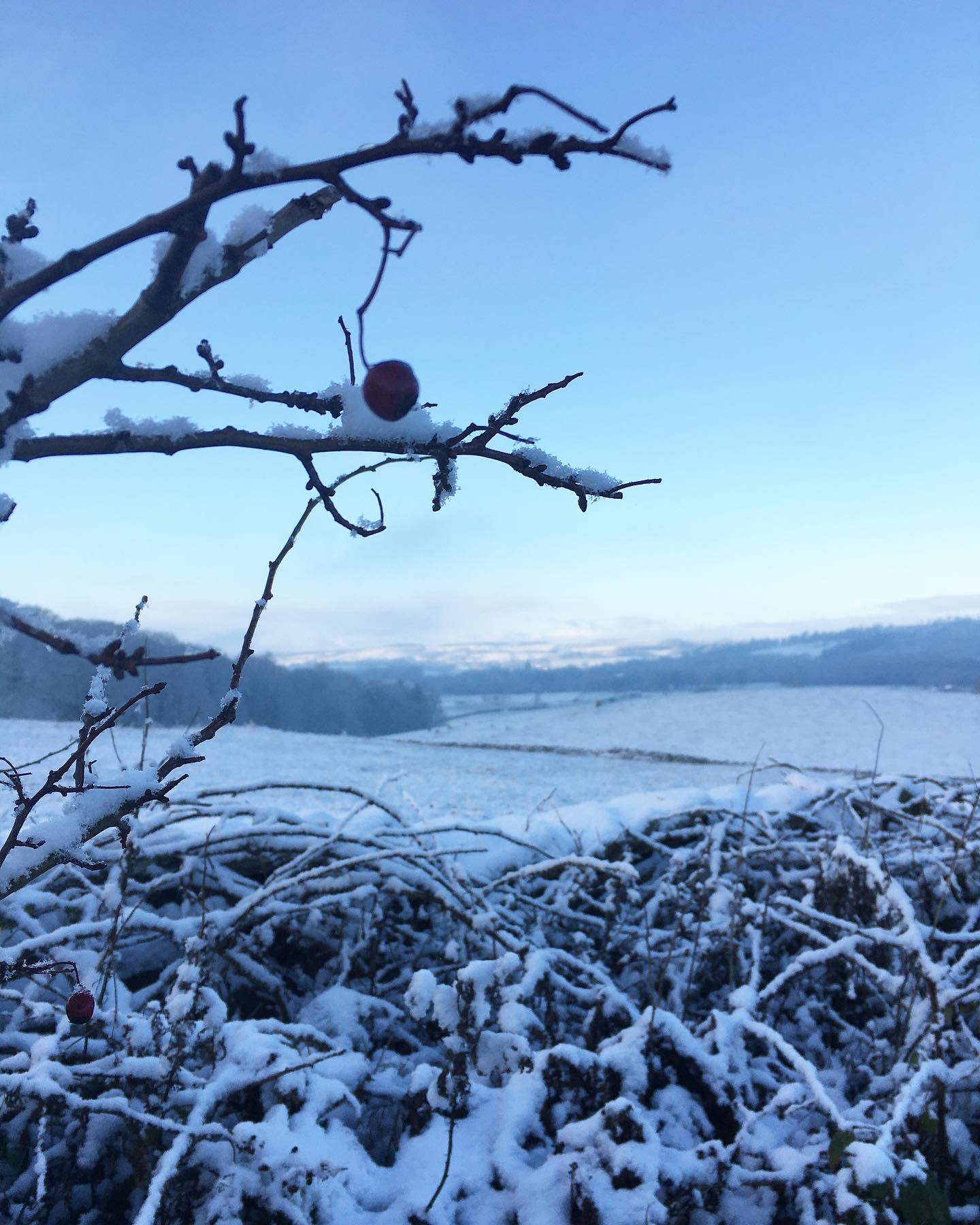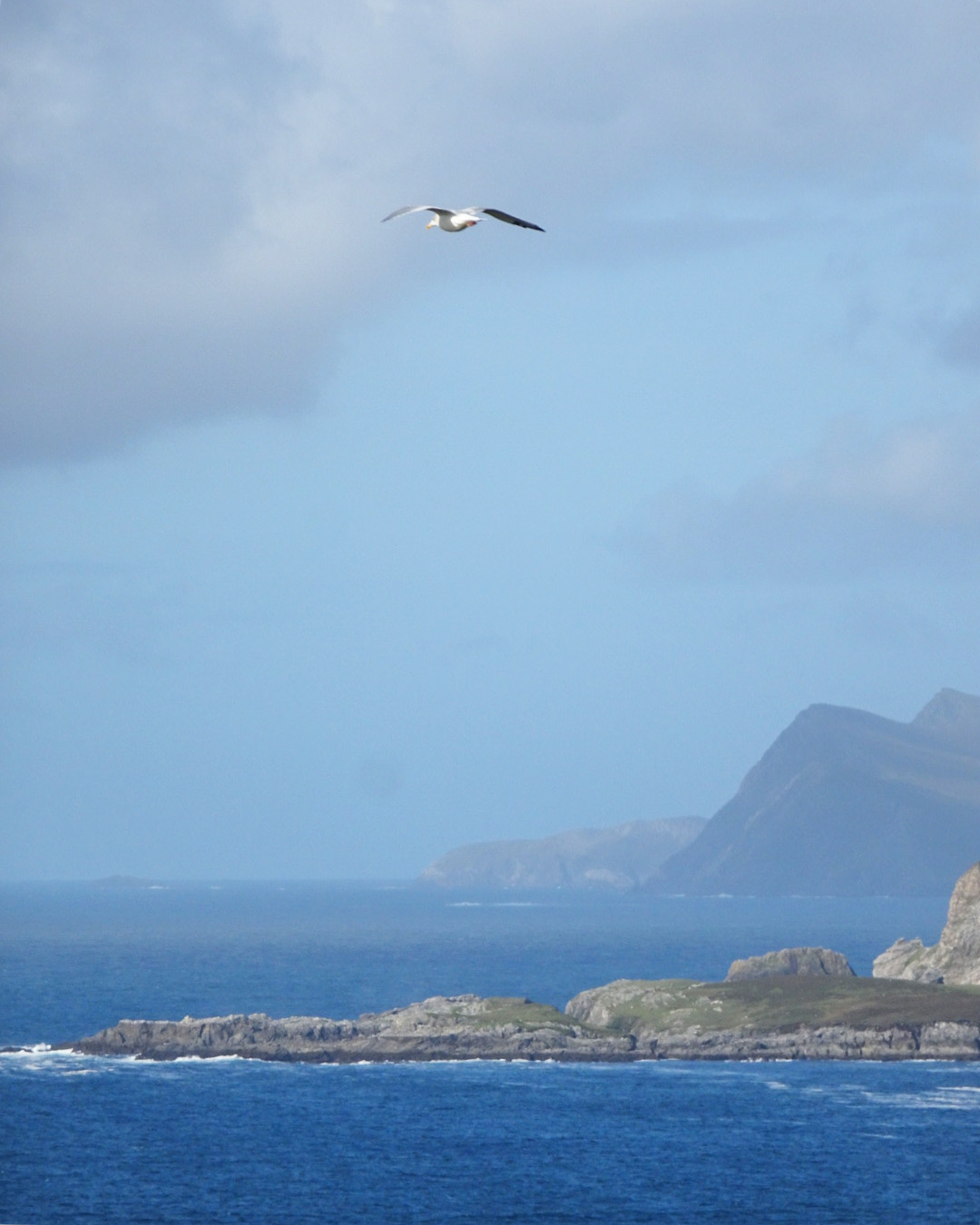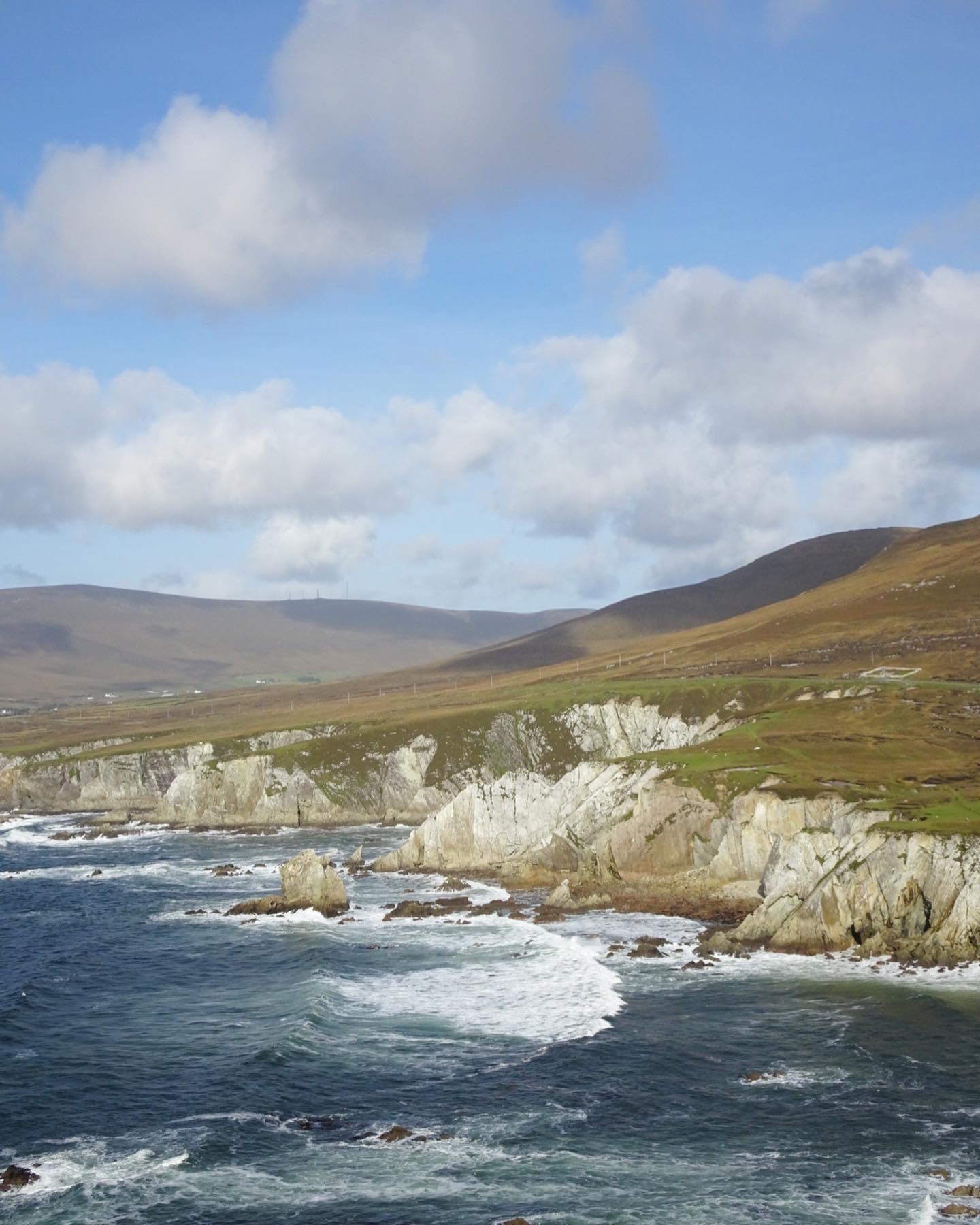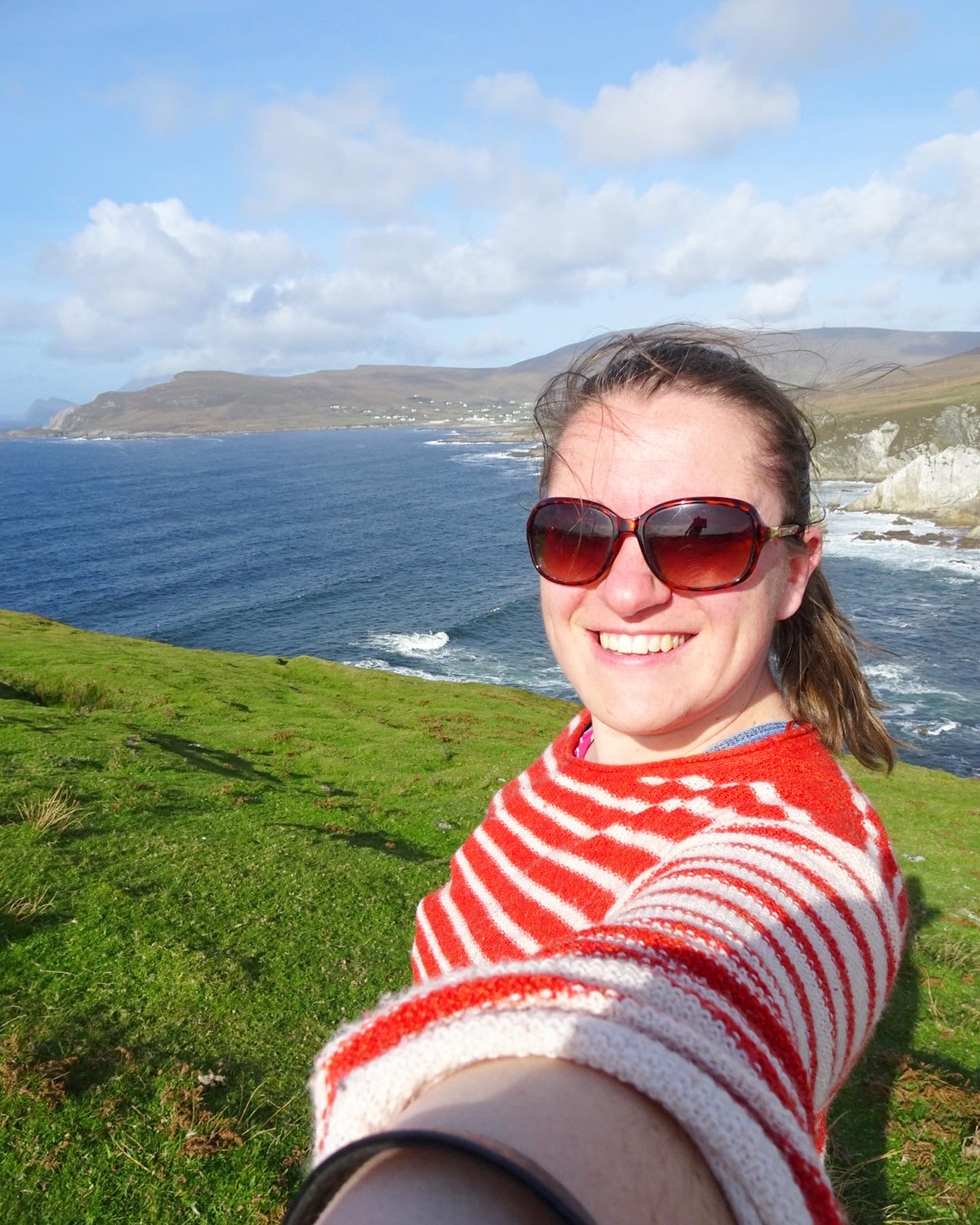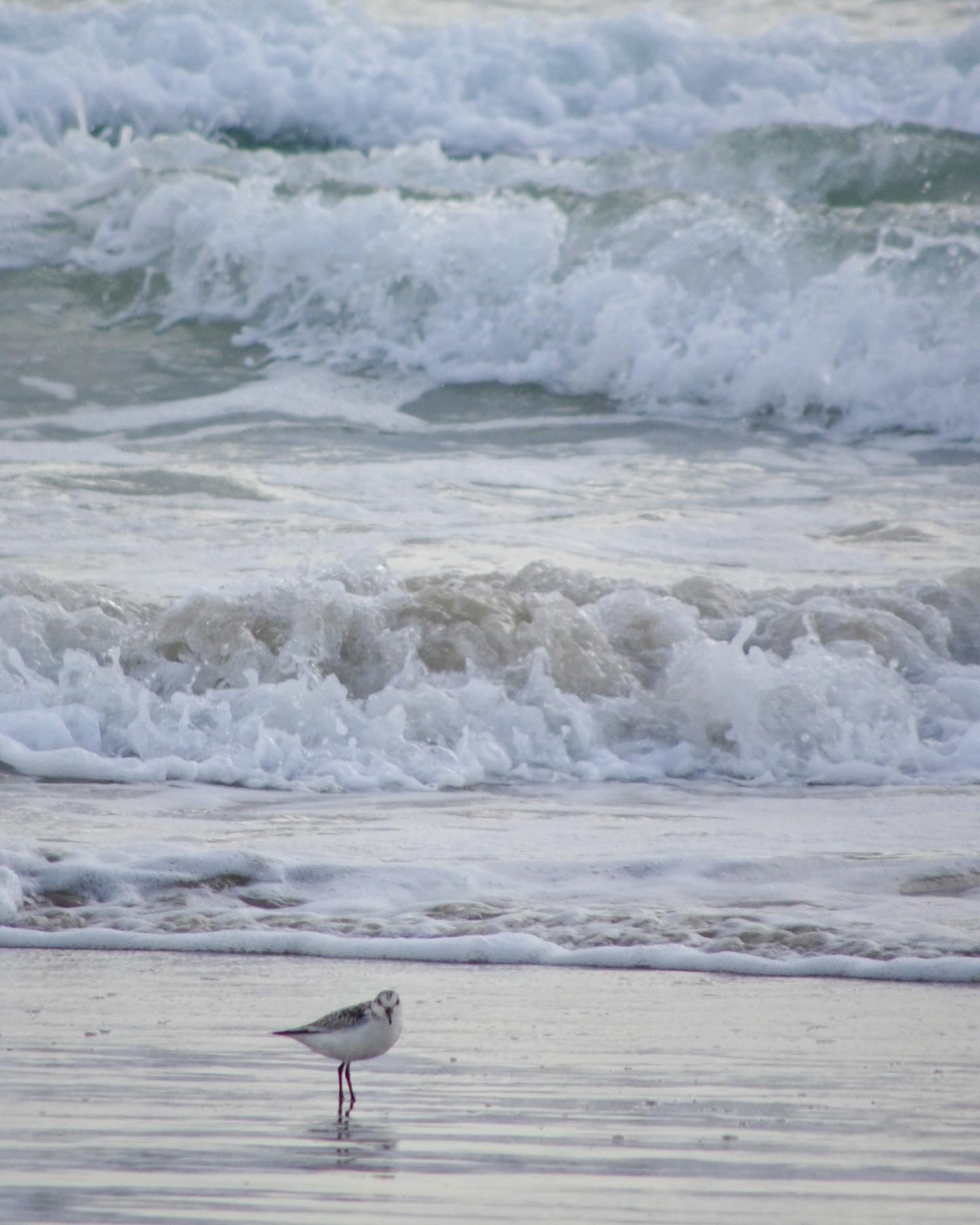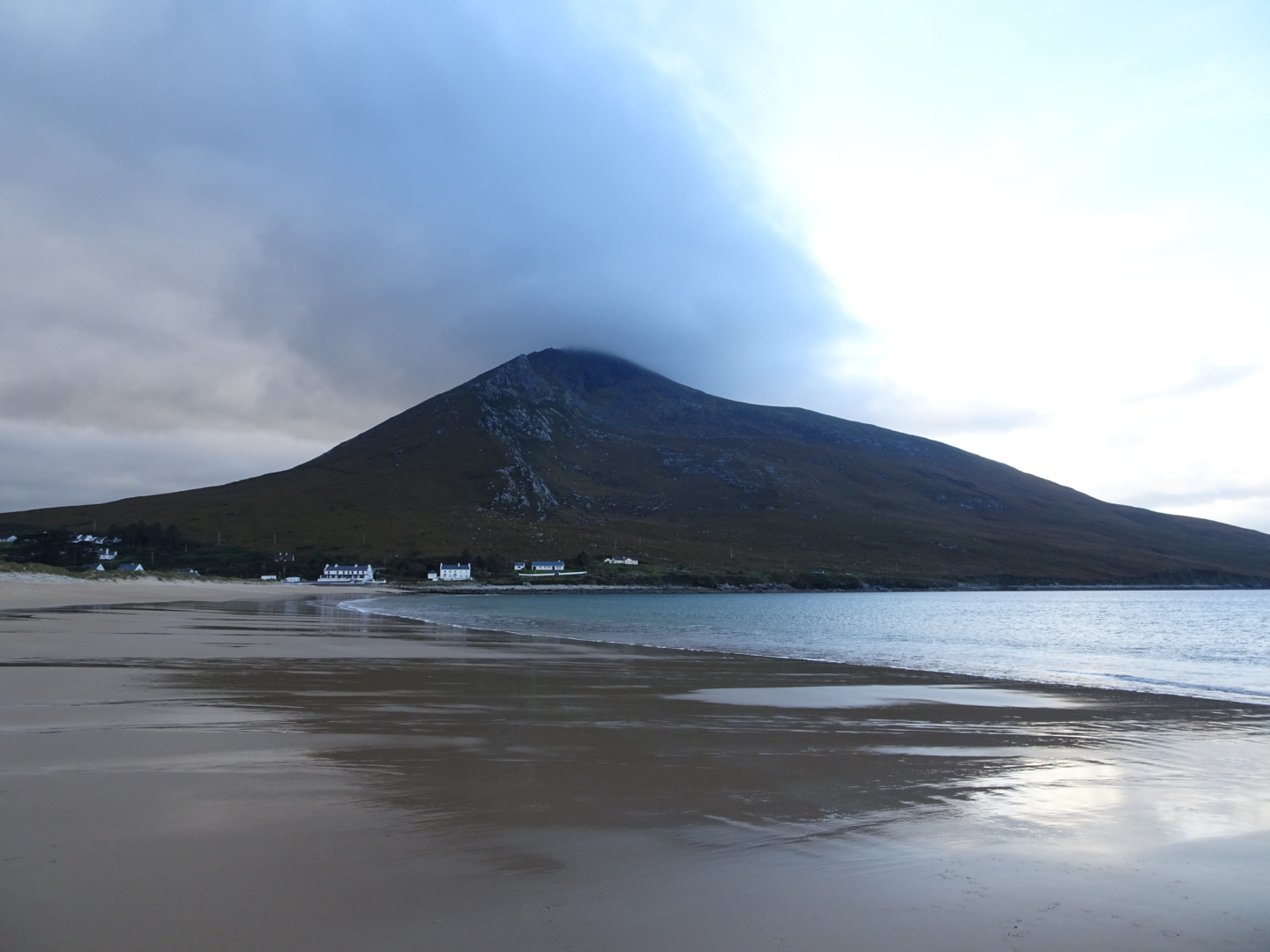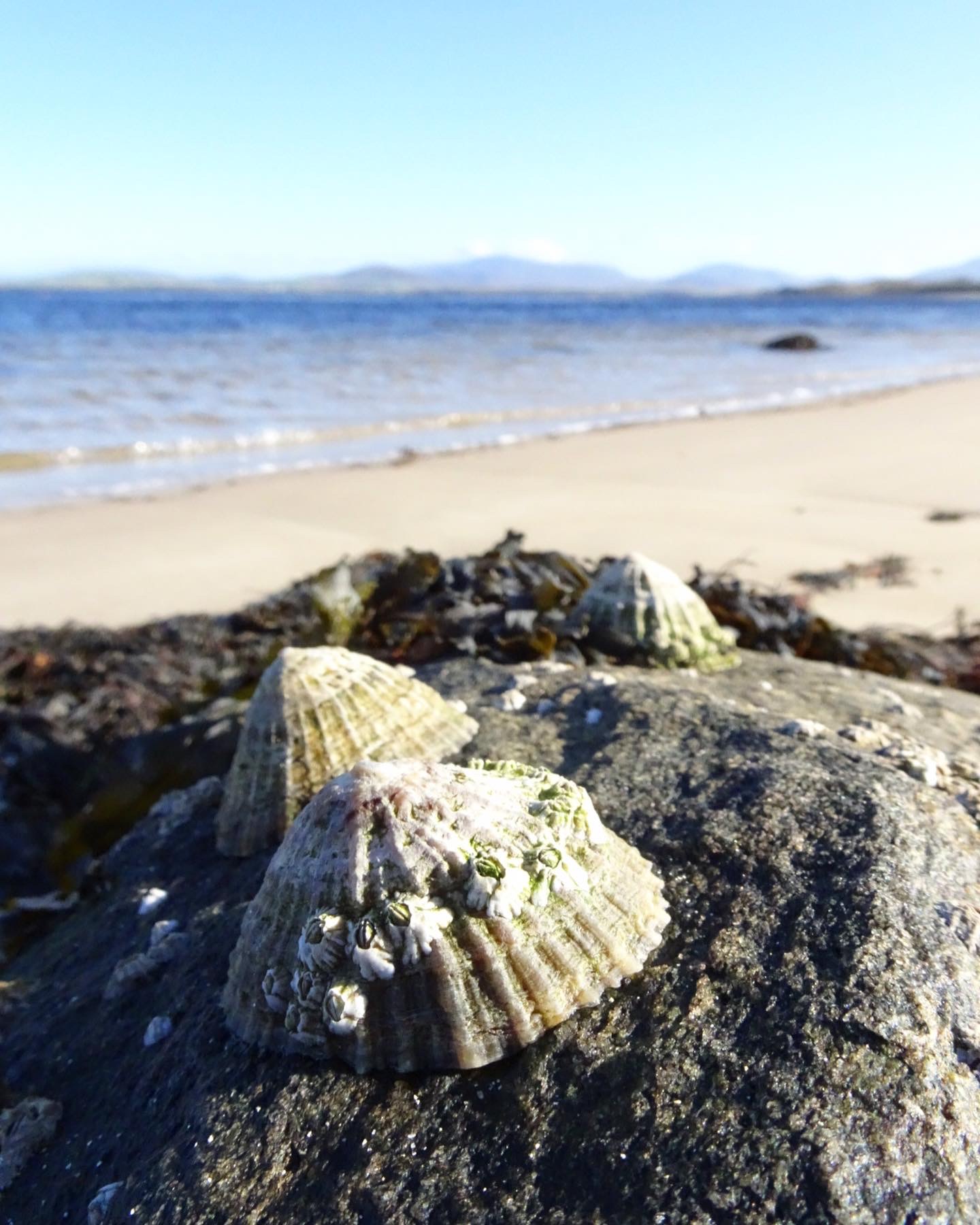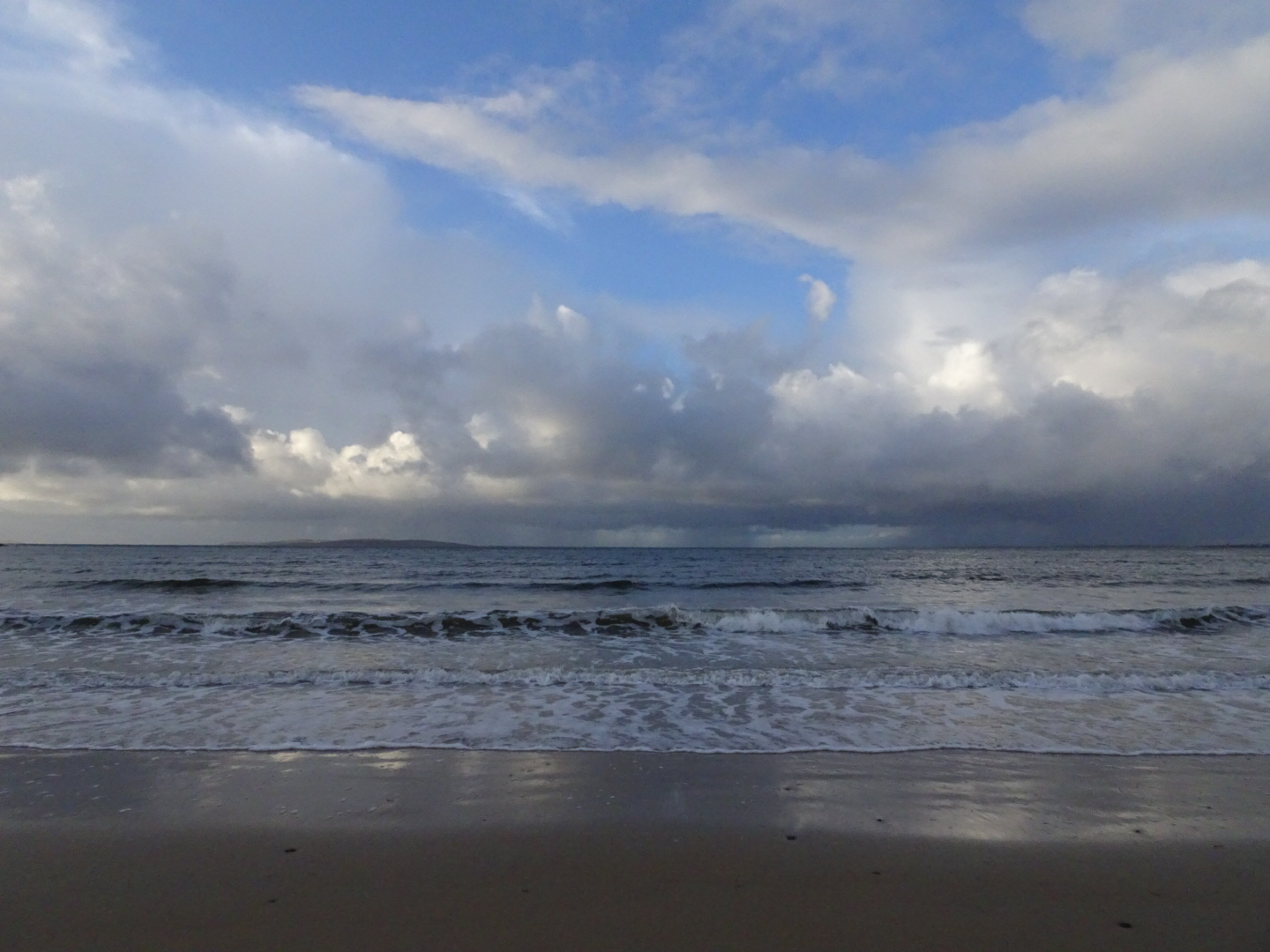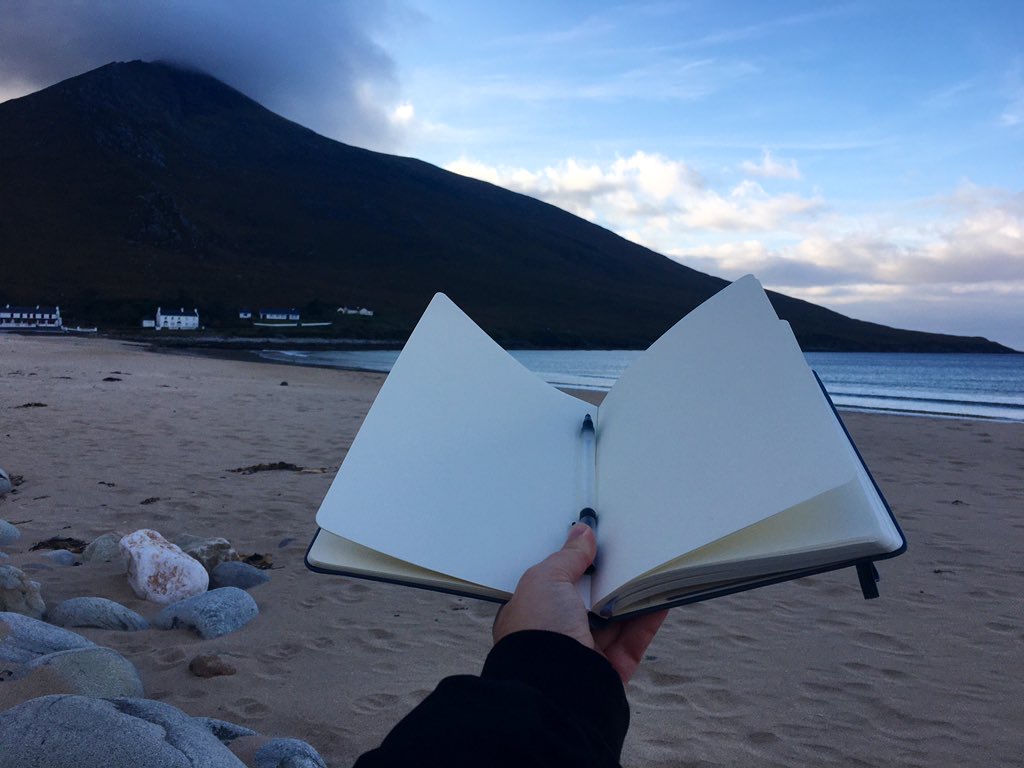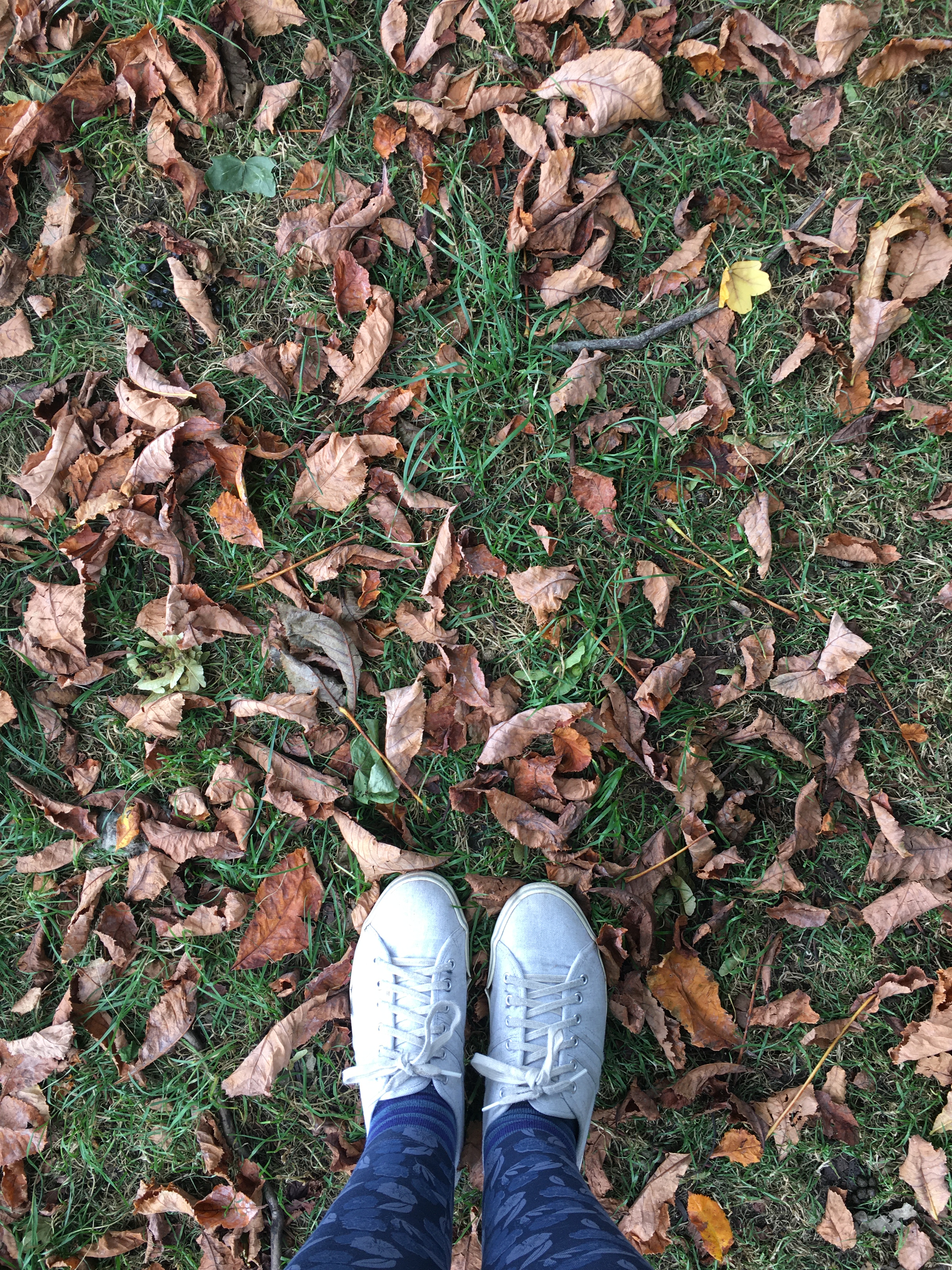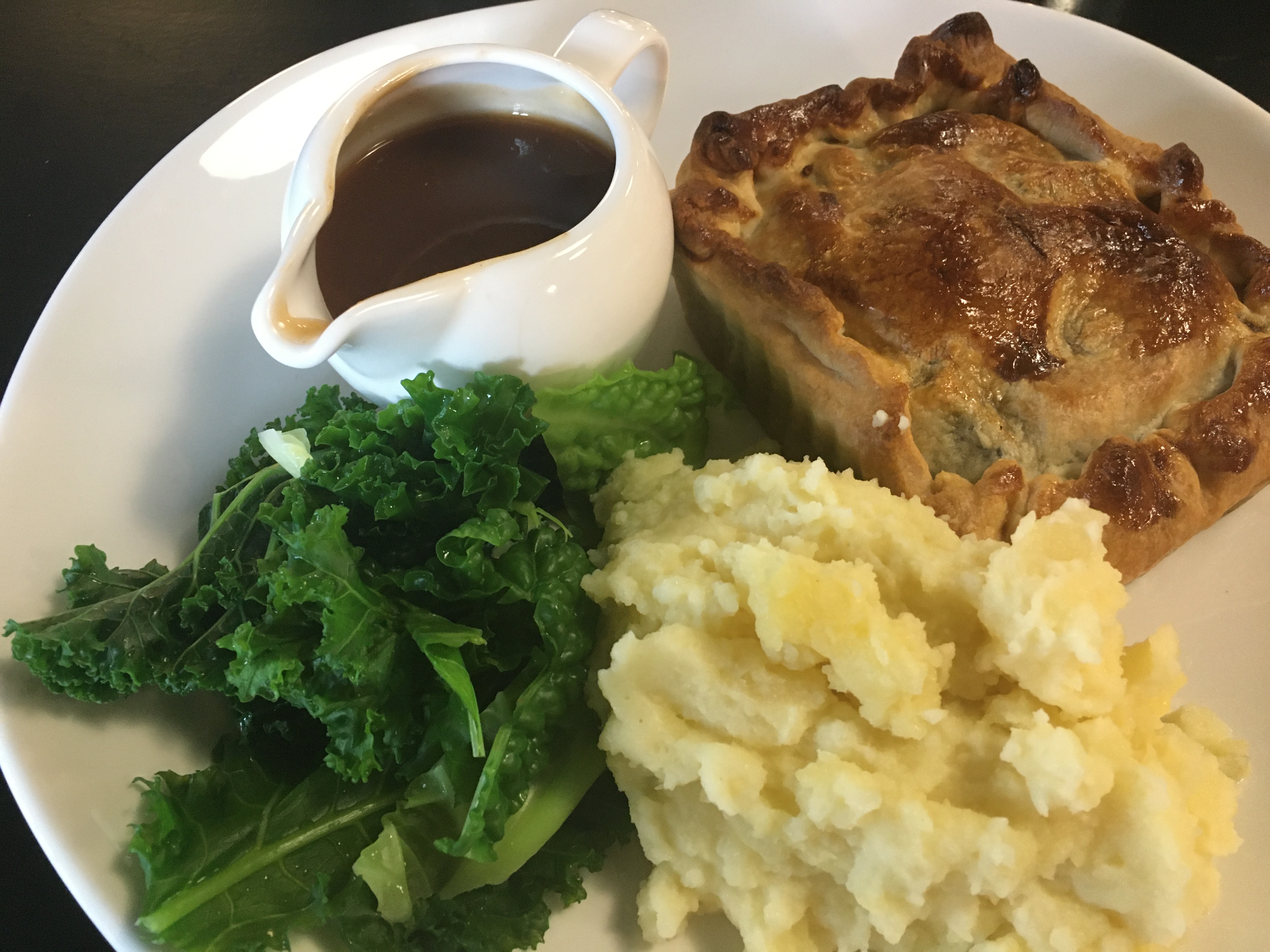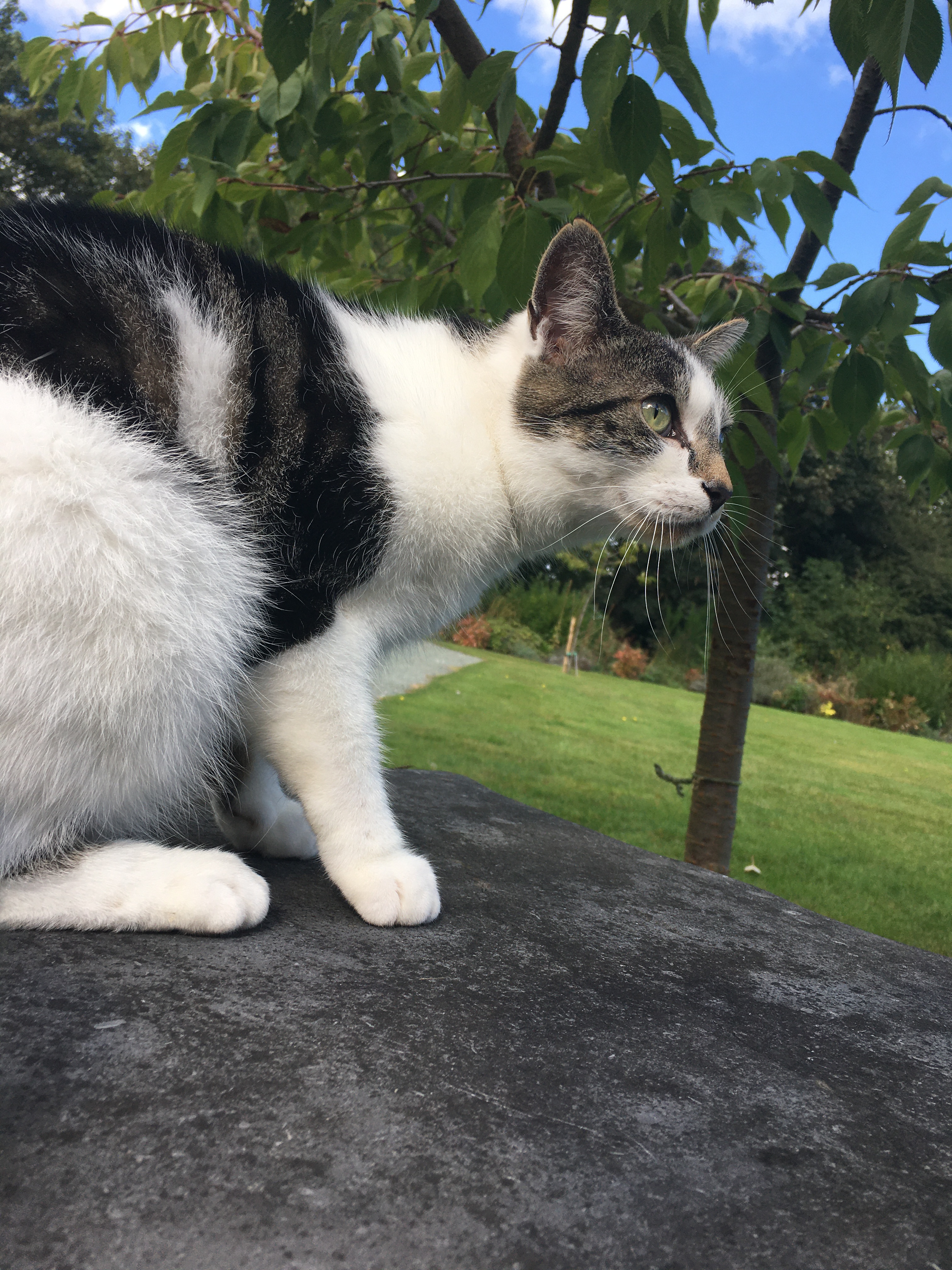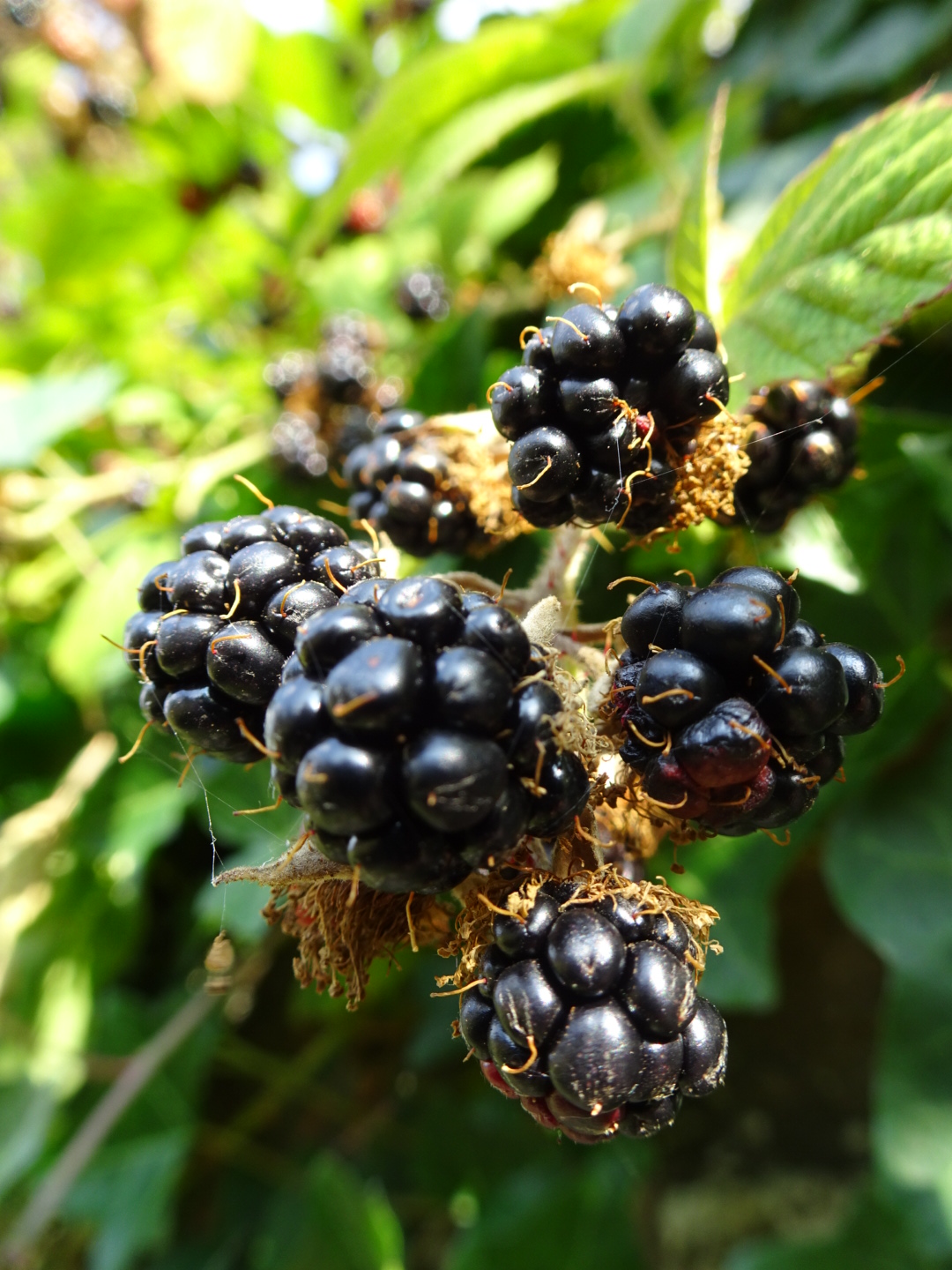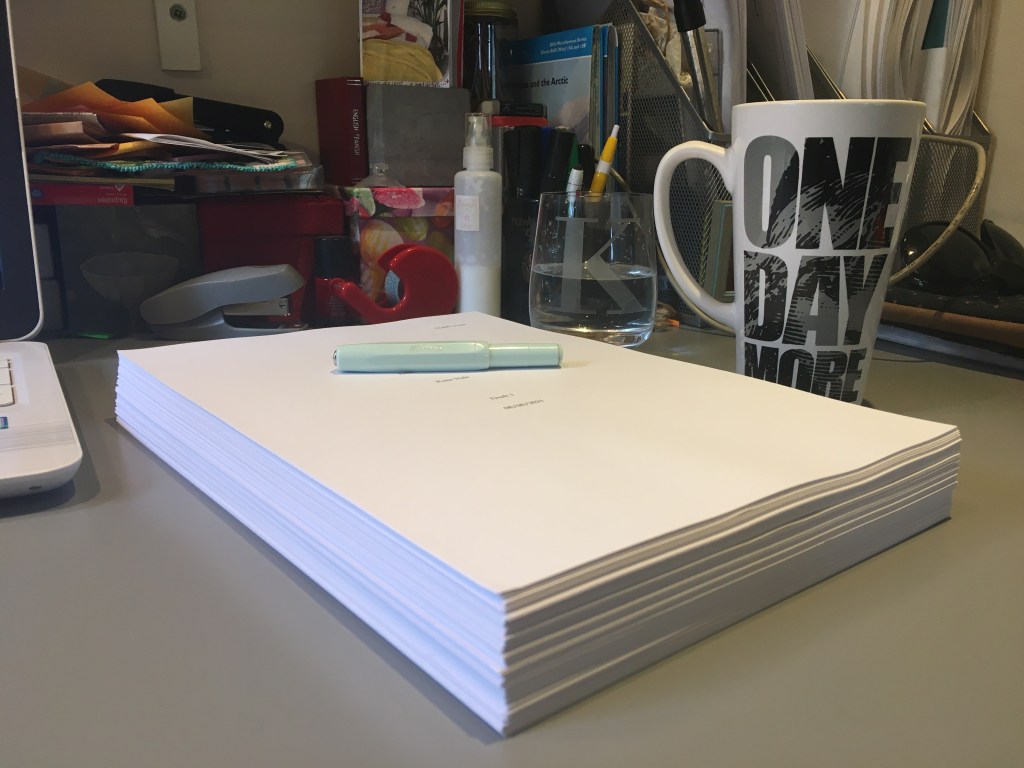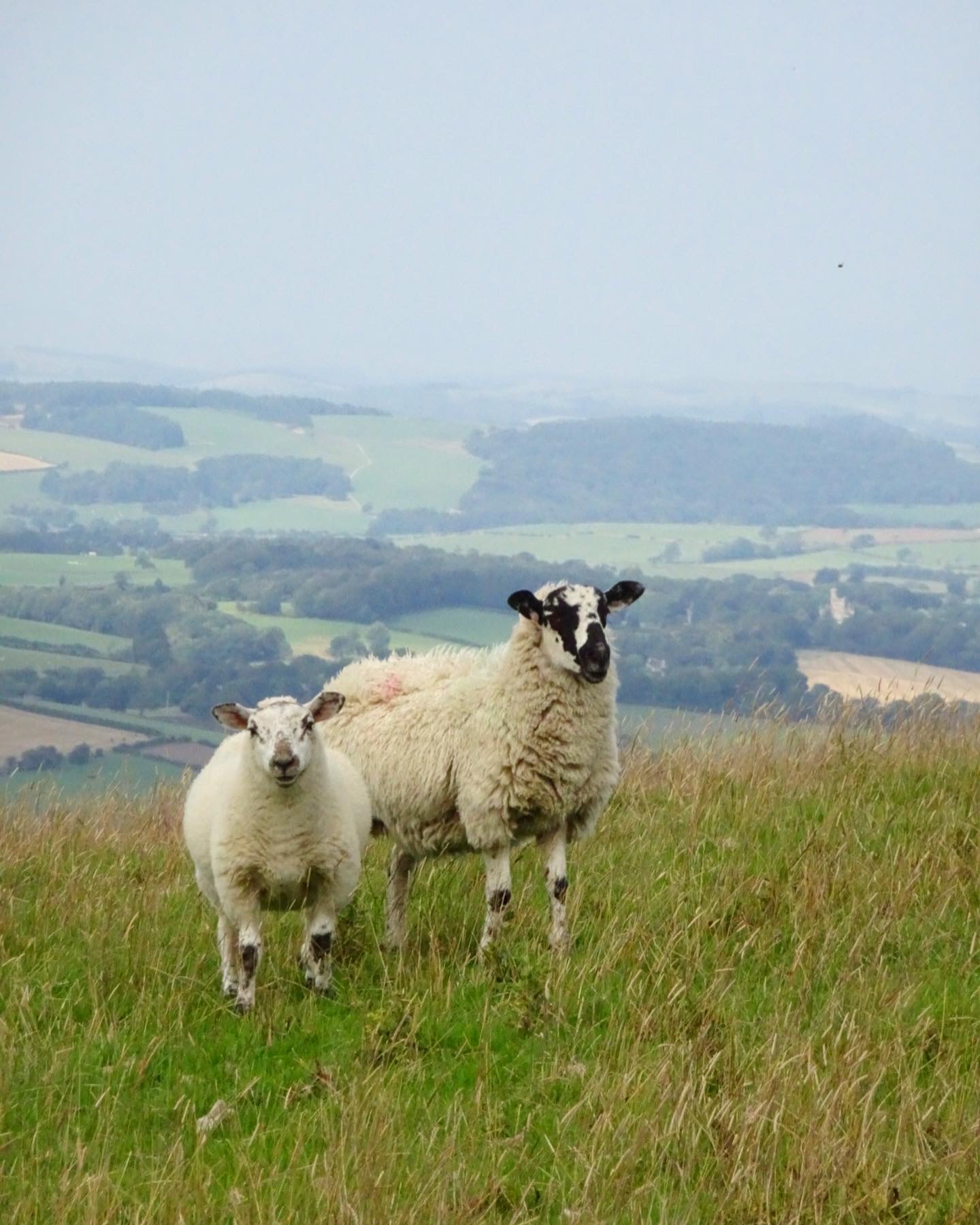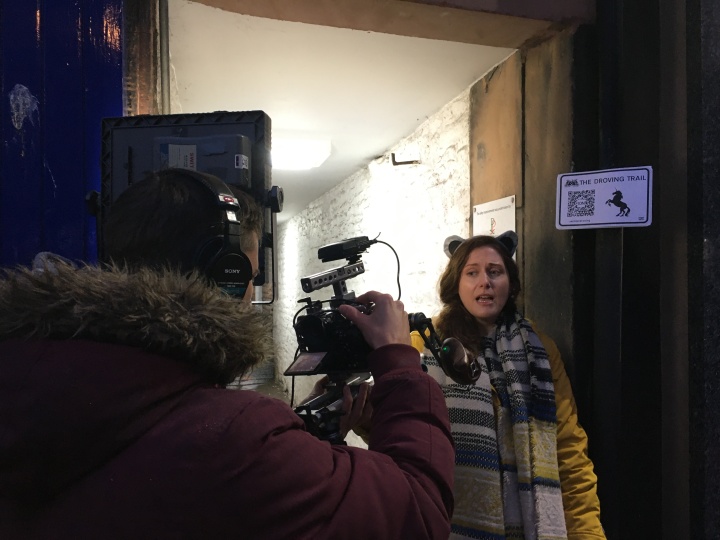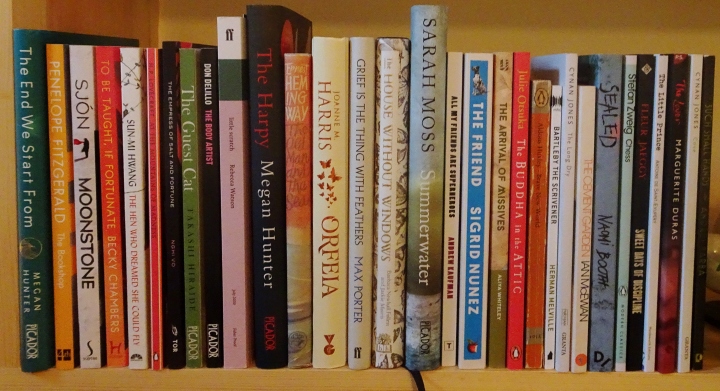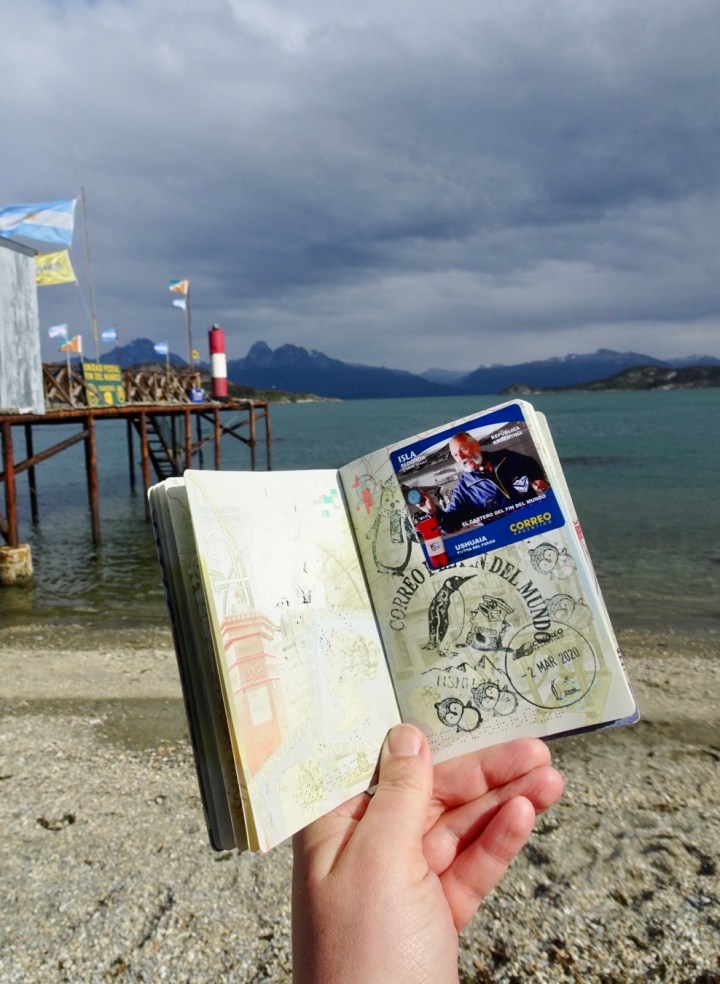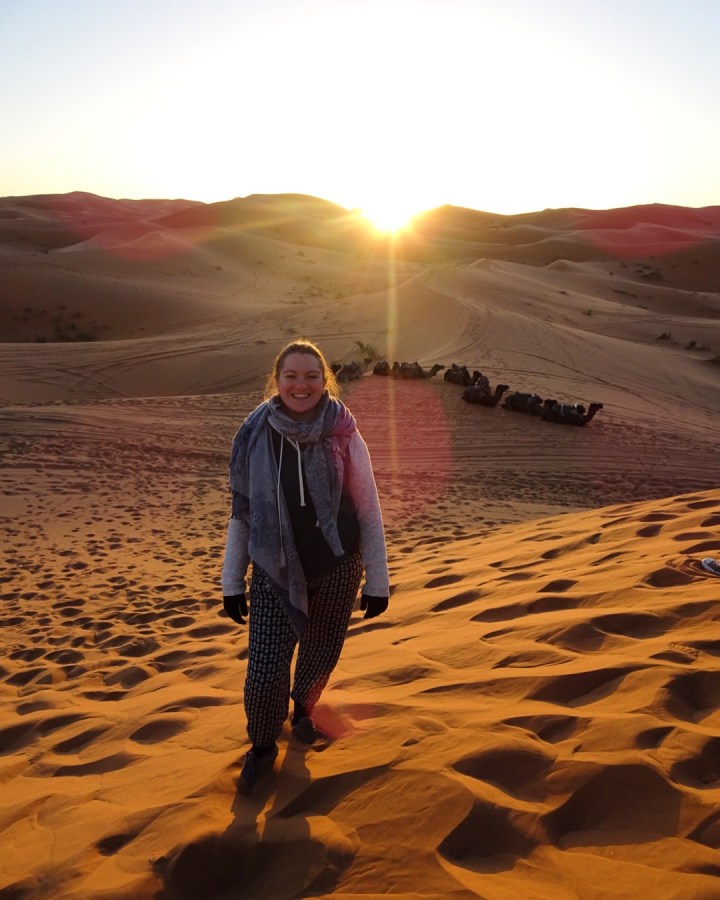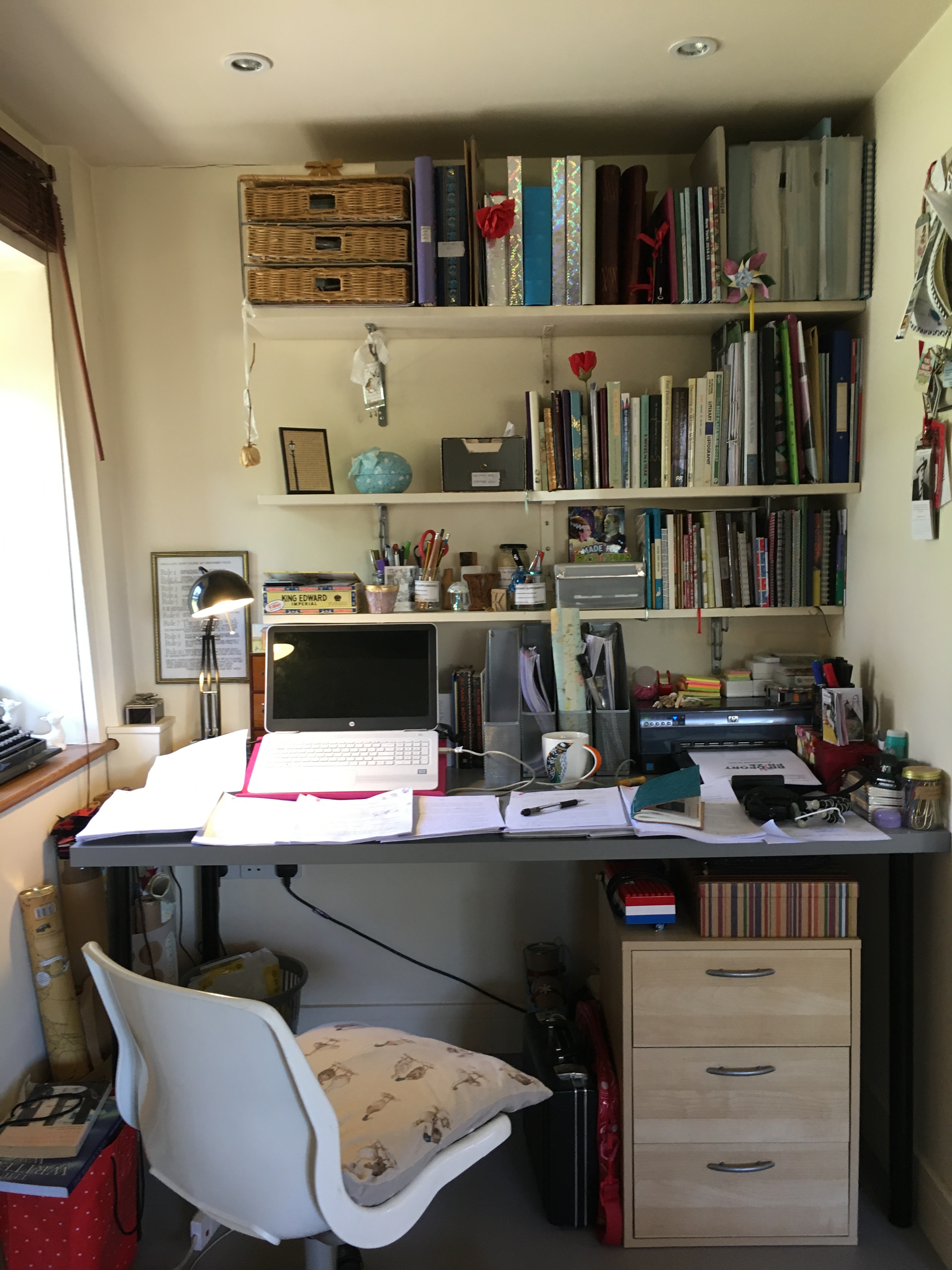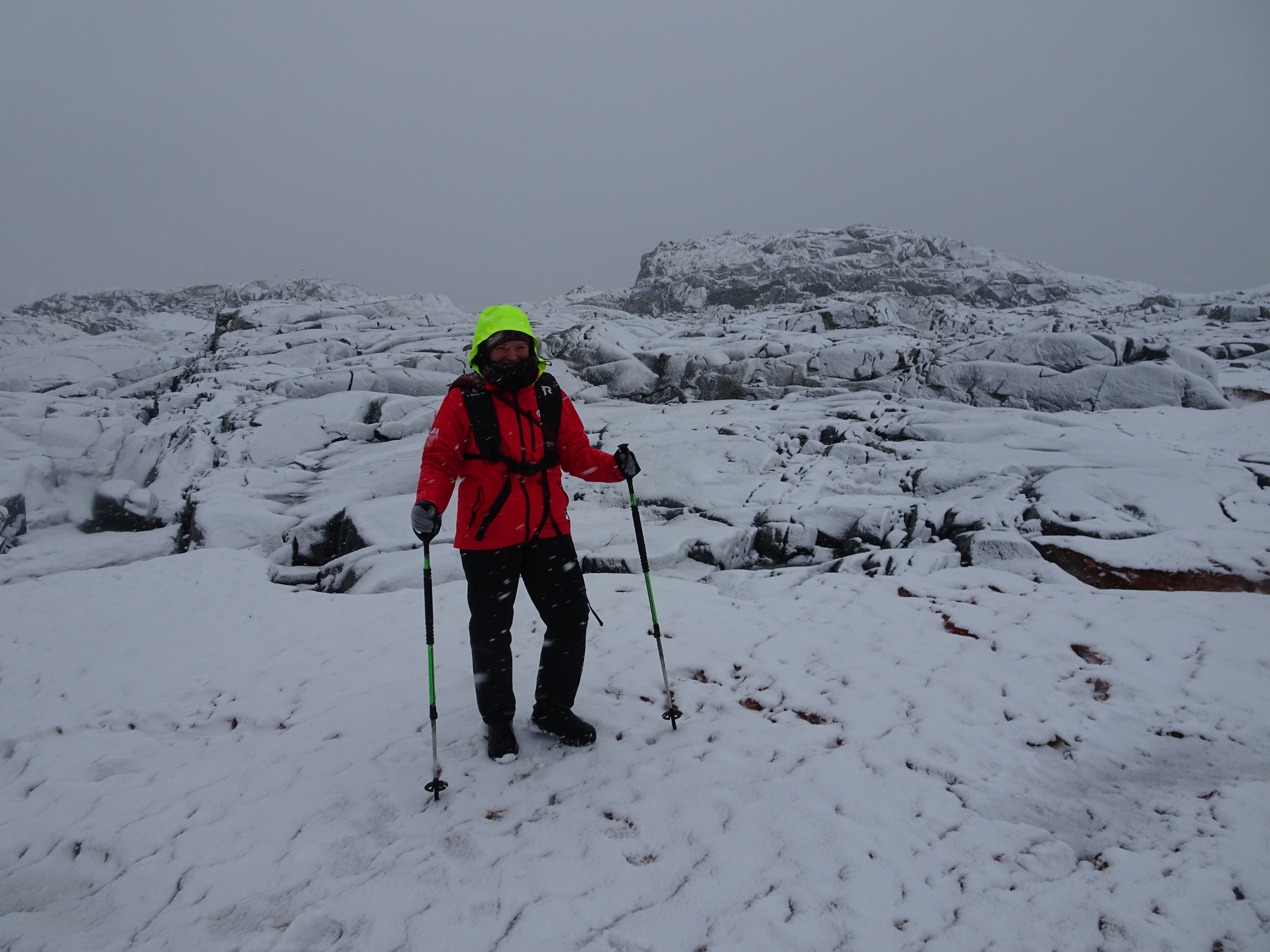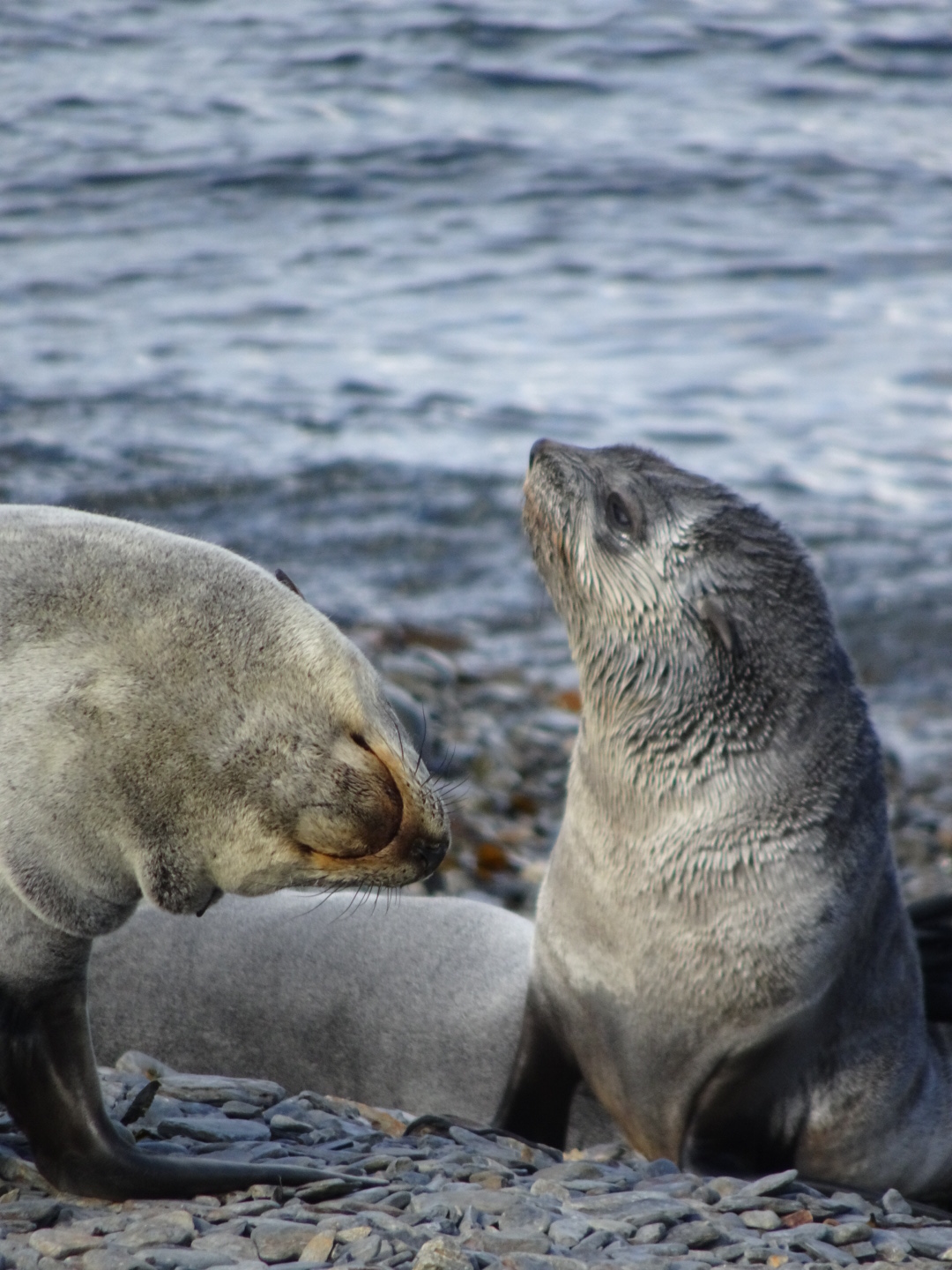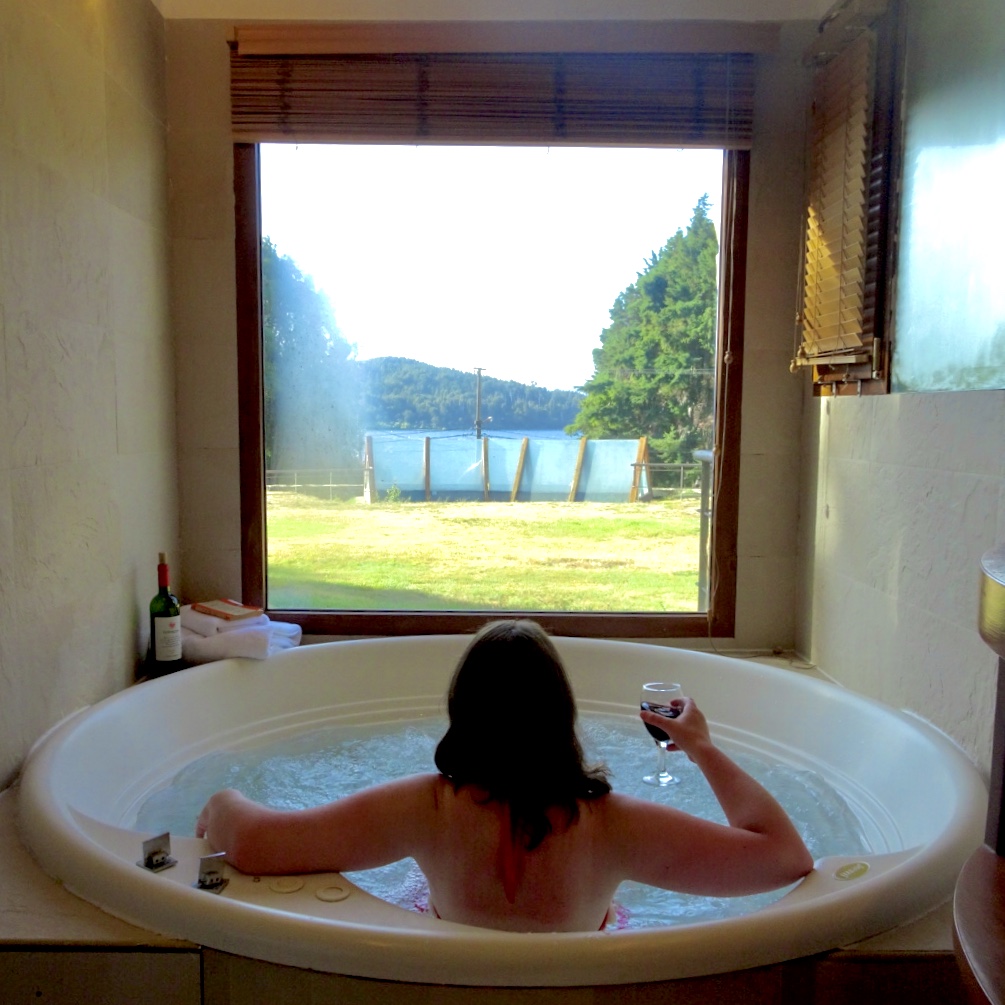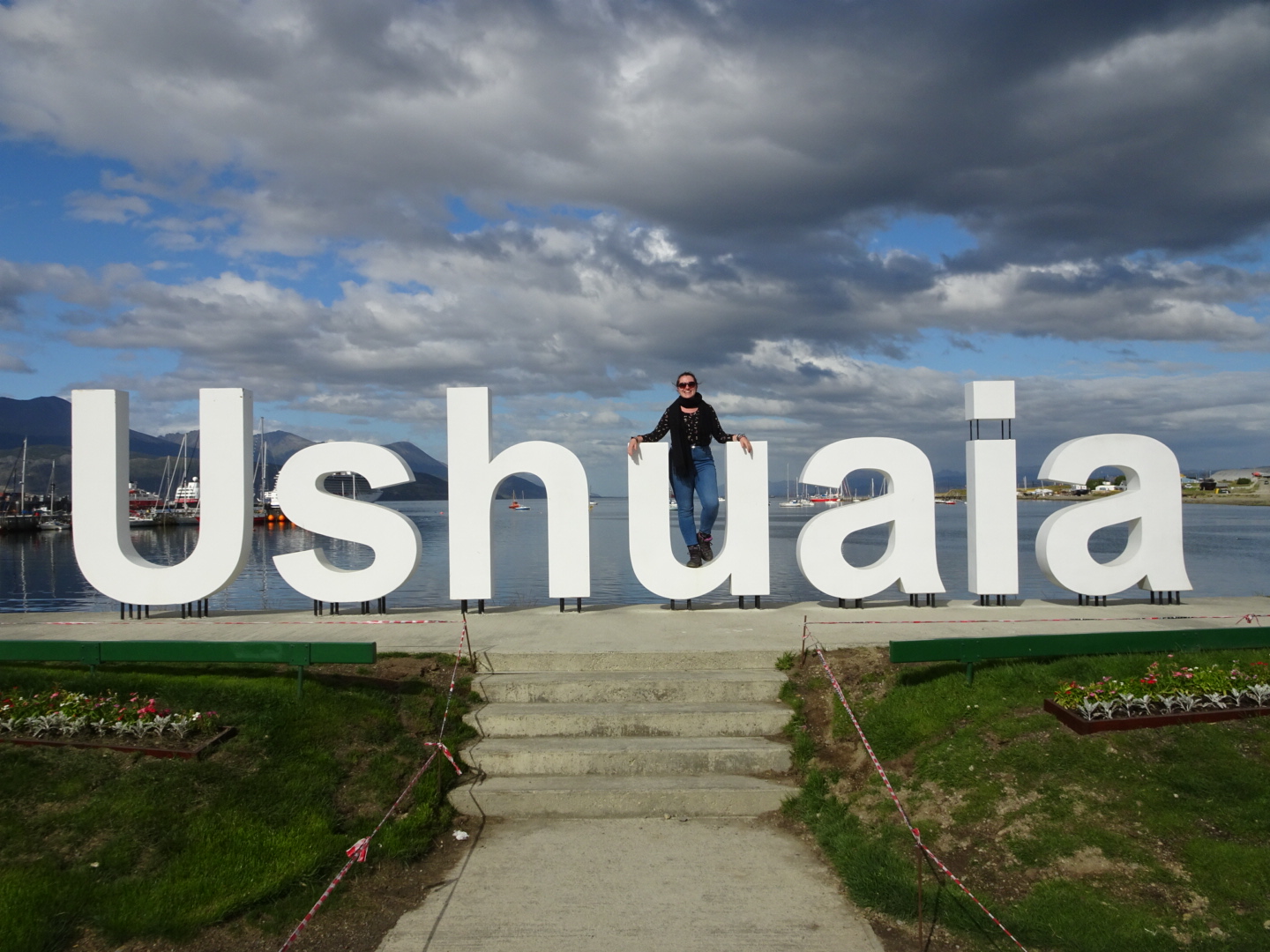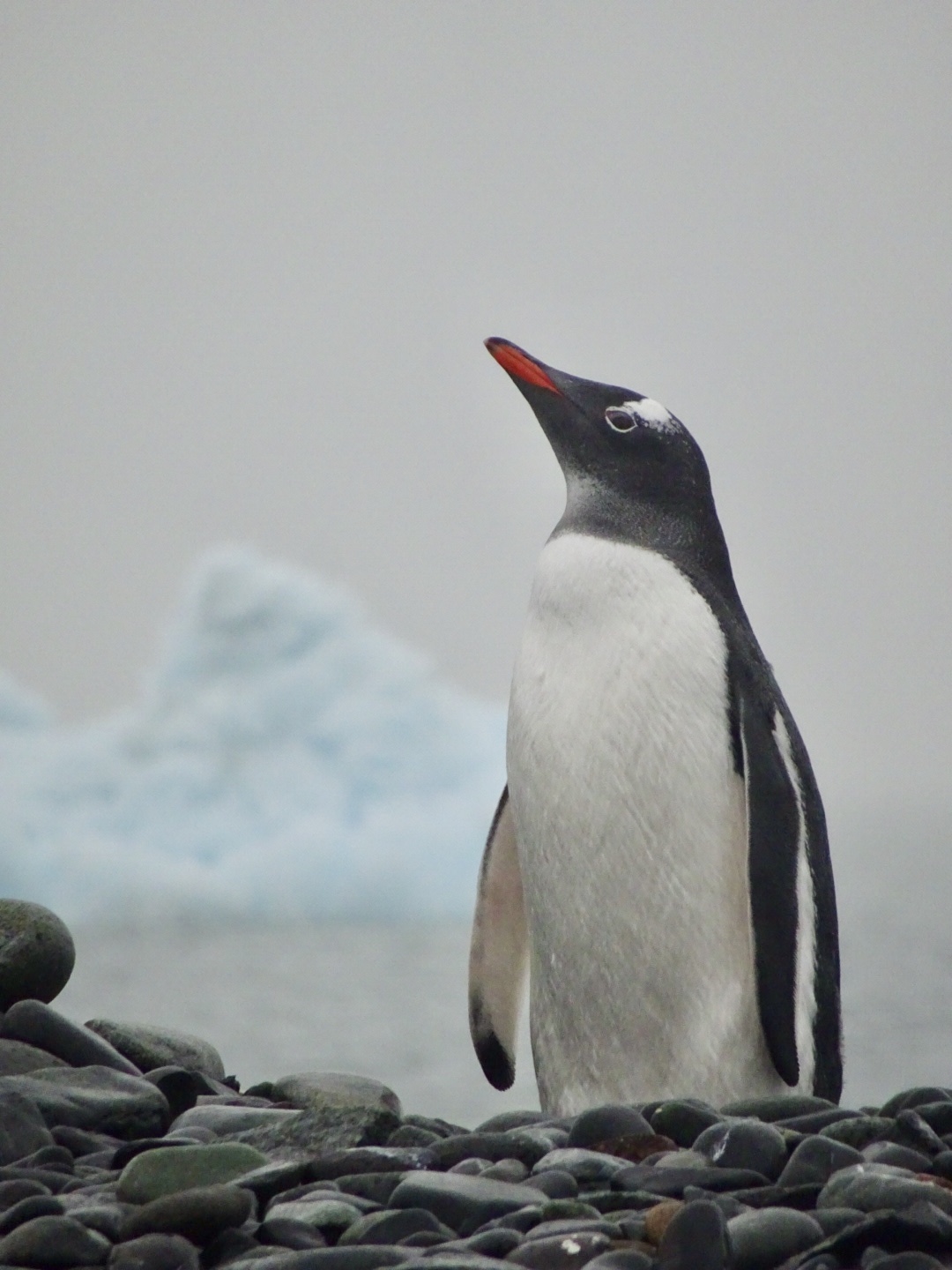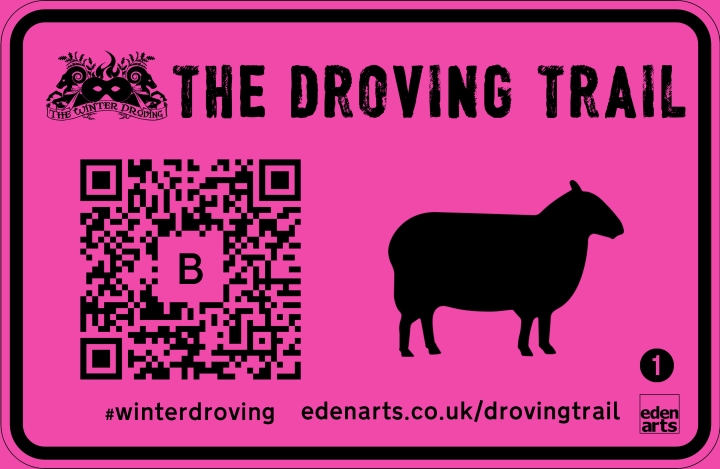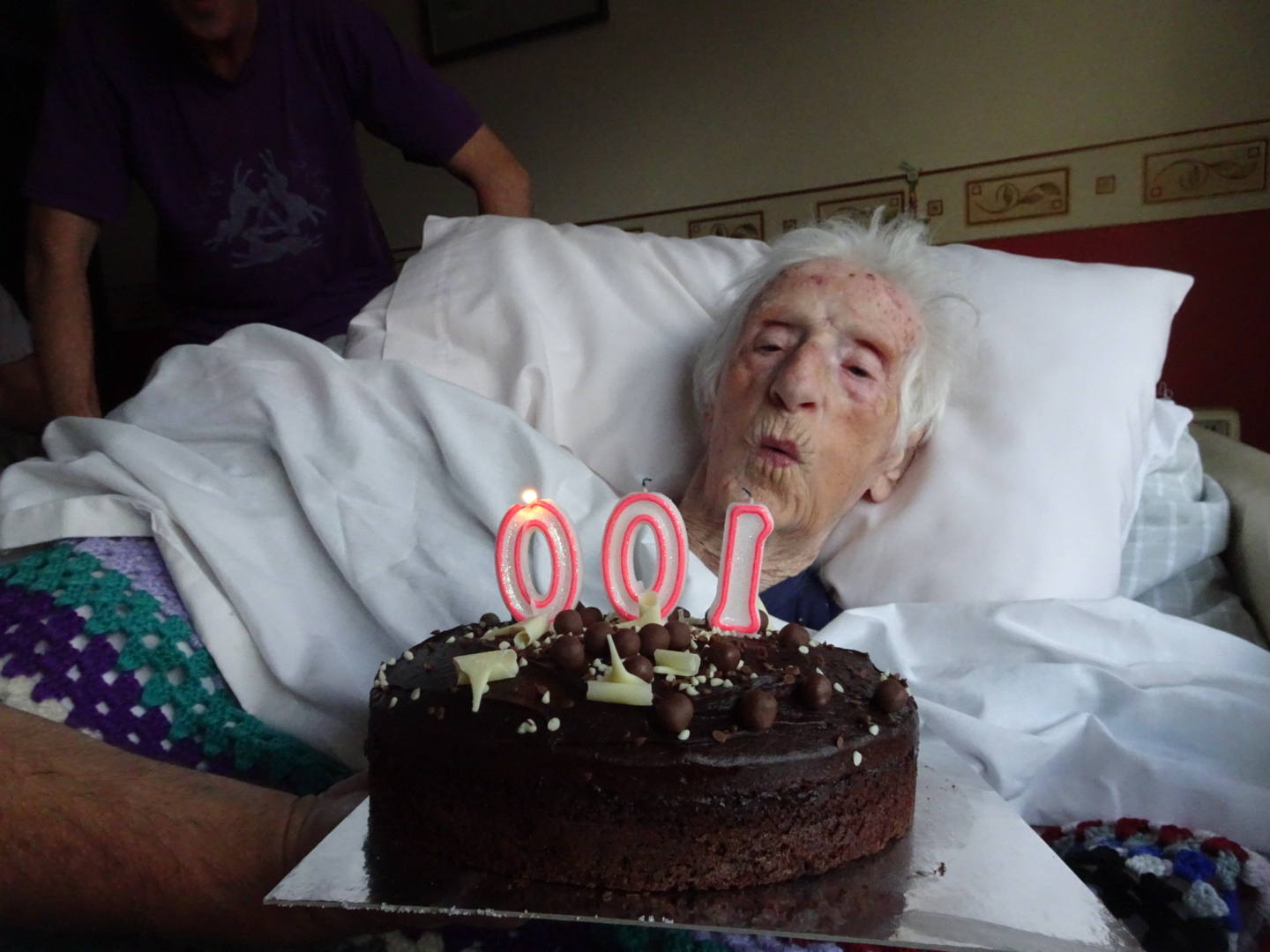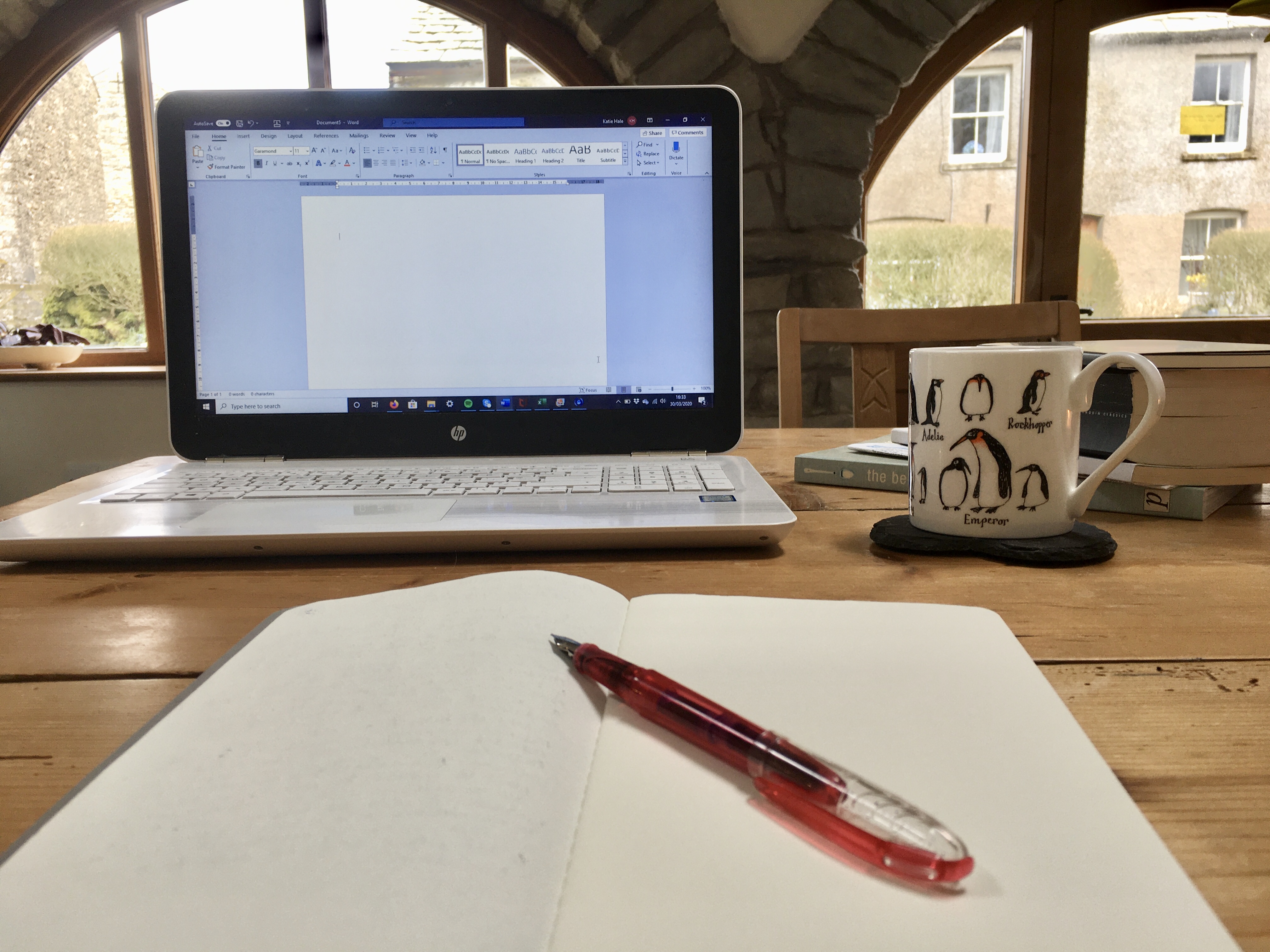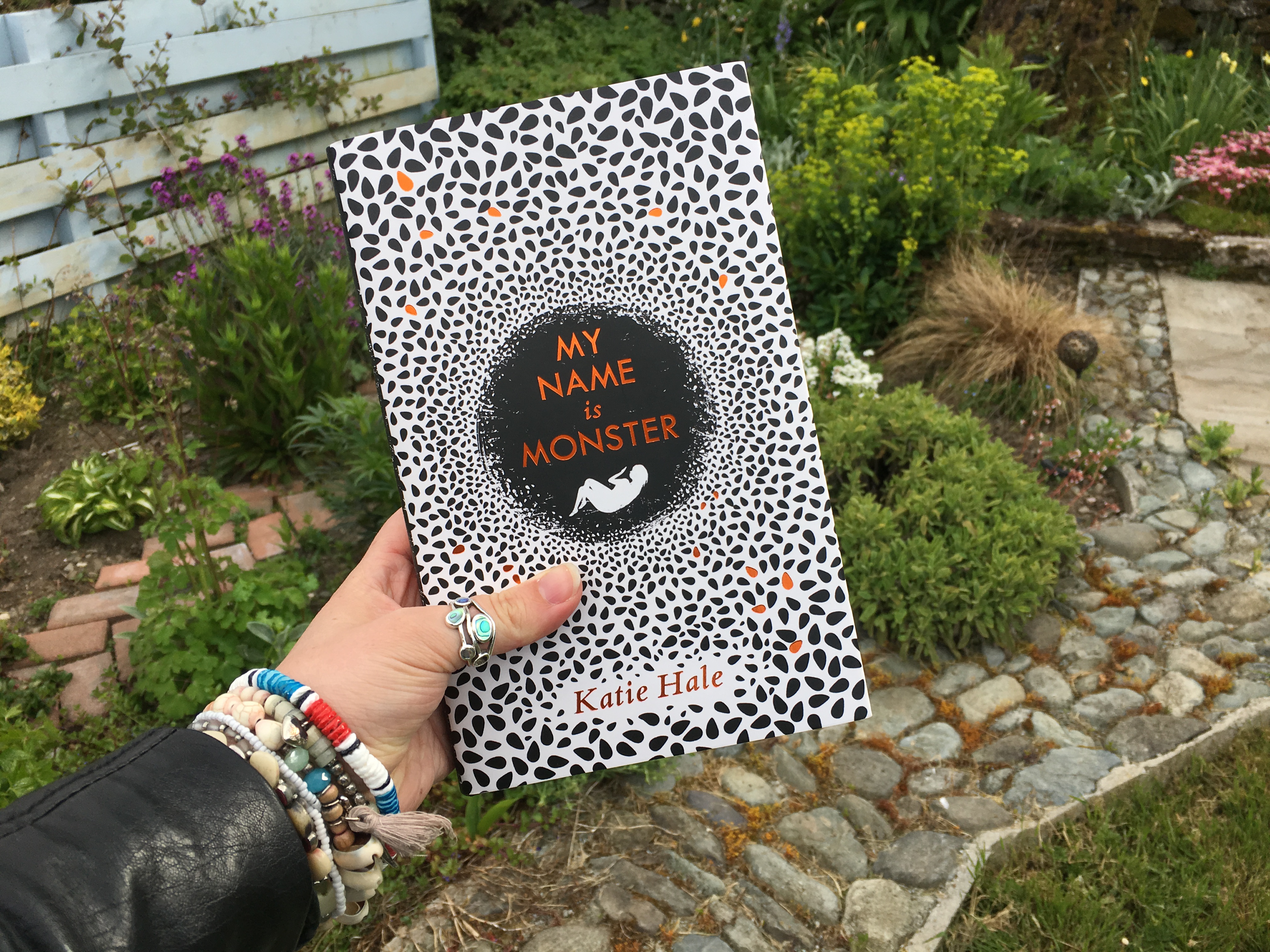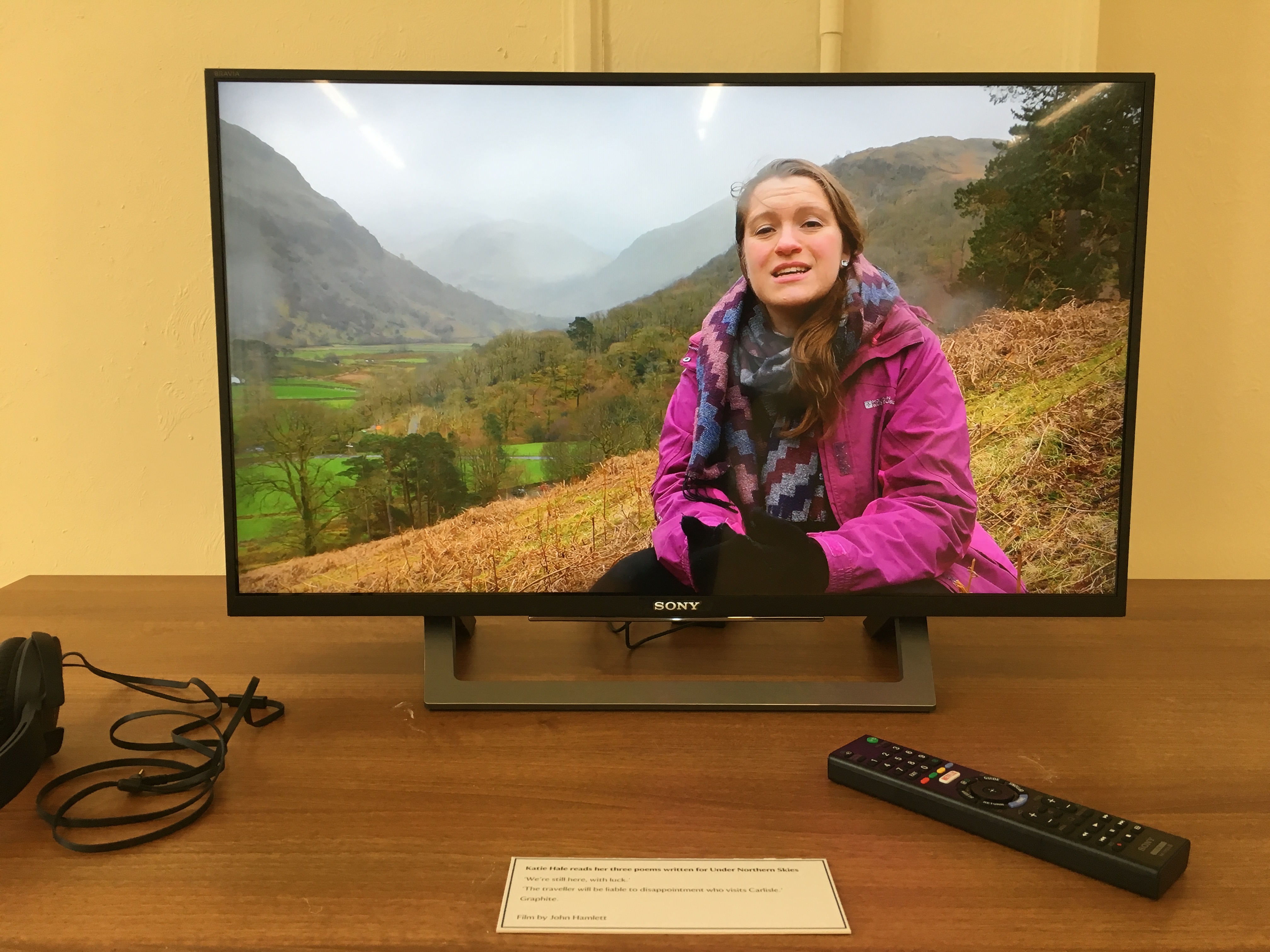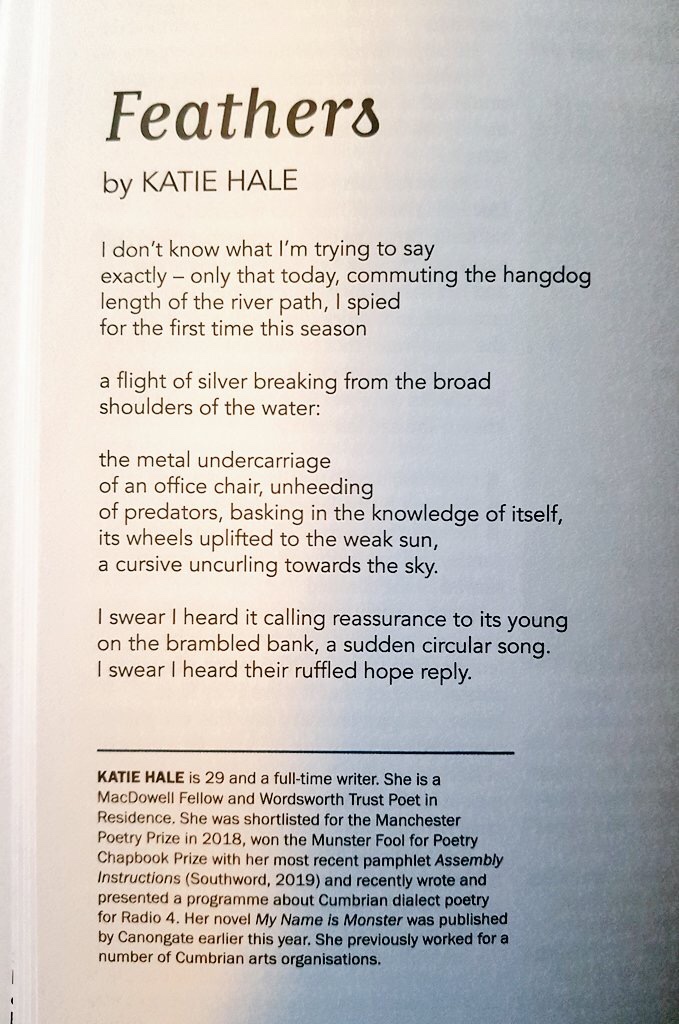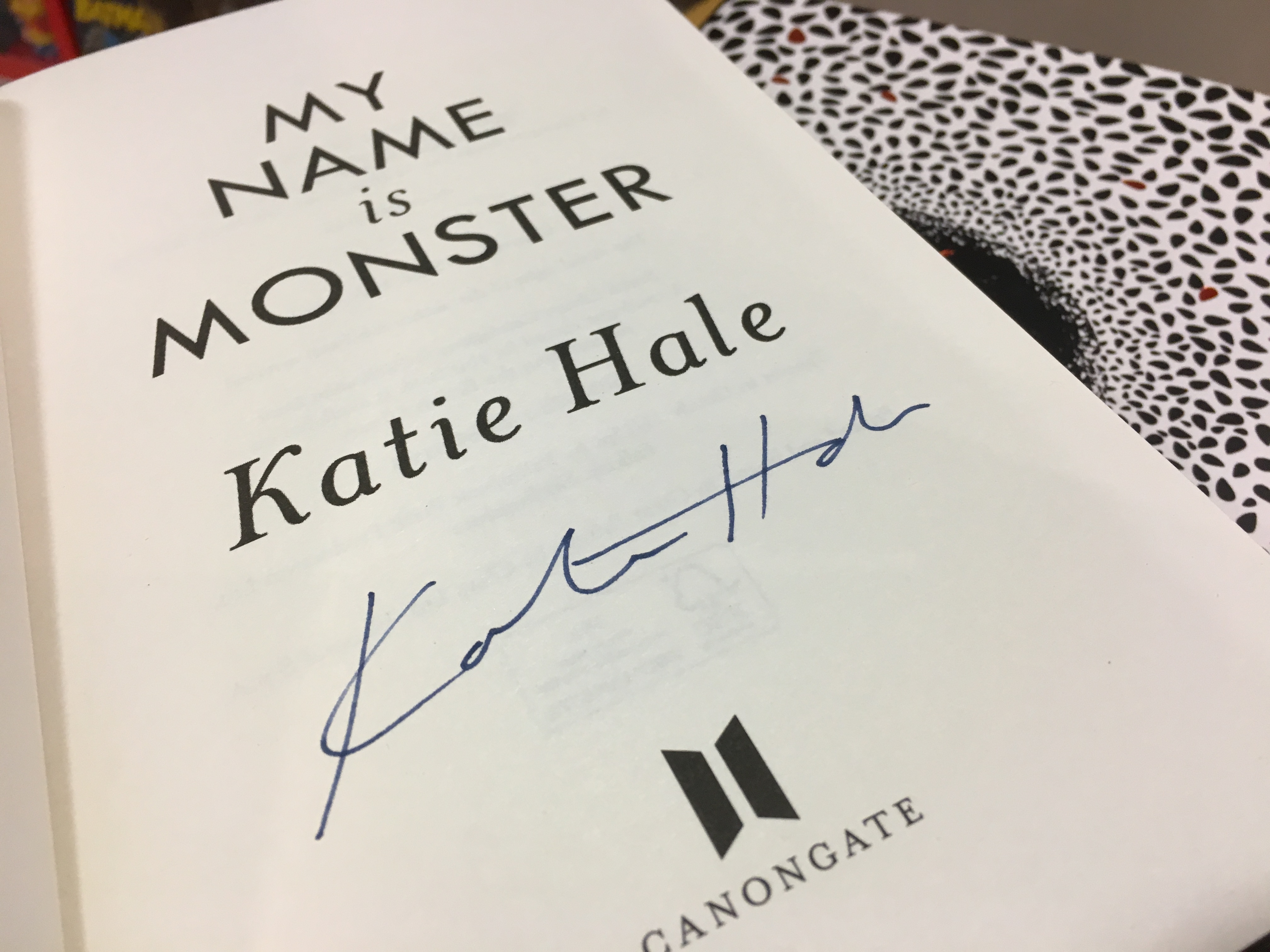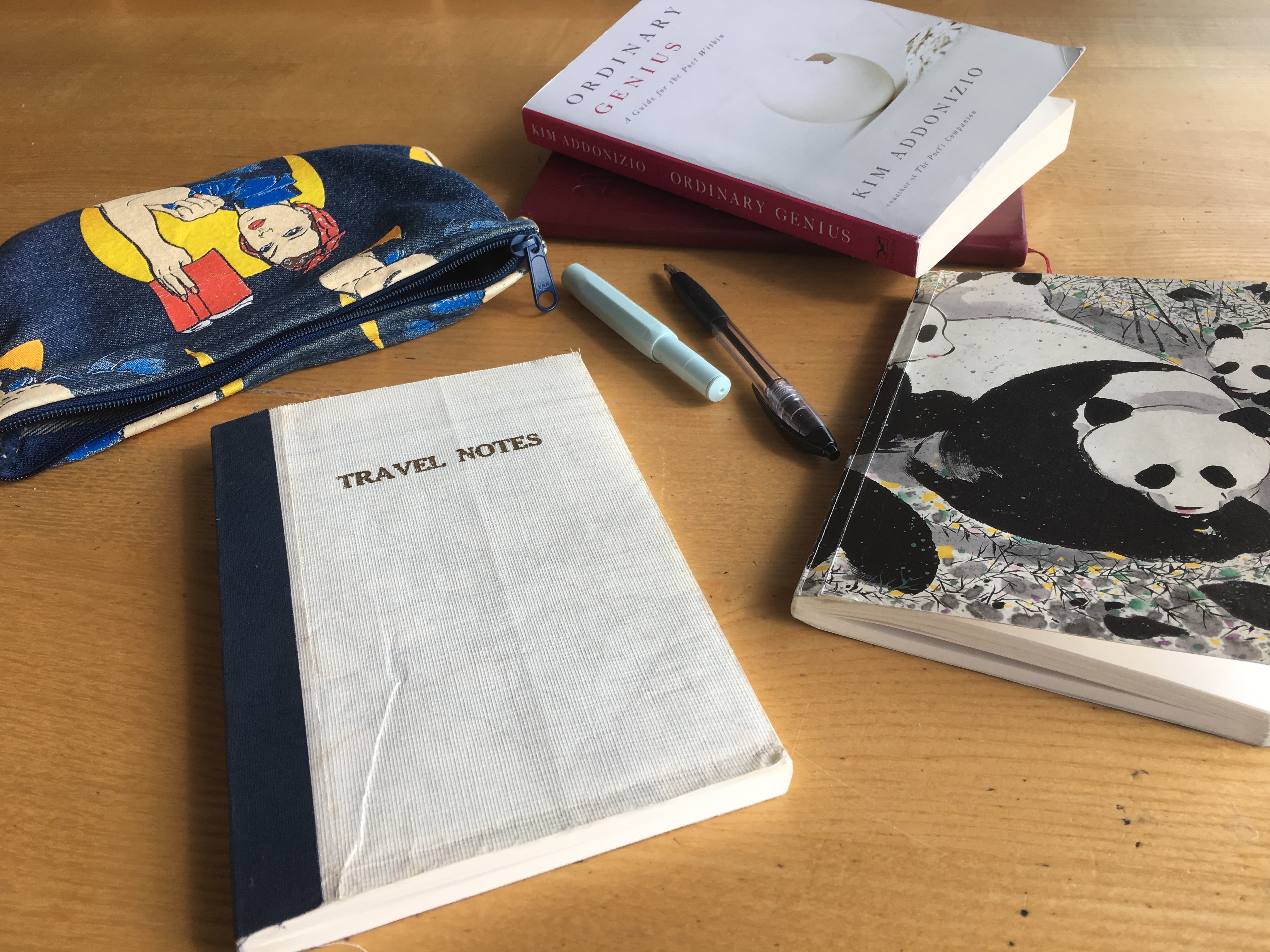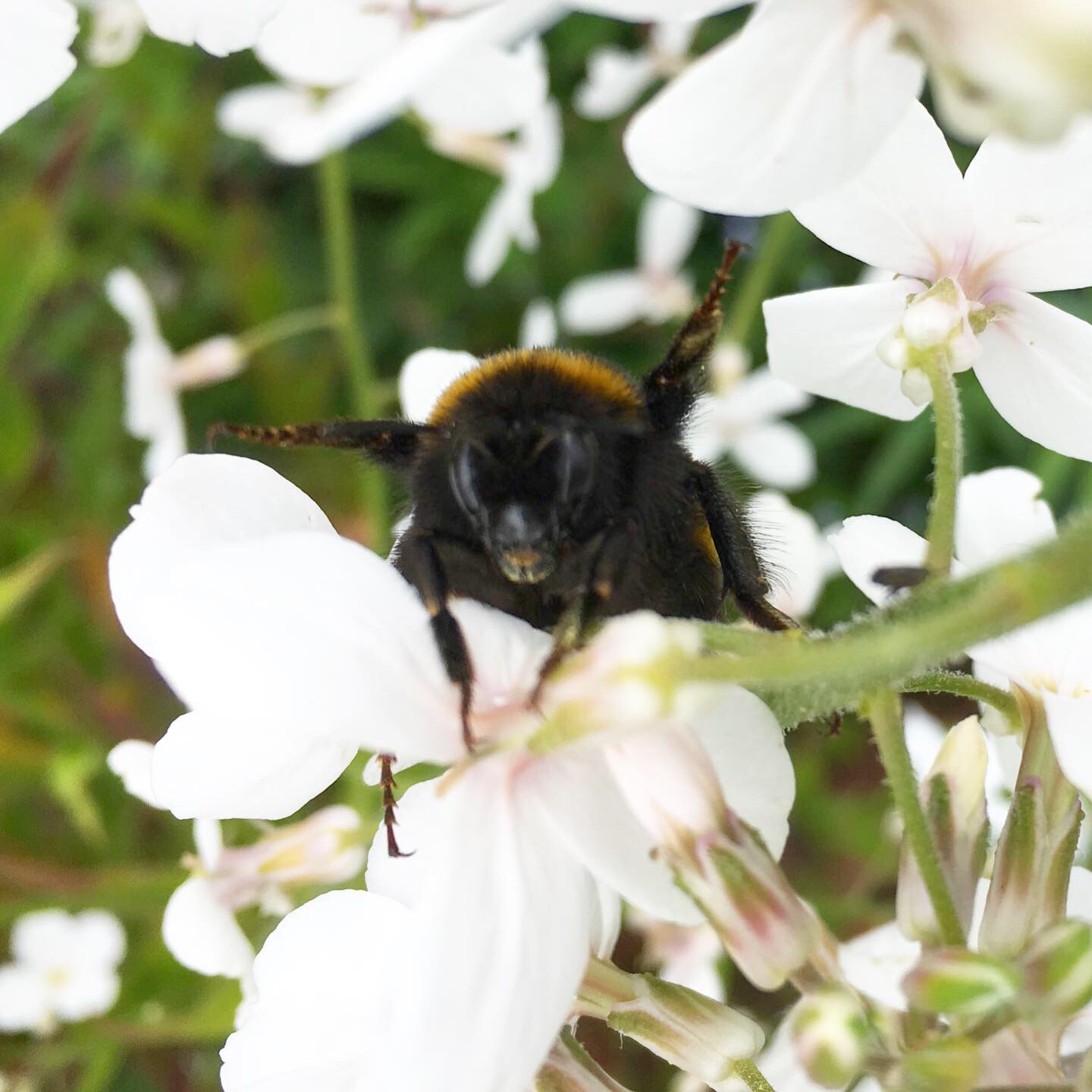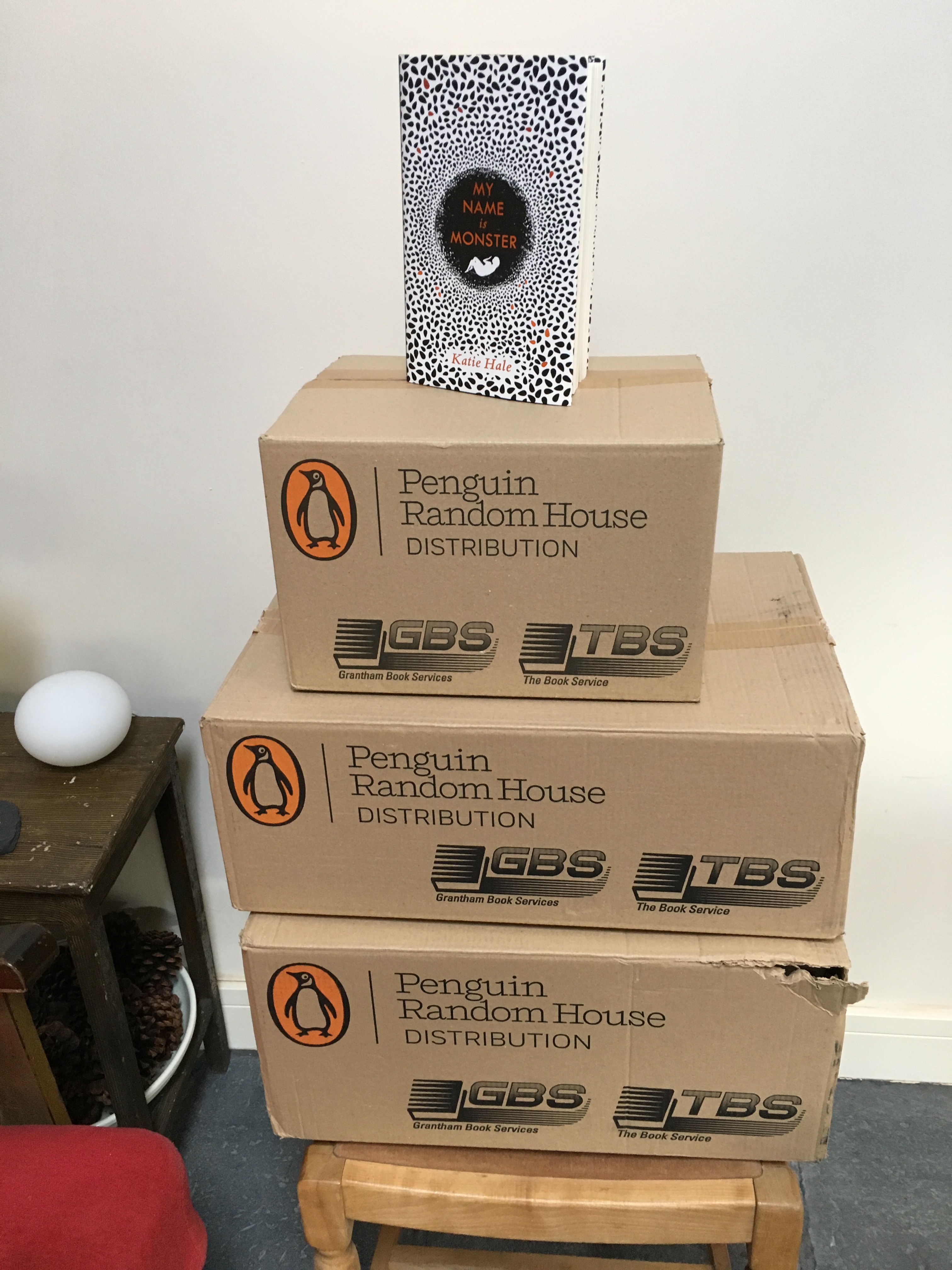I arrive at the castle one afternoon at the beginning of January. It’s only a couple of weeks after the shortest day, and the sun is already low behind the trees when I pull up at the unmarked double gate. There’s nothing to indicate that I’m in the right place – only a keypad, and a road winding away between the trees. I punch in the numbers I’ve been given in the email, and the gates swing slowly open.
Curling down the wooded driveway, it’s easy to think of yourself as descending not just into a valley, but into a story. Light flickers on the carpet of leaves to either side of the road, and the first signpost you reach is a small wooden notice, with one arrow pointing uphill towards the library, the other pointing down towards the castle.
When the road rounds its final bend, the castle comes into view: the red stone of the medieval keep looking warm and soft in the late afternoon light. Behind it, the valley drops away into a sway of dark green pines.
This is where I will spend the next month, in a room with a view of the turret, working on my poetry.

Mistake number one: I overpacked on warm jumpers, and underpacked on lighter clothing. Given that I was going to a medieval Scottish castle in the middle of winter, I expected it to be cold. I had visions of myself wrapped in a blanket, huddling over my desk and hugging a hot water bottle. Yeah. No. The castle has heating.
That isn’t to say that it never got cold – it did. It is still a medieval castle, after all. And it was still January. But when the heating kicked in to the full, it also got pretty warm – and I realised very quickly that I should have packed more layers.
I also should have packed fewer books.
In a way, it was good to catch up on my reading, and start making headway through my ever-growing to-be-read pile. But this also meant I couldn’t take full advantage of Hawthornden’s eclectic and highly extensive library.
Most former Fellows have donated at least one book. Then there are all the previous winner of the Hawthornden Prize, not to mention books that have just been bought by the castle, often at Edinburgh Book Festival events the Hawthornden Trust has sponsored. The result is three separate libraries, and numerous bookcases, stuffed with books.
How many libraries?
That’s right. Three.
The main library is actually in a purpose-built modern building a short walk up the bank from the castle itself. This consists of three main rooms (plus a warren of non-library private rooms, that I never quite summoned up the courage to go nosing around), and mostly contains books by former Fellows, and books that have been bought to keep the library in stock. There are fewer classics, and many more contemporary books, which reflects this.
The second library is in what gets called the Studio (it took me a while to figure out these were the same place), and is just beyond the Drawing Room in the main castle. This was by far my favourite place to work, because of the big table for spreading out my work, and because of the stunning views down the valley. The only downside was that, because it has huge windows on three sides, it got fairly cold in there, so that was one place I was grateful for those thick woolly jumpers.
We didn’t actually discover the third library till about a week into the residency. It was across the courtyard from the main part of the castle, through a heavy studded door in the medieval keep. Because it was in the oldest part of the building, and because it was the middle of January, it was quite dark and chilly, so I don’t think any of us really sat in there. It definitely felt as though, if there were ghosts in the castle, the Keep Library was where they would hang out.
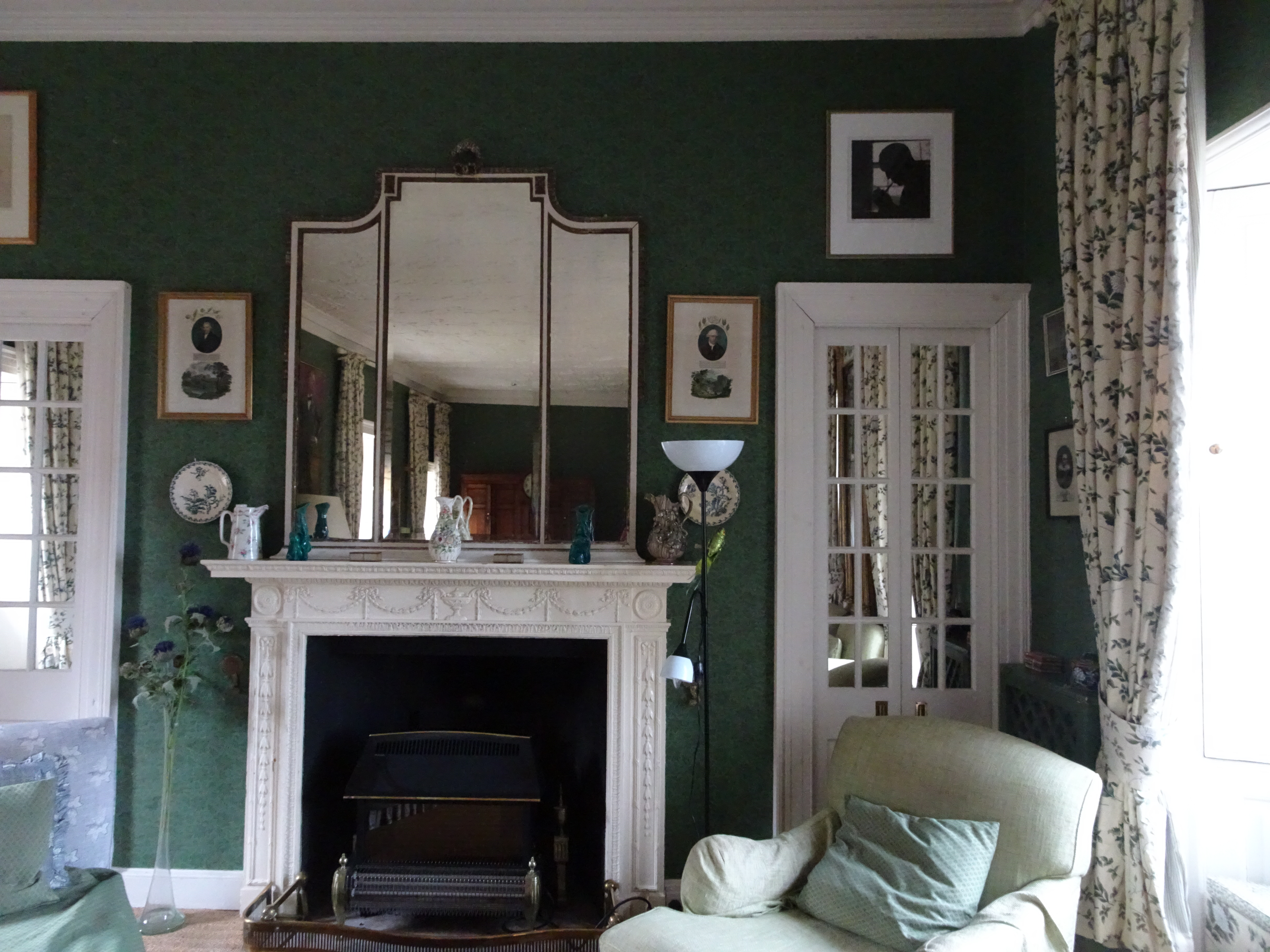
And the other rooms?
At times, being at Hawthornden felt so much like being in Agatha Christie adaptation, that I almost expected to hear a scream as someone discovered a mysteriously placed body. The Drawing Room was particularly good for this – partly because just calling it the Drawing Room was enough to summon up the image of Miss Marple, but also because we all gathered here before and after dinner every evening, to unlock the mysteries of each day’s silence.
Luckily, were just had the aesthetic of a Sunday afternoon murder mystery, and nobody actually went on a stealthy killing spree.
The bedrooms at Hawthornden are all names after famous writers (I was in Bronte), and are quite varied in terms of size and furnishing. They all have a desk, a chair and a bed. Mine was quite cosy, and felt like a fancier version of an old student room. A few of them were much bigger (the ones on the first floor even had double beds), and felt more like guest bedrooms – which is presumably what they used to be.
And what about the bathrooms, I hear you ask? Like most things in the castle, the plumbing is a mixture of old and modern. There were two bathrooms and a separate toilet on my floor, and another shower room on the floor below. One of the baths had taps from 1929, and was probably the deepest bath I’ve ever bathed in. Soaking in the bubbles, looking through the window at the turret, thinking about my novel, is probably the best way to spend an afternoon.
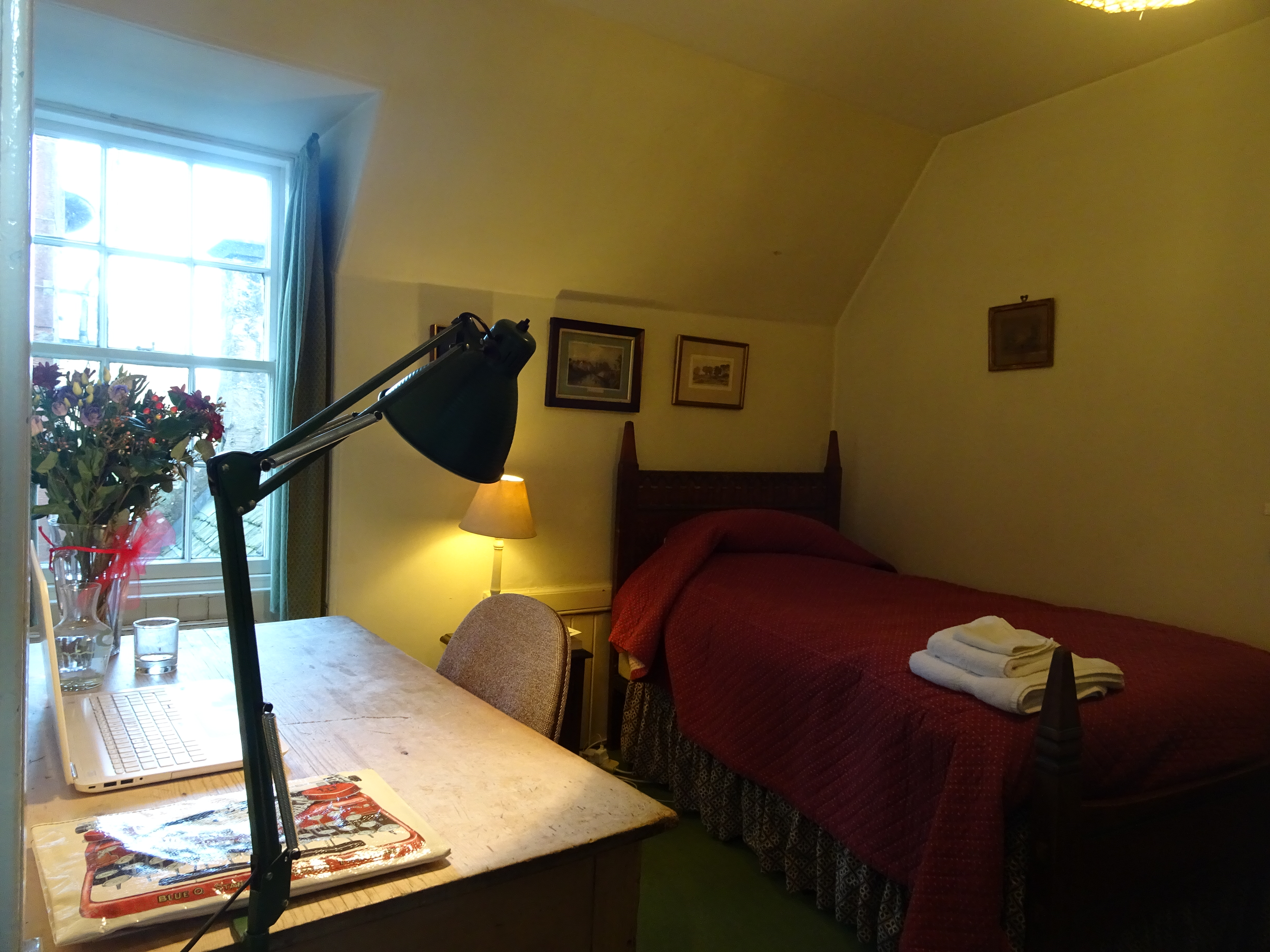
Let’s not forget the food.
One of the things I loved about the residency was the balance between structure and freedom. In many ways, my days were entirely my own, to do whatever I wanted – to read, to write, to edit, to wander the beautiful castle grounds. But the days were also punctuated by meals, which stopped me from lapsing into a totally nocturnal, structureless zombie, and ensured my days were as productive as they could possibly be. After all, it’s so much easier to work on a full stomach.
8am-9.30am: Breakfast
12-ish: Lunch (delivered to the rooms)
6.30pm: Drinks and gathering in the Drawing Room
7pm: Dinner
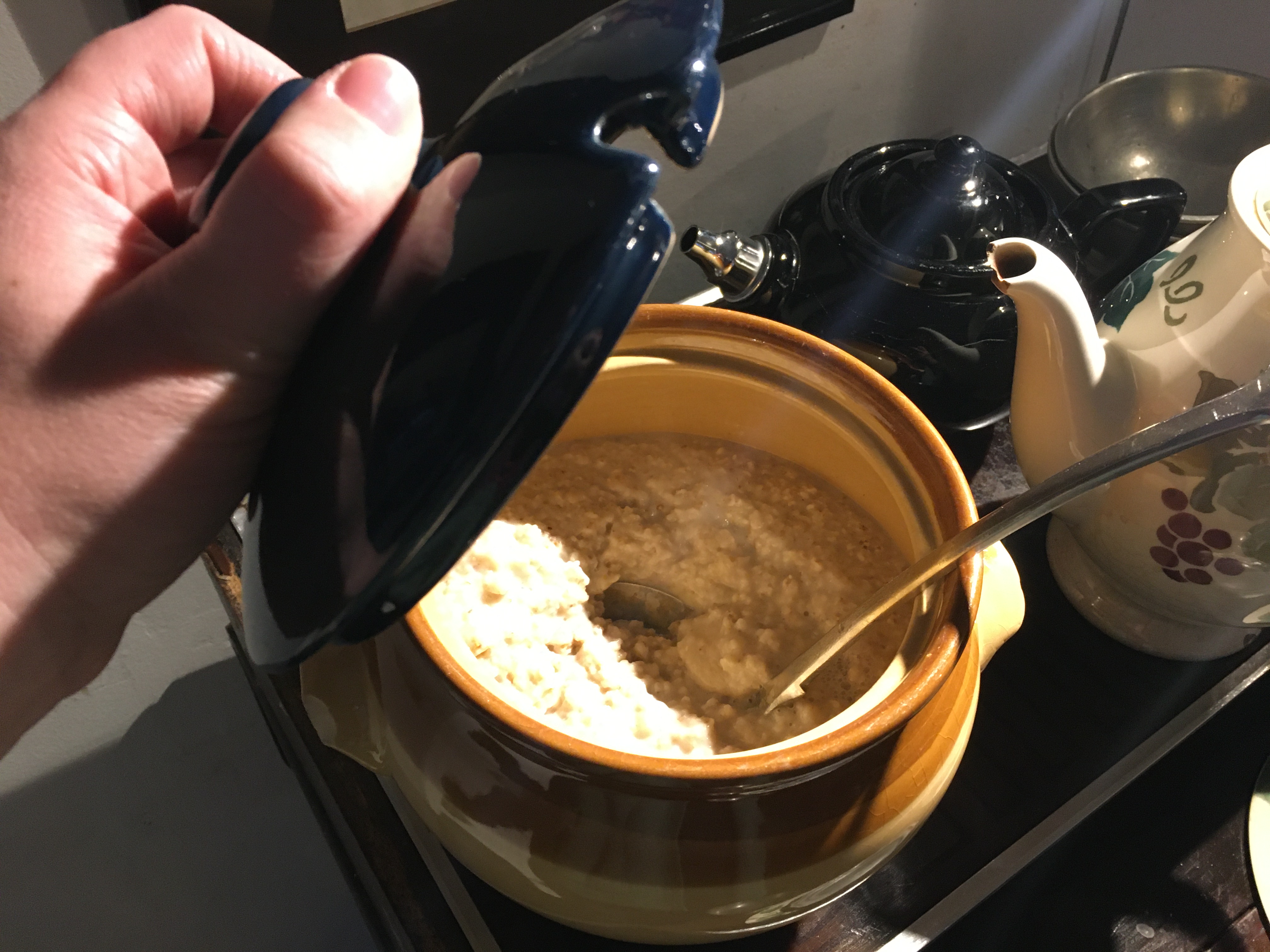
The food itself was delicious. I definitely put on weight at Hawthornden.
I had porridge for breakfast practically every morning (eaten from an old pewter bowl), and there was also toast, cereal and fruit if I’d wanted extra.
Lunch was delivered to the rooms every day in a Fortnum & Mason basket, left outside the door so as not to disturb the writing. It was soup, a choice of sandwiches (selected at breakfast), a choice of fruit, or carrot sticks with humus, and sometimes a Babybel. And, as if that wasn’t enough, there was always a plate of biscuits by the kettle, and a basket of fruit downstairs if we got peckish during the afternoons. (I think it would be impossible to go hungry at Hawthornden.)
Monday to Saturday, dinner was two courses (main & pudding), and was cooked by Ruth, the castle chef. Every single meal was so delicious, that I quickly had to make a rule for myself not to have second helpings. (Another writer had a similar rule, but hers was not to have thirds.)
On Sundays, it was a three-course dinner, served in the main dining room. Since it was January, we also had a Burns Night supper in there, complete with haggis and traditional speeches. As it happened, none of our group had dietary requirements, but I know that the castle does cater for different diets (vegetarian / vegan / gluten free etc).
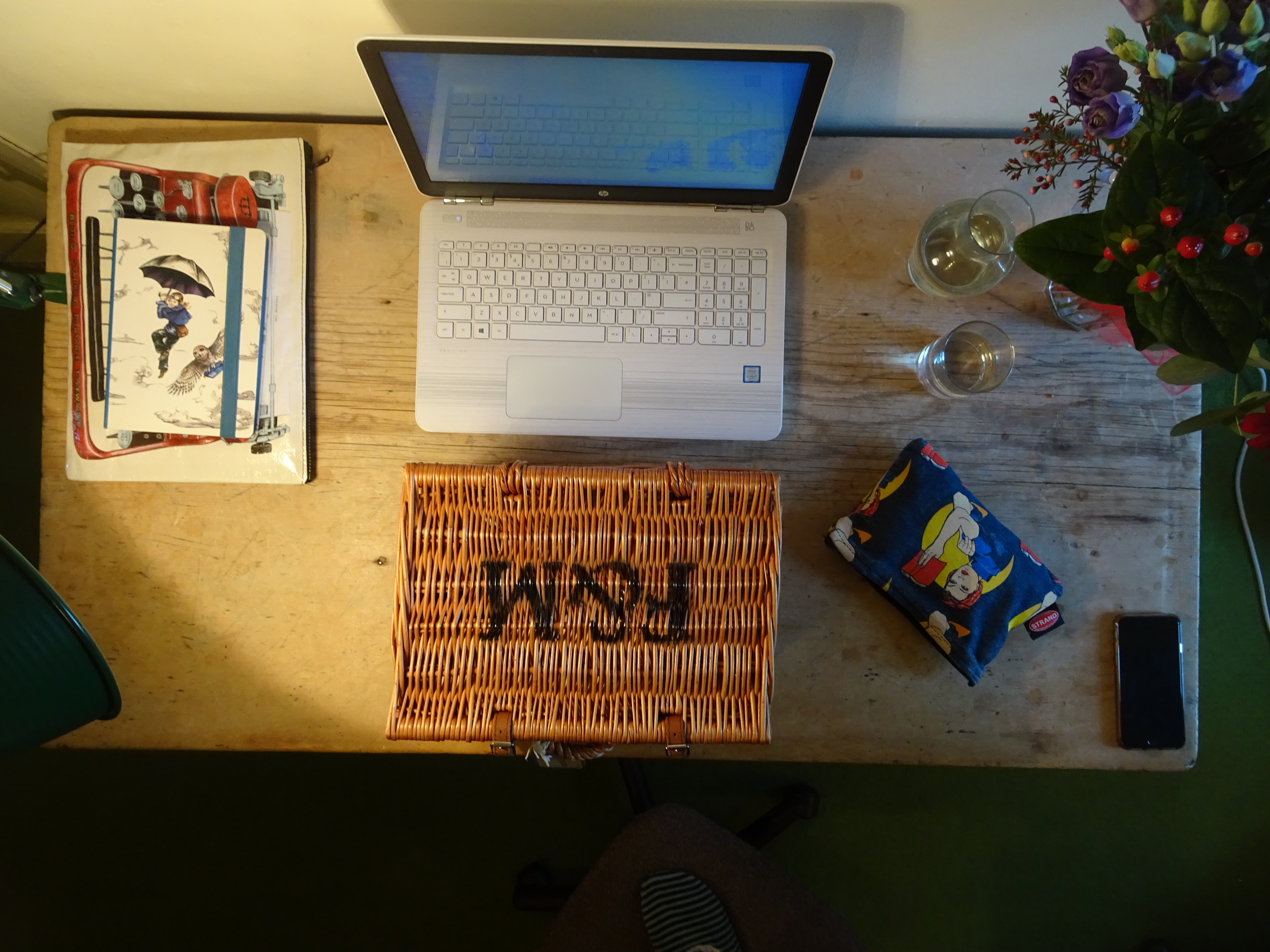
What about the silence?
The other way that the days are divided is by the boundary between sound and silence.
One of the things that is best known about the Hawthornden residency is its rule of silence during the day. From the end of breakfast at 9.30am, till just before dinner, at 6.30pm, ‘silence must be maintained throughout the Castle’. This is to ‘preserve the atmosphere of “peace in decent ease” which William Drummond enjoyed at Hawthornden’.
Before I arrived at the castle, I was pretty nervous about this. I’m so used to living on my own, and talking to myself while I work, or bursting into song from time to time, that I worried I’d forget myself and break the rules.
And what if I wanted to make myself a cup of tea, or I needed the loo during the day? Would my fellow writers all be irritated by the noise of the toilet flushing, or the kettle boiling, or just my footsteps in the corridor?
As it turned out, I needn’t have worried. While it’s true there were no long conversations during the day, we still all said hi if we passed each other on the way to make a cup of tea, and there was no weirdness about moving around the corridors and creaking the floorboards. It seemed to be the spirit of silence that counted, rather than actual silence.

The best bits:
Time to write: For me, the best bit of any residency is the time to focus on my writing. It’s being able to leave behind all the admin for a month – to set my out-of-office and know that nobody is expecting me to reply till the residency is over. At Hawthornden, this was even more pronounced, because there’s no WiFi at the castle, and even phone signal is patchy at best (though there are spots where you can get the odd bar – mostly in the Studio library, and sitting on the first floor toilet).
But it’s also all the extra time that appears in the day, when you don’t have to think about cooking, or washing up, or cleaning, or even doing laundry. The only thing you have to do is write.
Time to read, or walk in the woods: As well as doing the actual writing, it’s important to nourish the creative bit of the brain. Otherwise it’s like trying to draw water from an empty well. Luckily, Hawthornden was perfect for this. Not only did it give me time to catch up on my reading, but it’s also in the middle of beautiful woodland.
There are two walks in the castle grounds.
The Lady Walk is essentially a clifftop walk, from the castle to a set of carved stone steps, leading down to Wallis’s Cave, which is carved in the shape of a cross. It’s horrendously muddy, and quite high up in some places, so isn’t for the faint-hearted, or for bad weather days.
The Circle Walk takes about 25 minutes, and is, as its name suggests, a circle around the castle, which offers great views of the cliffs that the castle stands on, and can be extended to walk a bit further downstream along the river.
Inspiration: Let’s be honest: staying in a medieval castle, on the edge of a cliff, in the middle of a forest in Scotland – bumping into deer while out in the grounds, lying in the bath and listening to the peregrine falcons, and falling asleep listening to the wind whistling around the turret – it would be difficult not to be inspired. And that’s even without the Pictish caves underneath the castle, or the view along the valley, or the occasional bus trip into Edinburgh city centre.
Other writers: As if staying in a fairytale medieval castle wasn’t enough, I was also surrounded by other creative people. There’s something about being in a building, sitting in your room and working, knowing that everyone around you is sitting in their rooms and working, too. It creates a spirit of endeavour.
In the evenings, this was followed by some fascinating discussions (punctured, of course, with some general chats about TV series, or anecdotes about our days). There were so many days at Hawthornden where my mind felt like it was working overtime, and I was making connections left, right and centre. Which is probably why the residency felt so productive.
Ok then – what did I achieve?
It’s often difficult to tell the impact of a residency till long after it’s finished. The mind is still busy turning everything over, processing all the thoughts you had there, and filtering them away for future use. I certainly had more ideas for things during that month than I had time to actually write about – many of which I might never get time to write about. In terms of ideas and inspiration, the achievements of the residency could keep coming long into the future. (Or it could not. Who knows?)
But in terms of physical output, I worked on both poetry and fiction at Hawthornden.
Poetry: I wrote some new poems, and edited some older ones. Some of these edits were the odd tweak here and there, but some were massive overhauls – the sort of thing where I need a concentrated period of very focused time to actually work my head around everything that’s in the poem. On a larger scale, I also edited (and re-edited, and re-edited) my collection – something I definitely couldn’t have achieved in the same period of time at home, with emails begging to be answered, and the dishes piling up on the kitchen counter.
Fiction: And, because I needed some space in between edits of my poetry collection, I spent the middle two weeks of the residency planning, and starting to write, my second novel. I’m only about 8500 words in at the moment, so it’s still a long way off yet. But I wrote enough to get my feet under the table, which is what I wanted.
I also took time to read, during the residency, without feeling guilty that I ought to be doing something else. For once, January’s books were a nice balance of prose and poetry:
- The Secret Commonwealth, by Philip Pullman
- The Hoopoe’s Eye, by Mark Carson
- Festive Spirits, by Kate Atkinson
- Voyage of the Sable Venus, by Robin Coste Lewis
- White Papers, by Martha Collins
- Diary of a Somebody, by Brian Bilston
- Sisters, by Jennifer Copley
- The Wonder, by Emma Donoghue
- Sal, by Mick Kitson
- The Craft, ed. Rishi Dastidar

Any downsides?
Any residency has downsides. One of the downsides of Hawthornden was the amount of weight I put on due to how delicious all the food was. (Though the couple of glasses of wine with dinner each evening probably didn’t help. And admittedly, this was pretty much entirely my own fault.)
But in all seriousness – the Hawthornden Castle writers’ residency is quite an intensive experience. You’re staying in a castle with four other writers for a month, seeing each other every evening and most mornings, depending on what time you all make it down to breakfast. You’re all also working quite intensively during the days, so it could be easy for things to get fraught if you let them.
Luckily, we all got along very well, and were all quite amenable. We did have some pretty intense, and occasionally heated, discussions, but we always took great care to come out of them still friends, and to leave any intensity within a particular conversation, rather than letting it carry forward into our relationships with each other.
But I can imagine that, if there was somebody in the group who you didn’t get on with, or if there was a big personality clash, it could make it a very difficult month. I think it’s important to go into the residency being aware of this – and for everyone to make the effort to get along, and to respect each other’s views and personalities. And I’m so glad that this was the case for my group!

Would I go back?
Absolutely! Unfortunately, you have to wait five years before being allowed to apply again, so I won’t be heading back any time in the near future. But I’ll absolutely be recommending it to other writers!
How to apply:
EDIT: you can now apply for Hawthornden online! Check our their website for the new application process.
Also read: A Few Thoughts On: Writing Residencies



